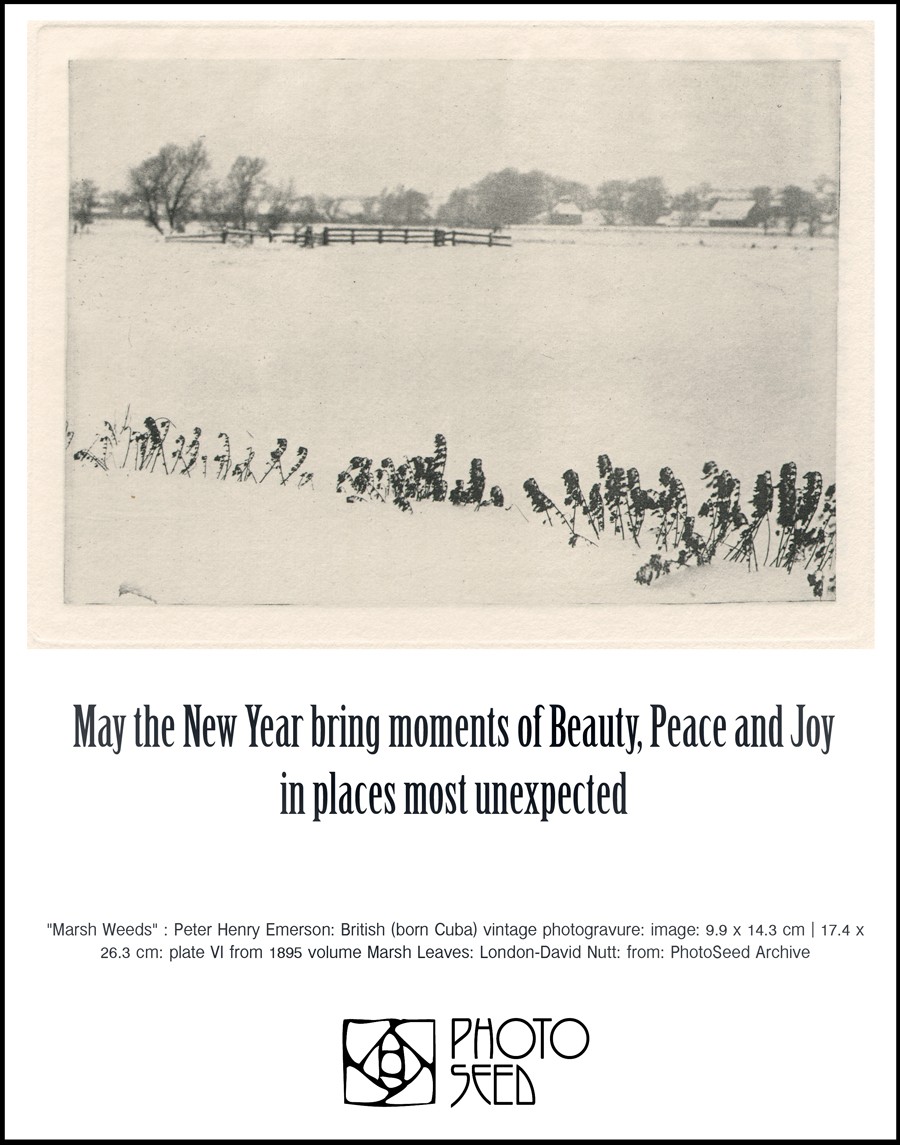Category
Significant Photographers
22 entries in this category | view all categories
Spring
Posted March 2018 in Fashion Photography, Significant Photographers
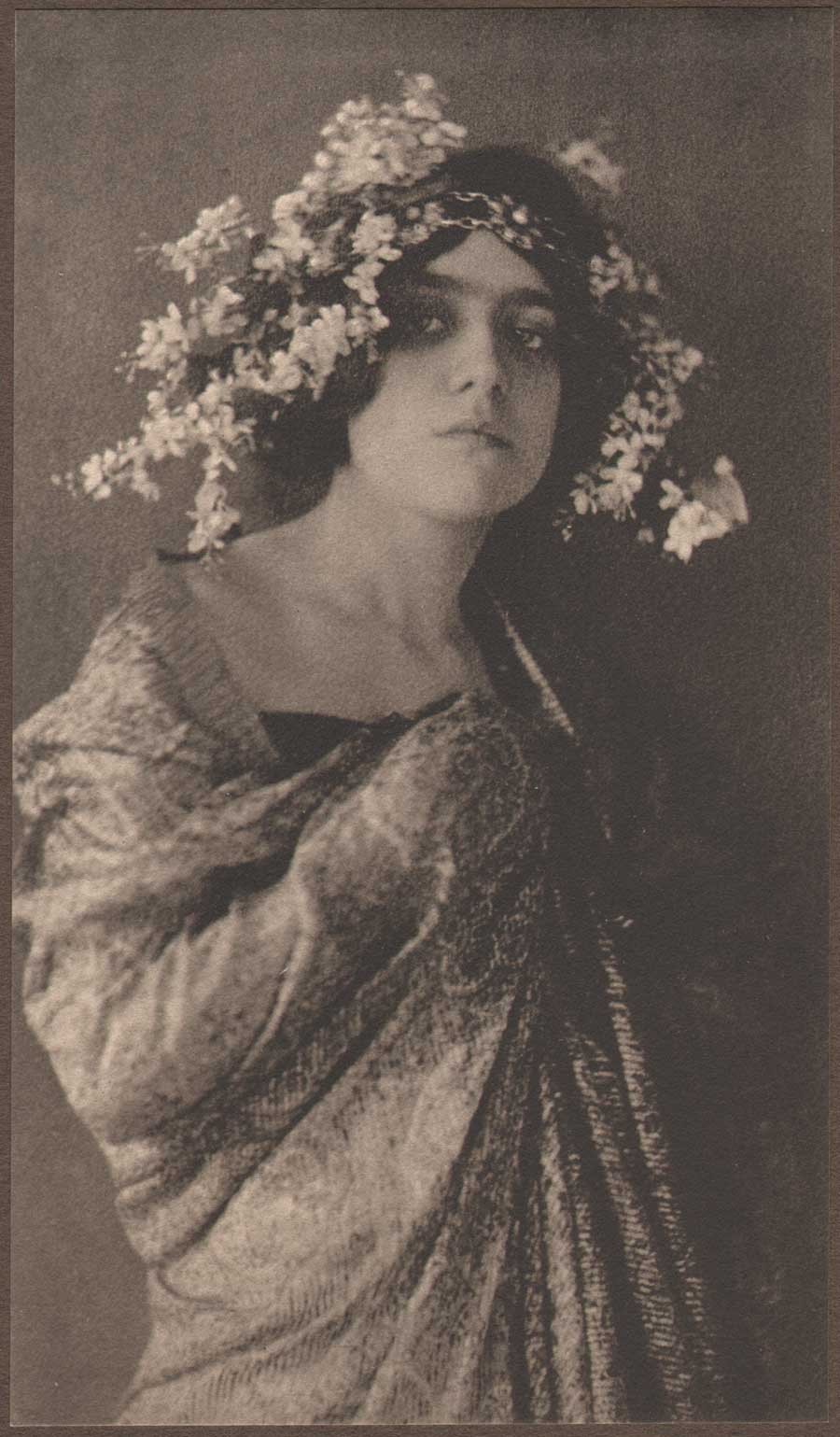 "Spring": Frances Benjamin Johnston, American:1864-1952: vintage photogravure: 1903: 20.6 x 11.9 | 35.5 x 27.7 cm: The work is one of 40 taken from the portfolio titled the "Vollgros Collection of Masterpieces of American Photographs" published in Chicago. The unknown model, with cherry or apple blossoms in her hair, bears a passing resemblance to the poster artist Ethel Reed. "Spring" also appeared as a halftone text illustration in the October, 1898 issue of Camera Notes (V.II, No. 2) published by the New York Camera Club. From: PhotoSeed Archive
"Spring": Frances Benjamin Johnston, American:1864-1952: vintage photogravure: 1903: 20.6 x 11.9 | 35.5 x 27.7 cm: The work is one of 40 taken from the portfolio titled the "Vollgros Collection of Masterpieces of American Photographs" published in Chicago. The unknown model, with cherry or apple blossoms in her hair, bears a passing resemblance to the poster artist Ethel Reed. "Spring" also appeared as a halftone text illustration in the October, 1898 issue of Camera Notes (V.II, No. 2) published by the New York Camera Club. From: PhotoSeed ArchiveSugaring
Posted March 2018 in Documentary Photography, Significant Photographers
“Of all that long season of snow, I remember most pleasantly the days that were sweetened with the sugar-making. When the sun was lifting his course in the clearing sky, and March had got the temper of the lamb, and the frozen pulses of the forest had begun to stir, the great kettle was mounted in the yard and all gave a hand to the washing of spouts and buckets.
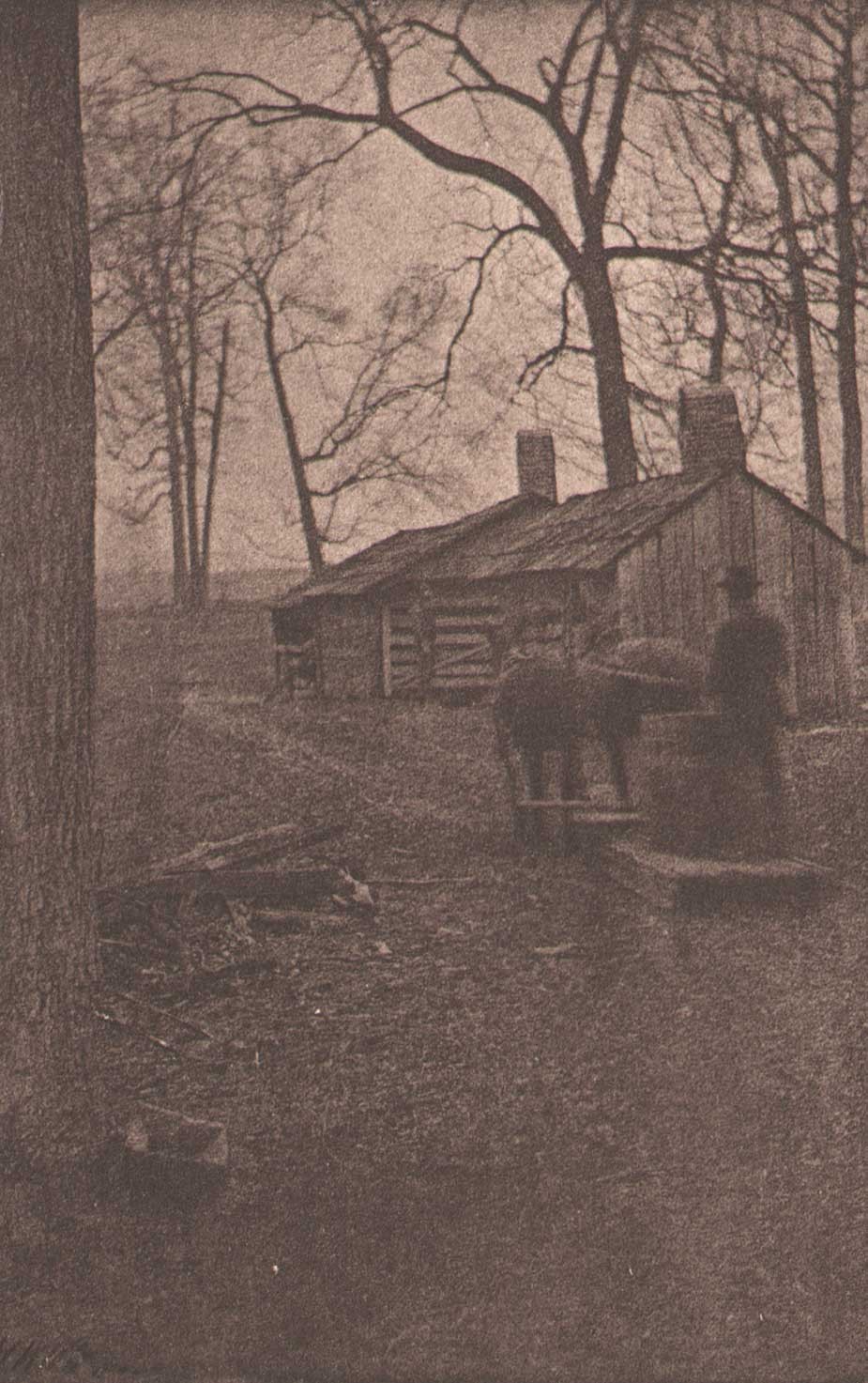 "The Sugar Camp": Clarence H. White, American: 1903: vintage hand-pulled photogravure. 12.2 x 7.7 | 20.0 x 13.9 cm. A team of horses pulls a wooden sled guided by a sugar camp worker and carrying a barrel of tree sap to a sugar shack in the distance. The gravure was included in a special edition of the best selling novel Eben Holden written by Irving Bacheller. PhotoSeed Archive
"The Sugar Camp": Clarence H. White, American: 1903: vintage hand-pulled photogravure. 12.2 x 7.7 | 20.0 x 13.9 cm. A team of horses pulls a wooden sled guided by a sugar camp worker and carrying a barrel of tree sap to a sugar shack in the distance. The gravure was included in a special edition of the best selling novel Eben Holden written by Irving Bacheller. PhotoSeed Archive
Then came tapping time, in which I helped carry the buckets and tasted the sweet flow that followed the auger’s wound. The woods were merry with our shouts, and, shortly, one could hear the heart-beat of the maples in the sounding bucket. It was the reveille of spring. Towering trees shook down the gathered storms of snow and felt for the sunlight. The arch and shanty were repaired, the great iron kettle was scoured and lifted to its place, and then came the boiling. It was a great, an inestimable privilege to sit on the robes of faded fur, in the shanty, and hear the fire roaring under the kettle and smell the sweet odor of the boiling sap.” - Irving Bacheller, from Eben Holden (1.)
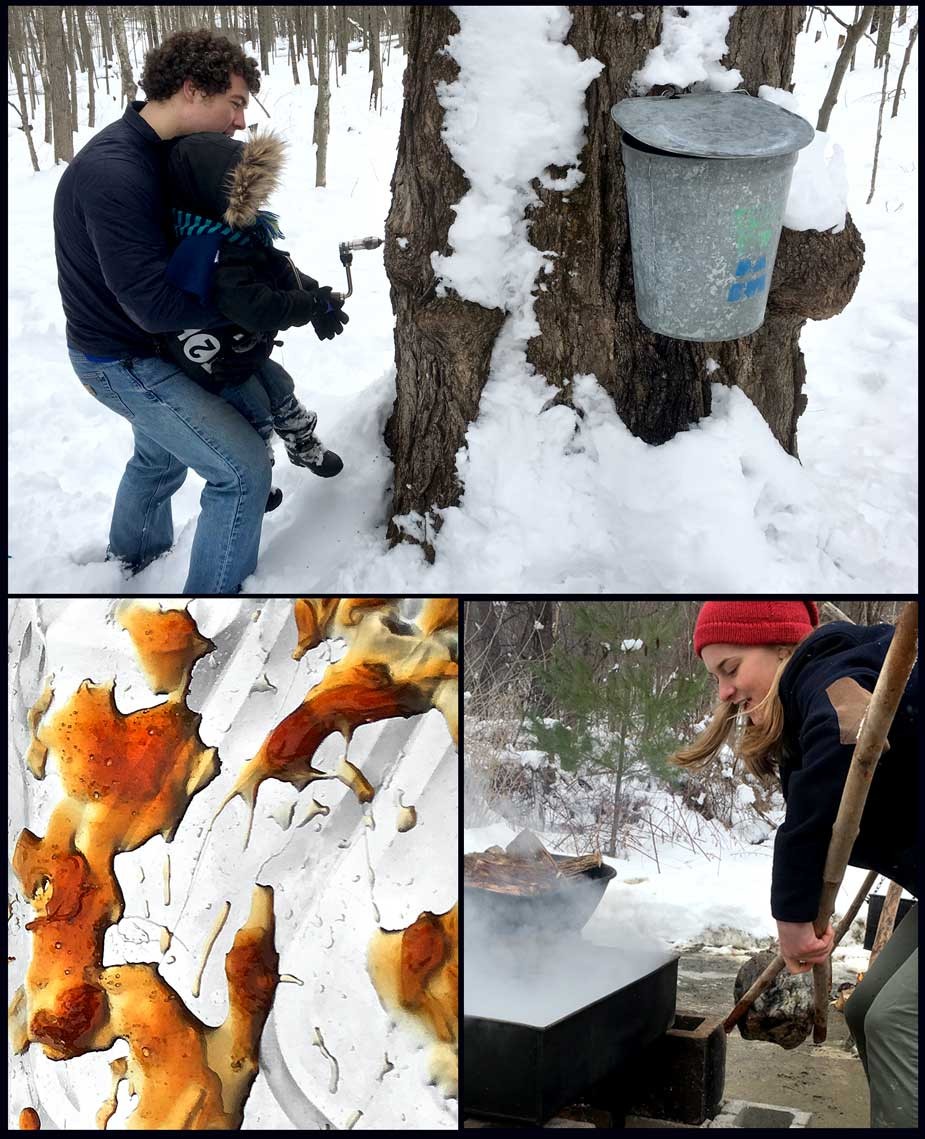 An annual harbinger of Spring, Maple Fest was held on the grounds of the 2600-acre Hopkins Memorial Forest located in Williamstown, MA on Saturday, March 10, 2018. The educational and fun event gave visitors the opportunity to experience the collection of maple sap, to its' being boiled down in a sugar shack to make maple syrup and the experience of tasting it as pure candy solidified after being drizzled onto fresh snow. Top: a young visitor holding a drill is guided by a Williams College student in tapping a sugar maple tree. An old-fashioned metal bucket at right is still used, with 40-50 gallons of sap collected and boiled down to make one gallon of syrup. Left: Amber, crystalline maple syrup is left behind on the bottom of a foil sheet that once held packed snow. Right: Historic evaporation methods to boil down maple sap were demonstrated, with another Williams student carefully maneuvering a hot rock taken from coals that would be transferred to a hollowed-out log- the method Native Americans first used to turn sap into syrup. All: David Spencer for PhotoSeed Archive
An annual harbinger of Spring, Maple Fest was held on the grounds of the 2600-acre Hopkins Memorial Forest located in Williamstown, MA on Saturday, March 10, 2018. The educational and fun event gave visitors the opportunity to experience the collection of maple sap, to its' being boiled down in a sugar shack to make maple syrup and the experience of tasting it as pure candy solidified after being drizzled onto fresh snow. Top: a young visitor holding a drill is guided by a Williams College student in tapping a sugar maple tree. An old-fashioned metal bucket at right is still used, with 40-50 gallons of sap collected and boiled down to make one gallon of syrup. Left: Amber, crystalline maple syrup is left behind on the bottom of a foil sheet that once held packed snow. Right: Historic evaporation methods to boil down maple sap were demonstrated, with another Williams student carefully maneuvering a hot rock taken from coals that would be transferred to a hollowed-out log- the method Native Americans first used to turn sap into syrup. All: David Spencer for PhotoSeed Archive
1. Eben Holden: Chapter VIII: Boston, Lothrop Publishing Company: 1903: p. 95
Now Playing: White's World
Posted October 2017 in Exhibitions, History of Photography, Significant Photographers
The following are a few snaps from my recent attendance at the symposium: Rethinking “Pictorialism” held in conjunction with the exhibition now playing at the Princeton University Art Museum in New Jersey: Clarence H. White and His World: The Art & Craft of Photography, 1895-1925. On exhibit at Princeton through January 7, 2018, the show will then travel to the Davis Museum at Wellesley College (MA) from 02-07-18 to 06-03-18; The Portland Museum of Art in Maine from 06-30-18 to 09-16-18 and the Cleveland Museum of Art in OH from 10-21-18 to 01-21-19.
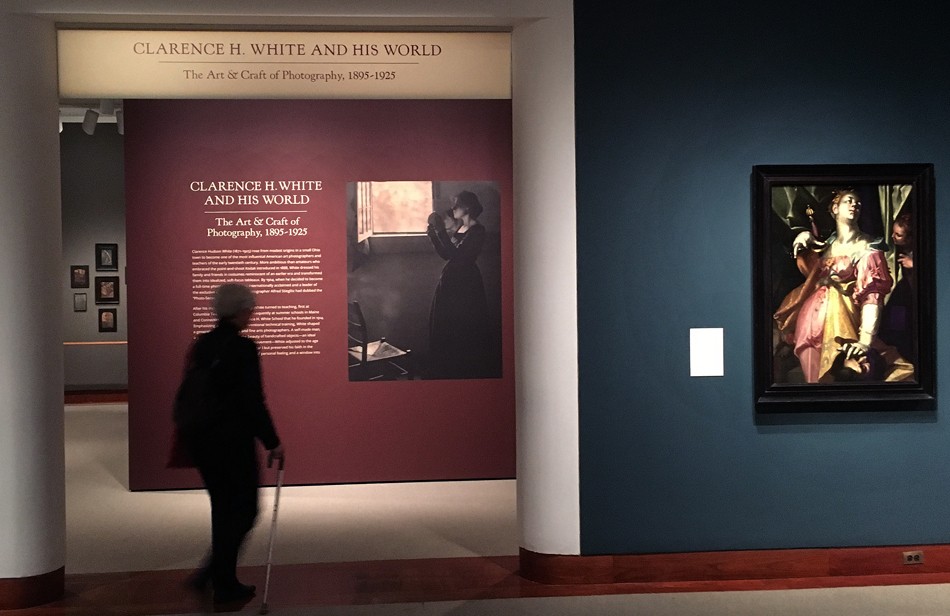 A visitor enters the exhibit "Clarence H. White and His World: The Art & Craft of Photography, 1895-1925" at the Princeton University Art Museum during the October, 2017 weekend in which a symposium devoted to Rethinking "Pictorialism" in context with White's work and those of his contemporaries was discussed. Photo by David Spencer for PhotoSeed Archive.
A visitor enters the exhibit "Clarence H. White and His World: The Art & Craft of Photography, 1895-1925" at the Princeton University Art Museum during the October, 2017 weekend in which a symposium devoted to Rethinking "Pictorialism" in context with White's work and those of his contemporaries was discussed. Photo by David Spencer for PhotoSeed Archive.
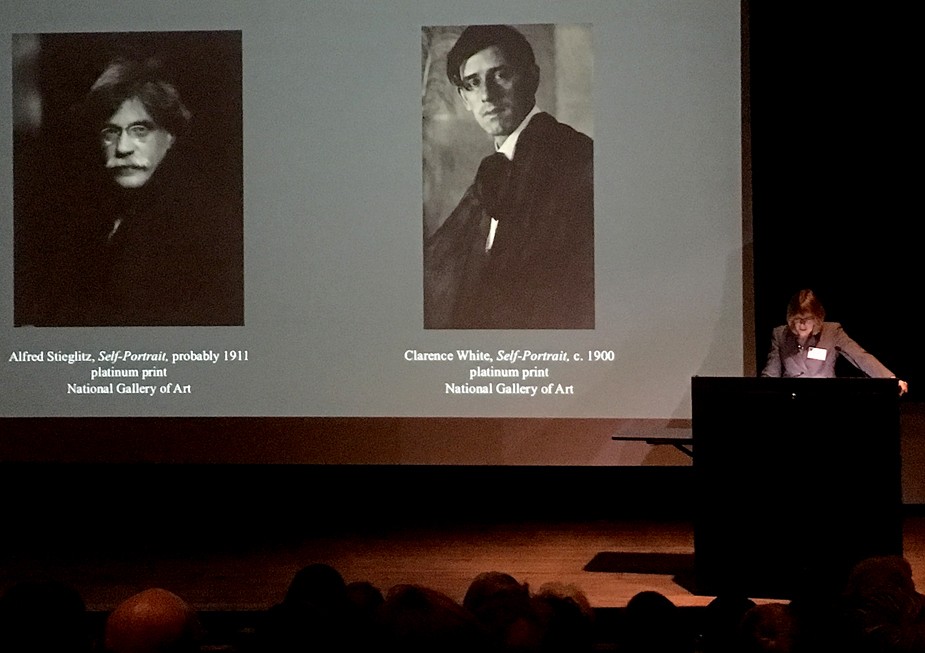 Two men from two very distinct photographic worlds: Seen at center ca. 1900 at around 25 years of age, Clarence H. White, with hair slightly unkempt as befitting one whose energies were certainly taxed for familial obligations combined with lofty personal ambitions related to the nascent field of art photography, (and the necessity of keeping his day job) was compared with a mentor at left: Alfred Stieglitz, during a symposium paper. Sarah Greenough, far right, senior curator and head of the department of photographs at the National Gallery of Art in Washington, D.C., compared both as part of her keynote address: Alfred Stieglitz, 291, and the Nursery of Genius: 100 Years Later. The symposium- Rethinking "Pictorialism" American Art and Photography, 1895 to 1925, was held at Princeton University on October 20-21, 2017 in conjunction with the in-progress exhibition on Clarence White at the University art museum. Photo by David Spencer for PhotoSeed Archive.
Two men from two very distinct photographic worlds: Seen at center ca. 1900 at around 25 years of age, Clarence H. White, with hair slightly unkempt as befitting one whose energies were certainly taxed for familial obligations combined with lofty personal ambitions related to the nascent field of art photography, (and the necessity of keeping his day job) was compared with a mentor at left: Alfred Stieglitz, during a symposium paper. Sarah Greenough, far right, senior curator and head of the department of photographs at the National Gallery of Art in Washington, D.C., compared both as part of her keynote address: Alfred Stieglitz, 291, and the Nursery of Genius: 100 Years Later. The symposium- Rethinking "Pictorialism" American Art and Photography, 1895 to 1925, was held at Princeton University on October 20-21, 2017 in conjunction with the in-progress exhibition on Clarence White at the University art museum. Photo by David Spencer for PhotoSeed Archive.
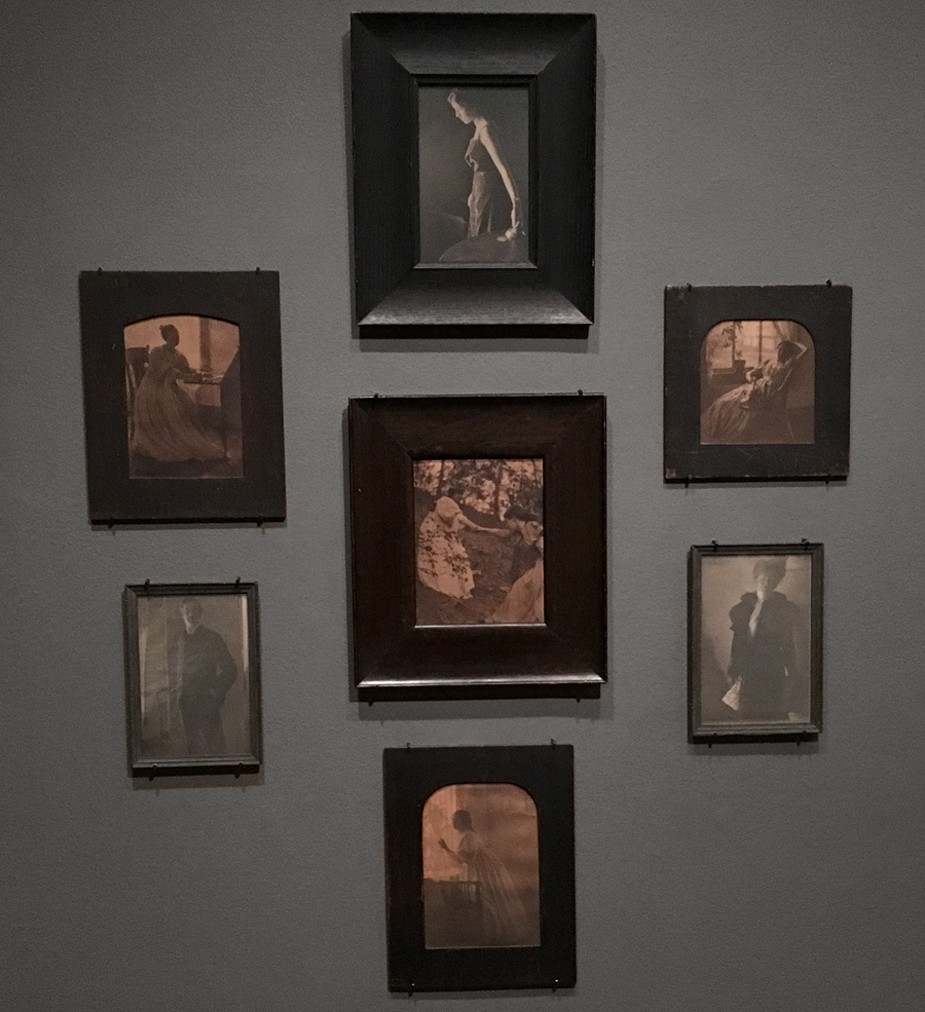 A wall grouping of original Clarence H. White photographs in their original wood frames are on display as part of the exhibit: "Clarence H. White and His World: The Art & Craft of Photography, 1895-1925" now at the Princeton University Museum of Art through early 2018. An excerpt of the wall label: "These photographs are among the few pictorialist works from the late 1890s that survive in their original exhibition frames. Photo by David Spencer for PhotoSeed Archive
A wall grouping of original Clarence H. White photographs in their original wood frames are on display as part of the exhibit: "Clarence H. White and His World: The Art & Craft of Photography, 1895-1925" now at the Princeton University Museum of Art through early 2018. An excerpt of the wall label: "These photographs are among the few pictorialist works from the late 1890s that survive in their original exhibition frames. Photo by David Spencer for PhotoSeed Archive
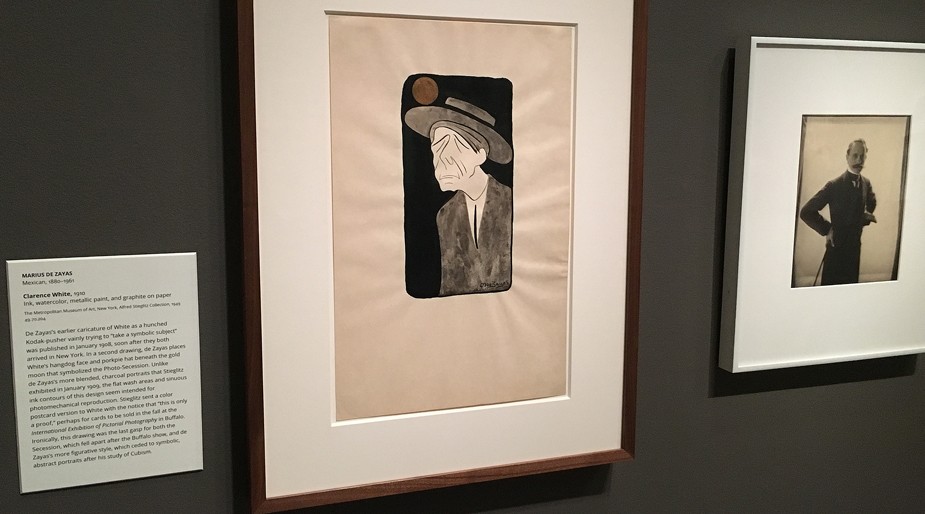 A caricature drawing of Clarence White done in 1910 by Mexican artist Marius De Zayas (1880-1961) is included in the exhibit on loan from the Metropolitan Museum of Art. Accompanied by a vintage portrait of the artist by White at far right, an excerpt from the wall caption reveals: "…de Zayas places White's hangdog face and porkpie hat beneath the gold moon that symbolized the Photo-Secession. Unlike de Zayas's more blended, charcoal portraits that Stieglitz exhibited in January 1909, the flat wash areas and sinuous ink contours of this design seem intended for photomechanical reproduction." Note: caricature drawings by the artist appeared in the journal Camera Work XXIX in 1910 and CW XLVI in 1914. Photo by David Spencer for PhotoSeed Archive.
A caricature drawing of Clarence White done in 1910 by Mexican artist Marius De Zayas (1880-1961) is included in the exhibit on loan from the Metropolitan Museum of Art. Accompanied by a vintage portrait of the artist by White at far right, an excerpt from the wall caption reveals: "…de Zayas places White's hangdog face and porkpie hat beneath the gold moon that symbolized the Photo-Secession. Unlike de Zayas's more blended, charcoal portraits that Stieglitz exhibited in January 1909, the flat wash areas and sinuous ink contours of this design seem intended for photomechanical reproduction." Note: caricature drawings by the artist appeared in the journal Camera Work XXIX in 1910 and CW XLVI in 1914. Photo by David Spencer for PhotoSeed Archive.
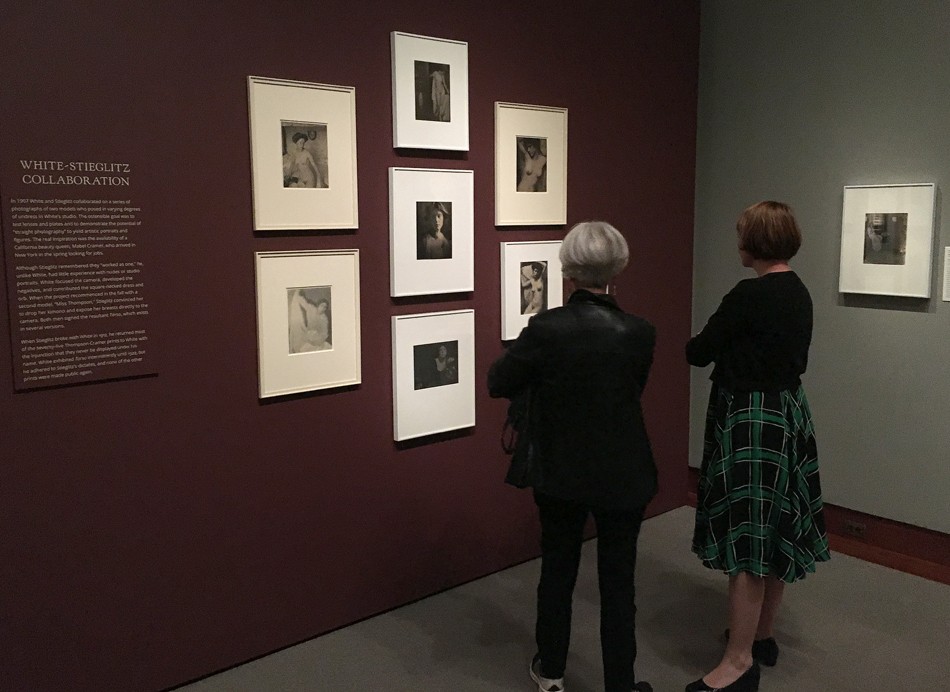 Visitors take in a select grouping of vintage photographs taken in 1907 by Clarence H. White and Alfred Stieglitz in White's New York City studio that are part of the exhibit "Clarence H. White and His World: The art & Craft of Photography, 1895-1925" now at the Princeton University Museum of Art. An excerpt from the wall label: "In 1907 White and Stieglitz collaborated on a series of photographs of two models who posed in varying degrees of undress in White's studio. The ostensible goal was to test lenses and plates and to demonstrate the potential of "straight photography" to yield artistic portraits and figures. The real inspiration was the availability of a California beauty queen, Mabel Cramer, who arrived in New York in the spring looking for jobs." Photo by David Spencer for PhotoSeed Archive.
Visitors take in a select grouping of vintage photographs taken in 1907 by Clarence H. White and Alfred Stieglitz in White's New York City studio that are part of the exhibit "Clarence H. White and His World: The art & Craft of Photography, 1895-1925" now at the Princeton University Museum of Art. An excerpt from the wall label: "In 1907 White and Stieglitz collaborated on a series of photographs of two models who posed in varying degrees of undress in White's studio. The ostensible goal was to test lenses and plates and to demonstrate the potential of "straight photography" to yield artistic portraits and figures. The real inspiration was the availability of a California beauty queen, Mabel Cramer, who arrived in New York in the spring looking for jobs." Photo by David Spencer for PhotoSeed Archive.
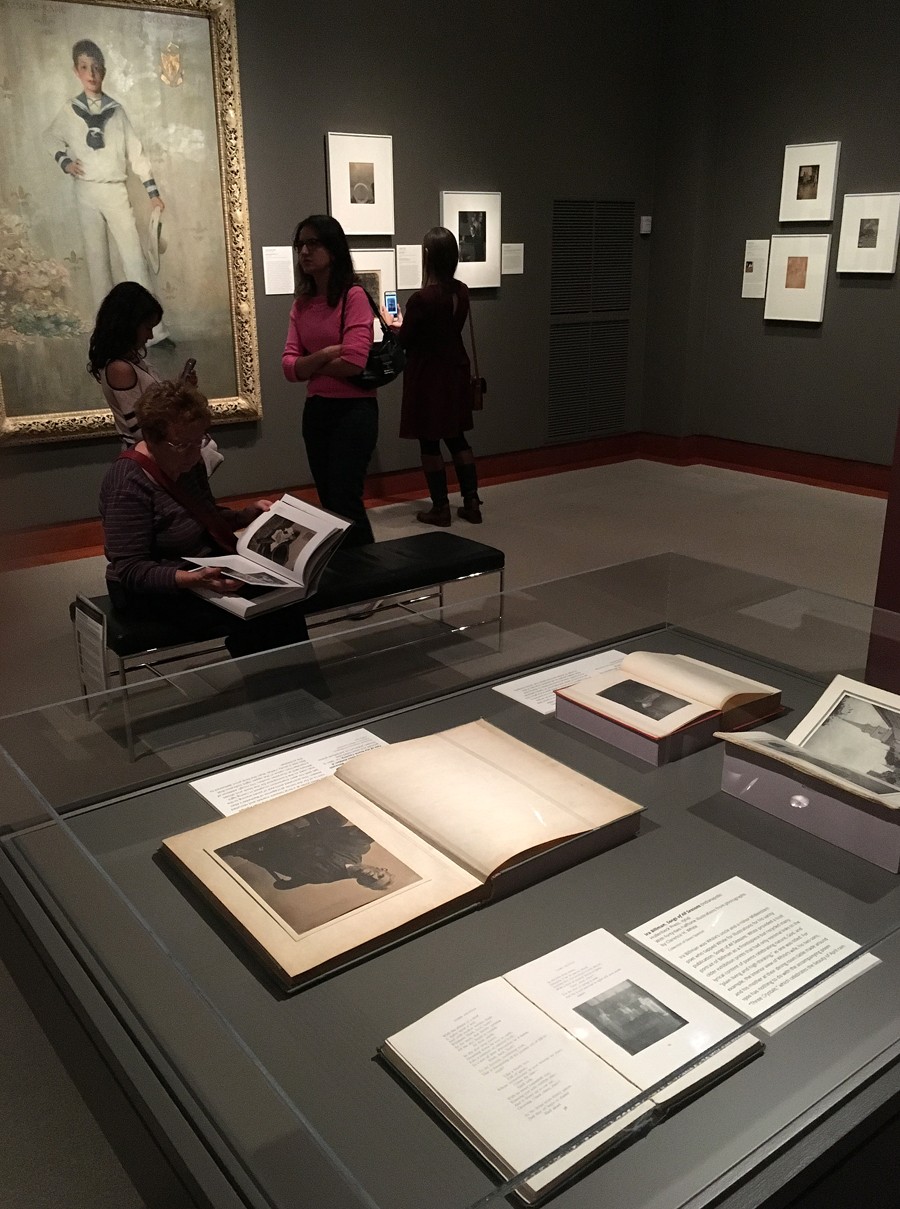 In one exhibit gallery, a display case seen at bottom contains examples of Clarence White's published work. In the early 20th Century, his interest in commercial illustration lent itself to the publication of several articles as well as volumes featuring staged genre photographs, including a photogravure-illustrated edition of the best-selling Irving Bacheller novel Eben Holden published by the Lothrop in 1903 and Songs of All Seasons in 1904. The latter volume, lent by this website for the exhibit and written by White's uncle Ira Billman contained the following label excerpt: "White provided a bust portrait of Billman as a frontispiece but recycled many older exhibition prints that had only minimal links to the lyrical content of poems celebrating nature, God, and "Plain living and high thinking," as one was titled." On another label, for a bound collection of work prints for Eben Holden and the article "Beneath the Wrinkle", we learn White recruited a bearded gent named John Miles Jones at a Newark, Oh market who served as the "heroic protagonist of Bacheller's Eben Holden". (seen at far left at frame bottom) Photo by David Spencer for PhotoSeed Archive.
In one exhibit gallery, a display case seen at bottom contains examples of Clarence White's published work. In the early 20th Century, his interest in commercial illustration lent itself to the publication of several articles as well as volumes featuring staged genre photographs, including a photogravure-illustrated edition of the best-selling Irving Bacheller novel Eben Holden published by the Lothrop in 1903 and Songs of All Seasons in 1904. The latter volume, lent by this website for the exhibit and written by White's uncle Ira Billman contained the following label excerpt: "White provided a bust portrait of Billman as a frontispiece but recycled many older exhibition prints that had only minimal links to the lyrical content of poems celebrating nature, God, and "Plain living and high thinking," as one was titled." On another label, for a bound collection of work prints for Eben Holden and the article "Beneath the Wrinkle", we learn White recruited a bearded gent named John Miles Jones at a Newark, Oh market who served as the "heroic protagonist of Bacheller's Eben Holden". (seen at far left at frame bottom) Photo by David Spencer for PhotoSeed Archive.
 Perhaps Clarence White's greatest legacy was his teaching career. On the exhibit wall at center, a portrait of the American painter Arthur Wesley Dow taken by White around 1908 is shown with an original painting by Dow at far left showing the influence of Japanese design. White’s transition from Newark to New York City in 1906 began a new chapter of teaching by the photographer, who soon made the acquaintance of artist and arts educator Arthur Wesley Dow, (1857-1922) who hired White as an instructor at Columbia University’s Teachers College in 1907. White would go on to found his own groundbreaking schools of artistic photography utilizing a modern pedagogy learned from Dow among others: first in Maine beginning in 1910 and then in New York City in 1914. Photo by David Spencer for PhotoSeed Archive.
Perhaps Clarence White's greatest legacy was his teaching career. On the exhibit wall at center, a portrait of the American painter Arthur Wesley Dow taken by White around 1908 is shown with an original painting by Dow at far left showing the influence of Japanese design. White’s transition from Newark to New York City in 1906 began a new chapter of teaching by the photographer, who soon made the acquaintance of artist and arts educator Arthur Wesley Dow, (1857-1922) who hired White as an instructor at Columbia University’s Teachers College in 1907. White would go on to found his own groundbreaking schools of artistic photography utilizing a modern pedagogy learned from Dow among others: first in Maine beginning in 1910 and then in New York City in 1914. Photo by David Spencer for PhotoSeed Archive.
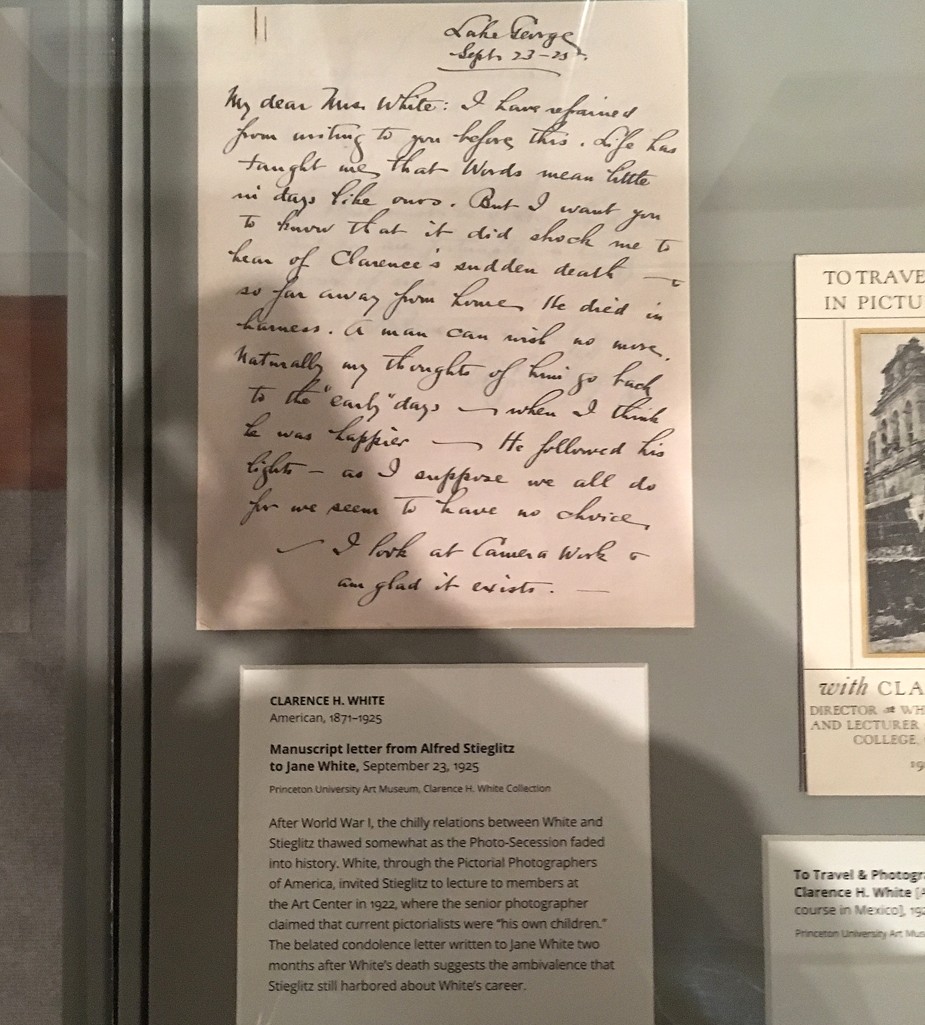 In the final gallery exhibition display case, an original letter to Clarence White's widow Jane White by Alfred Stieglitz is displayed, with this modern-day reader struck by the author's self importance revealed in the letter's conclusion at an inopportune time: writing from Lake George, New York, the elder statesman of American pictorial photography pens a belated note of condolence dated September 25, 1923: "My dear Mrs. White: I have refrained from writing to you before this. Life has taught me that words mean little in days like ours. But I want you to know that it did shock me to hear of Clarence's sudden death-so far away from home. He died in harness. A man can wish no more. Naturally my thoughts of him go back to the "early" days- when I think he was happier- He followed his lights-as I suppose we all do for we seem to have no choice. - I look at Camera Work & am glad it exists. - Photo by David Spencer for PhotoSeed Archive.
In the final gallery exhibition display case, an original letter to Clarence White's widow Jane White by Alfred Stieglitz is displayed, with this modern-day reader struck by the author's self importance revealed in the letter's conclusion at an inopportune time: writing from Lake George, New York, the elder statesman of American pictorial photography pens a belated note of condolence dated September 25, 1923: "My dear Mrs. White: I have refrained from writing to you before this. Life has taught me that words mean little in days like ours. But I want you to know that it did shock me to hear of Clarence's sudden death-so far away from home. He died in harness. A man can wish no more. Naturally my thoughts of him go back to the "early" days- when I think he was happier- He followed his lights-as I suppose we all do for we seem to have no choice. - I look at Camera Work & am glad it exists. - Photo by David Spencer for PhotoSeed Archive.
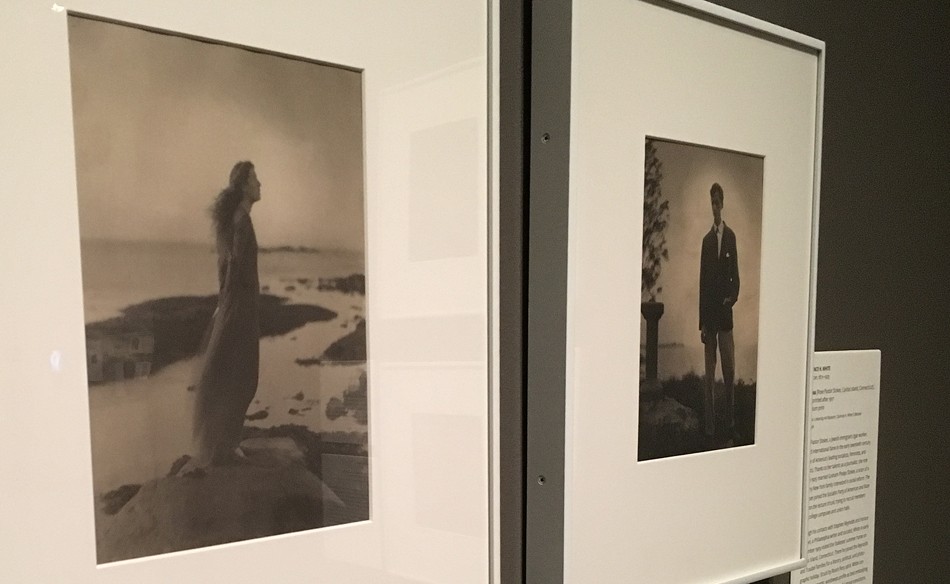 The exhibit features marvelous images by Clarence White held in the Clarence H. White Collection at the Princeton University Art Museum, like this stunning full-length portrait titled The Sea taken of socialist, feminist and activist Rose Pastor Stokes in 1909 and printed after 1917 as a Palladium print. A committed socialist himself, White photographed Stokes during a visit to her and husband Graham Phelps Stokes (portrait of him at far right of frame by White) summer home on Caritas Island, CT. A label excerpt: "Struck by Rose's fiery spirit, White conceived this romantic, windswept profile as best embodying her fierce independence and powerful moral convictions." Note: this portrait used as the cover illustration for the exhibit's accompanying monograph volume. Photo by David Spencer for PhotoSeed Archive.
The exhibit features marvelous images by Clarence White held in the Clarence H. White Collection at the Princeton University Art Museum, like this stunning full-length portrait titled The Sea taken of socialist, feminist and activist Rose Pastor Stokes in 1909 and printed after 1917 as a Palladium print. A committed socialist himself, White photographed Stokes during a visit to her and husband Graham Phelps Stokes (portrait of him at far right of frame by White) summer home on Caritas Island, CT. A label excerpt: "Struck by Rose's fiery spirit, White conceived this romantic, windswept profile as best embodying her fierce independence and powerful moral convictions." Note: this portrait used as the cover illustration for the exhibit's accompanying monograph volume. Photo by David Spencer for PhotoSeed Archive.
A Reevaluation: Clarence H. White
Posted October 2017 in Exhibitions, History of Photography, Painters|Photographers, Publishing, Significant Photographers
 "Clarence H. White Autograph": Black ink, 1916. By his own hand, White autographed a manilla card-stock mount (36.2 x 28.6 cm) featuring a portrait photograph of himself taken by student Ruth Anthony Davis during the Seventh Summer Session of the School of Photography at Stevens Farm in East Canaan, CT that year. Please see portrait below. From: PhotoSeed Archive
"Clarence H. White Autograph": Black ink, 1916. By his own hand, White autographed a manilla card-stock mount (36.2 x 28.6 cm) featuring a portrait photograph of himself taken by student Ruth Anthony Davis during the Seventh Summer Session of the School of Photography at Stevens Farm in East Canaan, CT that year. Please see portrait below. From: PhotoSeed Archive
When I remarried a dozen years ago, an obscure bit of farce entered the equation leading up to the “I do” moment. The fateful convolution? My beloved hailed from Newark, OH: the same Midwestern US city where pioneering art photographer Clarence Hudson White (1871-1925) had spent his formative years before leaving permanently along with his family to New York City in 1906.
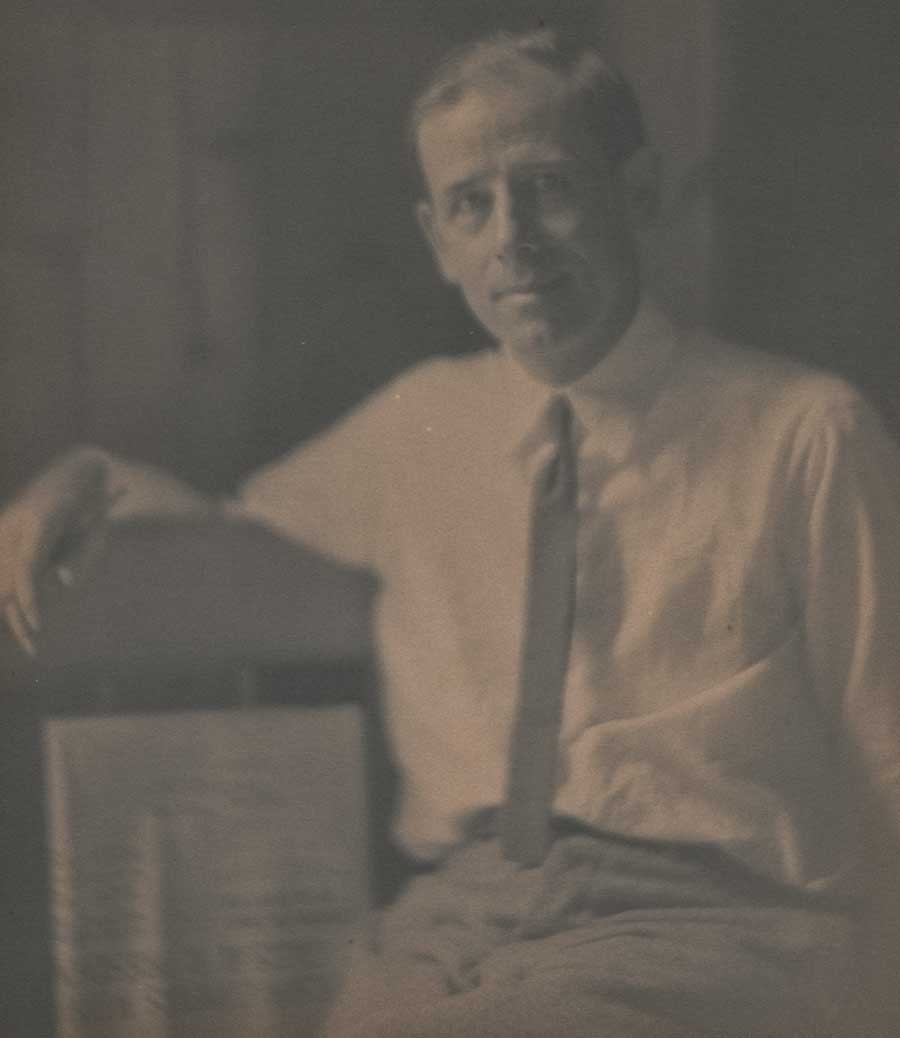 Detail: "Portrait of Clarence H. White": Ruth Anthony Davis, American (1880-1979): 1916: vintage platinum print: 24.2 x 19.3 cm | 29.0 x 21.5 cm Japan paper | 36.2 x 28.6 cm manilla card-stock: Davis, an early member of the Providence Camera Club, photographed her instructor Clarence Hudson White while she attended the Seventh Summer Session of the School of Photography at Stevens Farm in East Canaan, CT. A description of the school's location with emphasis on potential photographic subjects for students appeared in the March, 1916 issue of the International Studio: "The seventh summer session of the Clarence H. White School of Photography will be held at East Canaan, Connecticut, instead of Sequinland, Maine, as heretofore, during July and August. East Canaan is situated in a beautiful valley in the Berkshire Hills of Northern Connecticut, at an elevation of eight hundred feet above the sea level, and is surrounded by hills rising another eight hundred feet above the floor of the valley. The country furnishes abundance of photographic material, comprising, within easy walking distance, farms, rolling uplands, streams, rugged mountains and architecture of typically New England character, many of the buildings dating from Colonial times. Numerous industries, such as iron furnaces, lime kilns, and the like, afford abundant opportunity for pictorial work. The neighbourhood is by no means thickly settled, and those persons who enjoy the seclusion of country life will find it here. Not least among the attractions of this portion of Connecticut are the delightful climate and the practical freedom from mosquitoes." From: PhotoSeed Archive
Detail: "Portrait of Clarence H. White": Ruth Anthony Davis, American (1880-1979): 1916: vintage platinum print: 24.2 x 19.3 cm | 29.0 x 21.5 cm Japan paper | 36.2 x 28.6 cm manilla card-stock: Davis, an early member of the Providence Camera Club, photographed her instructor Clarence Hudson White while she attended the Seventh Summer Session of the School of Photography at Stevens Farm in East Canaan, CT. A description of the school's location with emphasis on potential photographic subjects for students appeared in the March, 1916 issue of the International Studio: "The seventh summer session of the Clarence H. White School of Photography will be held at East Canaan, Connecticut, instead of Sequinland, Maine, as heretofore, during July and August. East Canaan is situated in a beautiful valley in the Berkshire Hills of Northern Connecticut, at an elevation of eight hundred feet above the sea level, and is surrounded by hills rising another eight hundred feet above the floor of the valley. The country furnishes abundance of photographic material, comprising, within easy walking distance, farms, rolling uplands, streams, rugged mountains and architecture of typically New England character, many of the buildings dating from Colonial times. Numerous industries, such as iron furnaces, lime kilns, and the like, afford abundant opportunity for pictorial work. The neighbourhood is by no means thickly settled, and those persons who enjoy the seclusion of country life will find it here. Not least among the attractions of this portion of Connecticut are the delightful climate and the practical freedom from mosquitoes." From: PhotoSeed Archive
But this aside is merely an excuse for the real purpose of this post: today is the official public opening of an exciting and ground breaking new exhibit on Clarence White at the Princeton University Art Museum in Princeton, New Jersey. Clarence H. White and His World: The Art and Craft of Photography, 1895-1925 will be on display there from October 7, 2017 to January 7, 2018. But don’t despair if you can’t make it right away, because the show travels to an additional three US museums through early 2019. Venue details along with additional links including one for the first comprehensive monograph on White published in conjunction with the show and authored by Anne McCauley, David Hunter McAlpin Professor of the History of Photography and Modern Art at Princeton University, concludes this post.
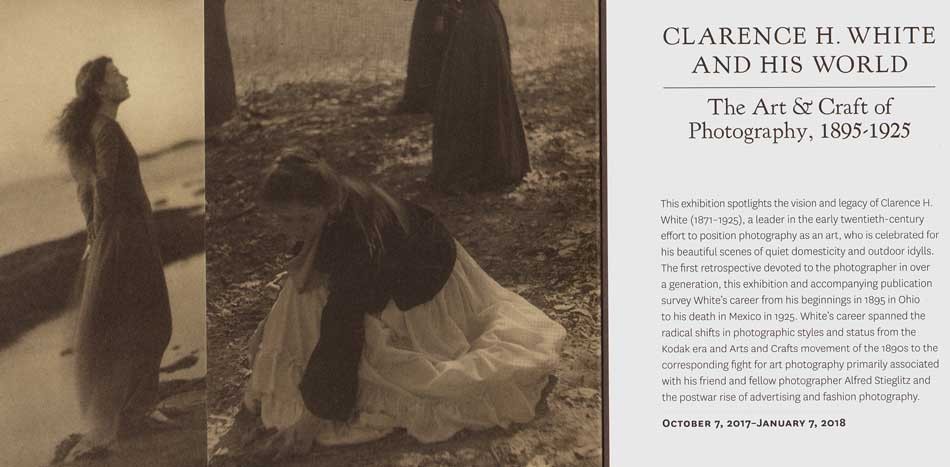 Detail: "Clarence H. White and His World: The Art and Craft of Photography, 1895-1925": composite gatefold brochure for exhibit at Princeton University Art Museum which runs from October 7, 2017-January 7, 2018. Photographic illustrations by White left and middle: The Sea (Rose Pastor Stokes, Caritas Island, Connecticut) (detail), 1909, printed after 1917. Palladium print. Princeton University Art Museum, Clarence H. White Collection; middle: In the Orchard, Newark, Ohio (detail), 1902, printed after 1917. Palladium print. The Museum of Modern Art. Gift of Jane Felix White, 1941. Courtesy: Princeton University Art Museum
Detail: "Clarence H. White and His World: The Art and Craft of Photography, 1895-1925": composite gatefold brochure for exhibit at Princeton University Art Museum which runs from October 7, 2017-January 7, 2018. Photographic illustrations by White left and middle: The Sea (Rose Pastor Stokes, Caritas Island, Connecticut) (detail), 1909, printed after 1917. Palladium print. Princeton University Art Museum, Clarence H. White Collection; middle: In the Orchard, Newark, Ohio (detail), 1902, printed after 1917. Palladium print. The Museum of Modern Art. Gift of Jane Felix White, 1941. Courtesy: Princeton University Art Museum
Several years before, I had taken a deep-dive into the remarkable life of White, whose arc resonated with me on many levels, especially his love for breaking the rules as applied to photographic lighting. To wit: what do you mean I can’t photograph my subject backlit? A simple optical concept today perhaps but in the late 1890’s? Revolutionary. I kid you not.
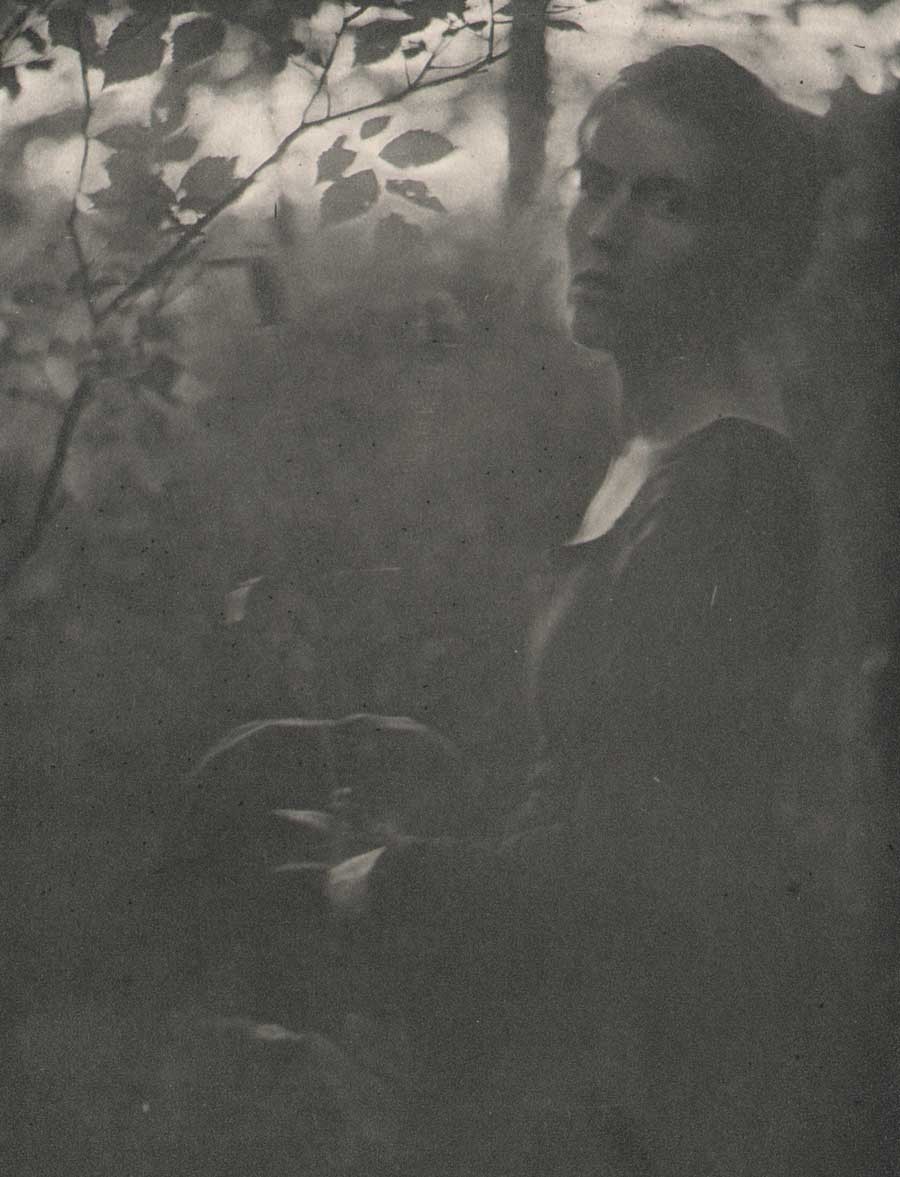 Detail: "At the Edge of the Woods ⎯ Evening": Clarence H. White, American (1871-1925): Chine-collé photogravure from Camera Notes, Vol. IV, April 1901: 14.4 x 10.1 cm | 28.6 x 19.6 cm uncut: The photographer’s sister-in-law, Letitia Felix is shown at twilight in a wooded setting. Alternately titled as In the Woods; Evening, the photograph was first exhibited in the Third Philadelphia Photographic Salon the same year. (cat.# 202) Later that year, it was exhibited as part of the Newark Camera Club’s exhibition in the town’s Association Building from November 28-December 1, 1900 where it was titled as Edge of the Woods ⎯Evening. The catalogue issued for the exhibit reproduced the photo as the frontis gravure for the publication. From: PhotoSeed Archi
Detail: "At the Edge of the Woods ⎯ Evening": Clarence H. White, American (1871-1925): Chine-collé photogravure from Camera Notes, Vol. IV, April 1901: 14.4 x 10.1 cm | 28.6 x 19.6 cm uncut: The photographer’s sister-in-law, Letitia Felix is shown at twilight in a wooded setting. Alternately titled as In the Woods; Evening, the photograph was first exhibited in the Third Philadelphia Photographic Salon the same year. (cat.# 202) Later that year, it was exhibited as part of the Newark Camera Club’s exhibition in the town’s Association Building from November 28-December 1, 1900 where it was titled as Edge of the Woods ⎯Evening. The catalogue issued for the exhibit reproduced the photo as the frontis gravure for the publication. From: PhotoSeed Archi
In groundbreaking photographs by White such as his brooding landscape figure study At the Edge of the Woods ⎯Evening (1900), a remarkable twilight composition showing his sister-in-law Letitia Felix emerging from a thicket with just a hint of light on the horizon became just one example of his early output. White’s decidedly masterful reinterpretation of the possibilities of light and the photographic medium done with artistic intent was quickly getting accolades in the press, and his work was soon honored in salons the world over beginning at the end of the 19th century.
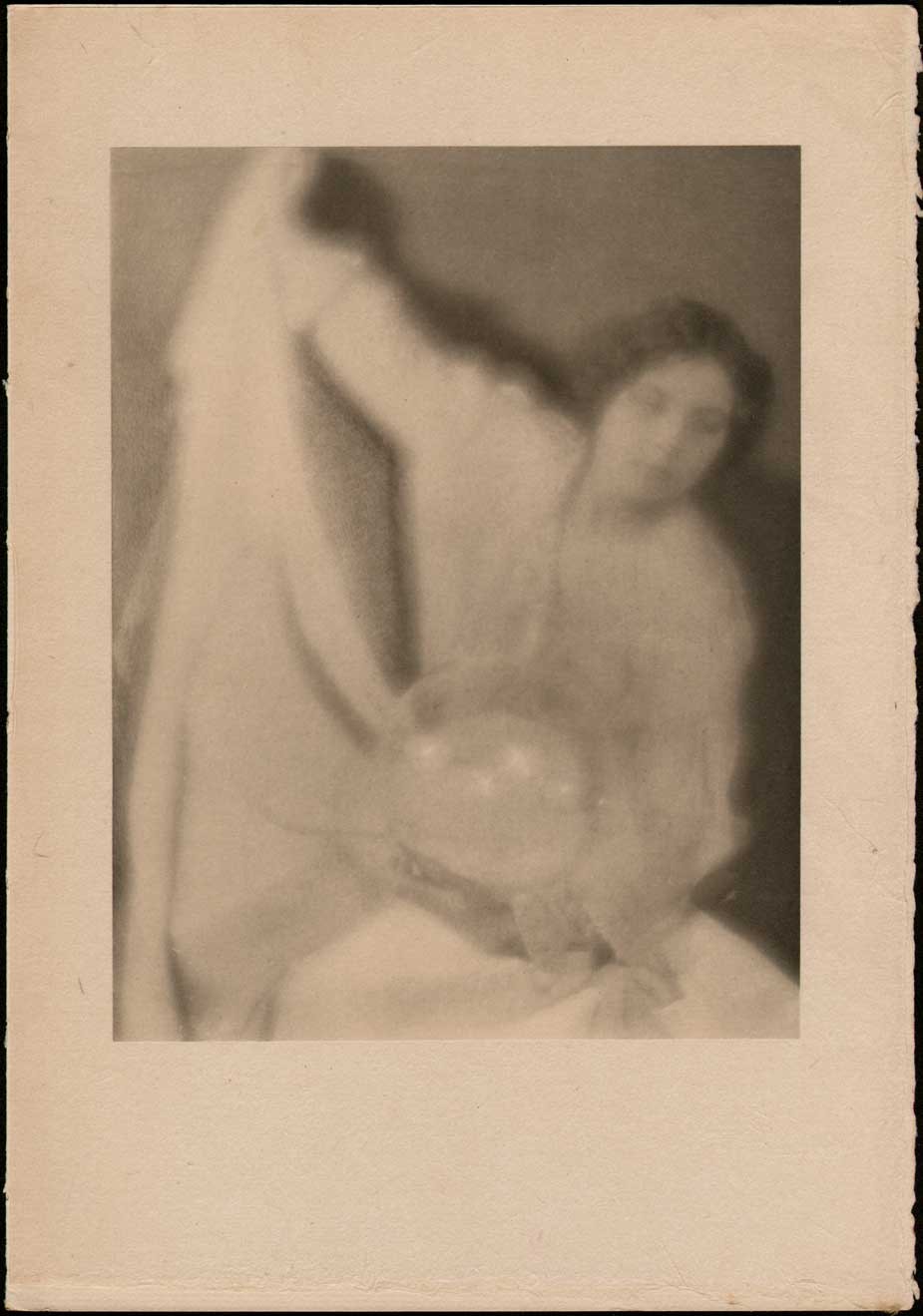 "Experiment 28": Alfred Stieglitz 1864-1946 & Clarence White 1871-1925, Americans: vintage japanese tissue photogravure published in Camera Work XXVII: 1909: 20.6 x 15.9 | 30.2 x 21.1 cm: In 1907, the year after Clarence White arrived in New York City, he collaborated with Photo-Secession founder Alfred Stieglitz on a series of portraits featuring two models. Shown here holding a glass globe, California model Mabel Cramer poses in a portrait later reproduced as a plate in Camera Work. Said to be a friend of the German American photographer Arnold Genthe and possessing a face worthy of Cleopatra, Cramer and a woman known only as a Miss Thompson, posed for a series of photographs intended to promote photography as an equivalent medium to painting. It was the only time Stieglitz would ever work in tandem with another photographer and shows the extent to which the photographers were allied aesthetically and technically. From: PhotoSeed Archive
"Experiment 28": Alfred Stieglitz 1864-1946 & Clarence White 1871-1925, Americans: vintage japanese tissue photogravure published in Camera Work XXVII: 1909: 20.6 x 15.9 | 30.2 x 21.1 cm: In 1907, the year after Clarence White arrived in New York City, he collaborated with Photo-Secession founder Alfred Stieglitz on a series of portraits featuring two models. Shown here holding a glass globe, California model Mabel Cramer poses in a portrait later reproduced as a plate in Camera Work. Said to be a friend of the German American photographer Arnold Genthe and possessing a face worthy of Cleopatra, Cramer and a woman known only as a Miss Thompson, posed for a series of photographs intended to promote photography as an equivalent medium to painting. It was the only time Stieglitz would ever work in tandem with another photographer and shows the extent to which the photographers were allied aesthetically and technically. From: PhotoSeed Archive
Not bad for a man with limited means and a high school education. Employed as a bookkeeper in 1890’s Newark nearly seven days a week for the same wholesale grocery firm his father worked at, (the family had moved there in 1887 from nearby West Carlisle, OH), White first took up amateur photography a year after his 1893 marriage to Jane Felix, with the young photographer diligently saving weekly spare change from his salary for camera and darkroom supplies. Reportedly, his reality of only being able to afford the exposure of several glass plates a week necessitated lots of planning in order to make successful photographs. With outdoor locations previously scouted throughout Licking County and interiors often taken in the darkened homes of family and friends, these same subjects were further cajoled into wearing fashions from the American Civil-War era or earlier in order to evoke feelings of times gone by for the compositions.
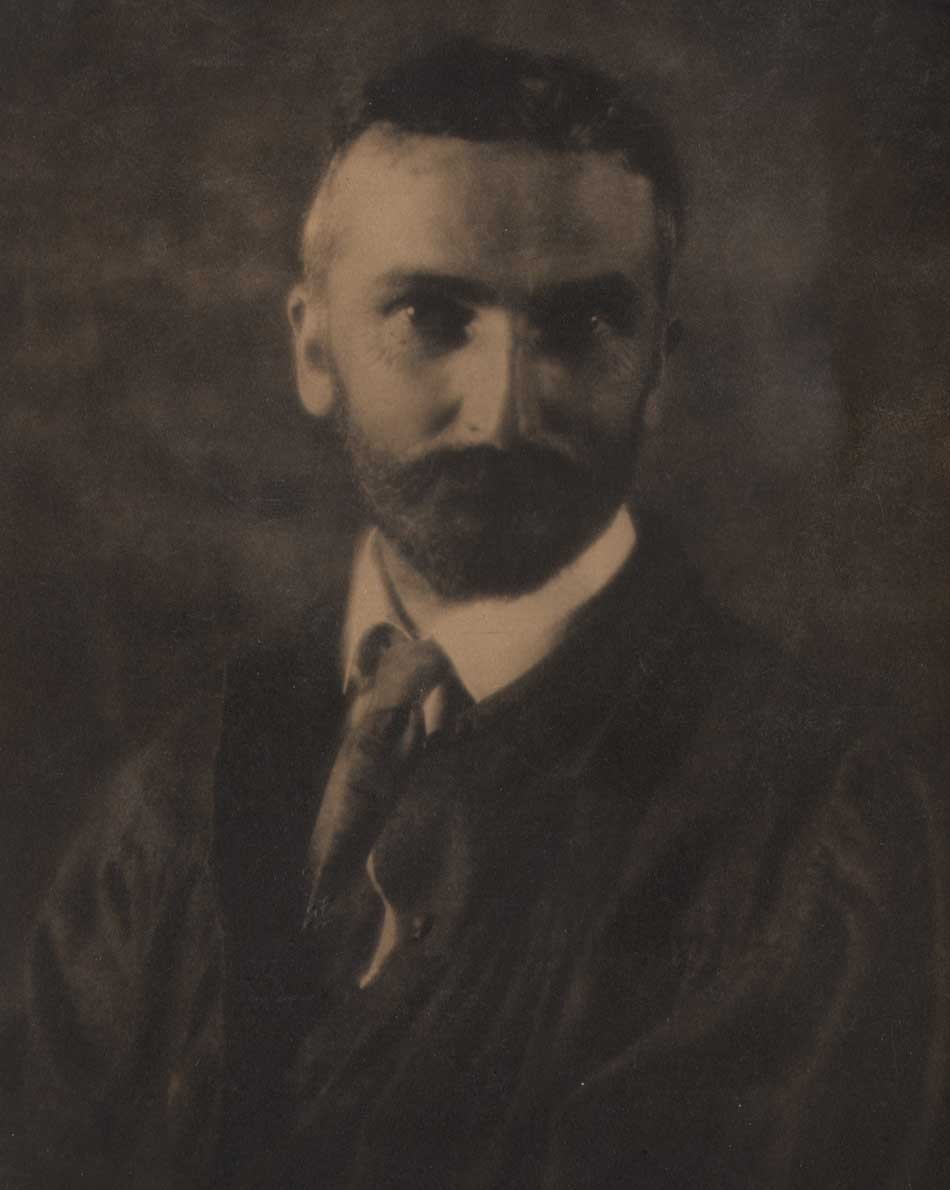 Detail: "Portrait of Arthur Wesley Dow": Clarence H. White, American (1871-1925): vintage waxed platinum print, unmounted: 22.1 x 16.6 cm. From the Princeton University Museum website: "White was hired by Arthur Wesley Dow at Teachers College in 1907 and shared Dow’s philosophy that students of the fine and the applied arts should have the same fundamental training based on design principles (anticipating the approach of the Bauhaus in the 1920s)." from: PhotoSeed Archive
Detail: "Portrait of Arthur Wesley Dow": Clarence H. White, American (1871-1925): vintage waxed platinum print, unmounted: 22.1 x 16.6 cm. From the Princeton University Museum website: "White was hired by Arthur Wesley Dow at Teachers College in 1907 and shared Dow’s philosophy that students of the fine and the applied arts should have the same fundamental training based on design principles (anticipating the approach of the Bauhaus in the 1920s)." from: PhotoSeed Archive
A founding member of the American Photo-Secession movement begun in 1902 by Alfred Stieglitz, White’s transition from Newark to New York City in 1906 began a new chapter of teaching by the photographer, who soon made the acquaintance of artist and arts educator Arthur Wesley Dow, (1857-1922) who hired White as an instructor at Columbia University’s Teachers College in 1907. White would go on to found his own groundbreaking schools of artistic photography utilizing a modern pedagogy learned from Dow among others: first in Maine beginning in 1910 and then in New York City in 1914. Besides emphasizing pictorial photographic technique as well as numerous technical processes as part of the school curriculum, modern composition as espoused by Dow was taught along with art history through lecture format in classes by artists including early American cubist painter Max Weber (1881-1961) and later by artists including Charles James Martin (1886-1955) in the early 1920’s.
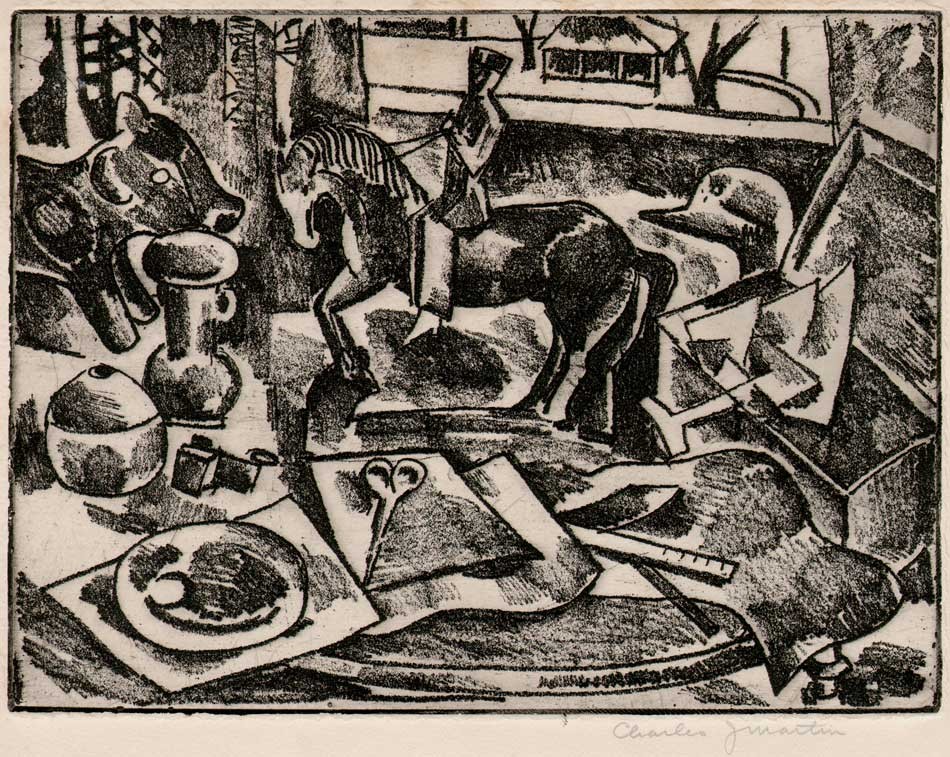 "Interior Composition with Figurines": Charles James Martin, American (1886-1955): vintage etching on plate paper ca. 1915-20: 15.1 x 20.1 | 18.8 x 24.8 cm (trimmed): Martin studied with Arthur Wesley Dow, and later taught alongside him at Columbia University Teachers College. At TC, he also studied photography with Clarence H. White, and became an instructor at White’s School of Photography in 1918. Martin began teaching at the Art Students League of New York in 1921. The following background on Martin and his involvement with the White school appeared in the February, 1921 issue of "The Touchstone and the American Art Student Magazine": "The Clarence H. White School of Photography announces a course of instruction in Print Making by Prof. Charles J. Martin of the Department of Fine Arts, Columbia University. The purpose of the course is to develop an appreciation of prints through a study of fine examples and particularly through practice in etching plates, cutting blocks and printing. There will be also an opportunity to do photo-engraving such as the line cut and photogravure. The course will consist of twenty sessions. The earlier sessions are now under way, and the response to this announcement gives evidence that the student of the Photographic Arts is endeavoring to gain practical knowledge as well as artistic reproduction." p. 406: from: PhotoSeed Archive
"Interior Composition with Figurines": Charles James Martin, American (1886-1955): vintage etching on plate paper ca. 1915-20: 15.1 x 20.1 | 18.8 x 24.8 cm (trimmed): Martin studied with Arthur Wesley Dow, and later taught alongside him at Columbia University Teachers College. At TC, he also studied photography with Clarence H. White, and became an instructor at White’s School of Photography in 1918. Martin began teaching at the Art Students League of New York in 1921. The following background on Martin and his involvement with the White school appeared in the February, 1921 issue of "The Touchstone and the American Art Student Magazine": "The Clarence H. White School of Photography announces a course of instruction in Print Making by Prof. Charles J. Martin of the Department of Fine Arts, Columbia University. The purpose of the course is to develop an appreciation of prints through a study of fine examples and particularly through practice in etching plates, cutting blocks and printing. There will be also an opportunity to do photo-engraving such as the line cut and photogravure. The course will consist of twenty sessions. The earlier sessions are now under way, and the response to this announcement gives evidence that the student of the Photographic Arts is endeavoring to gain practical knowledge as well as artistic reproduction." p. 406: from: PhotoSeed Archive
At 54, Clarence White died of a heart attack while accompanying photo students during a summer session of his school in Mexico City in 1925. Besides his important contributions as a ground-breaking photographic artist in the late 19th and early 20th century, his legacy as a teacher is perhaps more important as we finally begin to reevaluate his importance in the larger history of early artistic photography. The Princeton exhibition and accompanying monograph-the first truly comprehensive volume on White ever published, will further our understanding and appreciation for this gentleman.
PhotoSeed is honored to have played a small role in the exhibition showcasing Clarence White’s talents at photographic book illustration. A slim volume loaned for the show, Songs of All Seasons, published in 1904 with prose by his uncle Ira Billman and photographs by White, will be included in an exhibit display case. An additional rare illustrated copy of Irving Bacheller’s best-selling novel Eben Holden from 1903, with photogravure plates by White, will also appear after it was acquired by Princeton from this archive. This site further intends to publish additional posts over the next several years chronicling White’s groundbreaking schools of photography as well as other aspects of his early and later life in Newark, OH and New York.
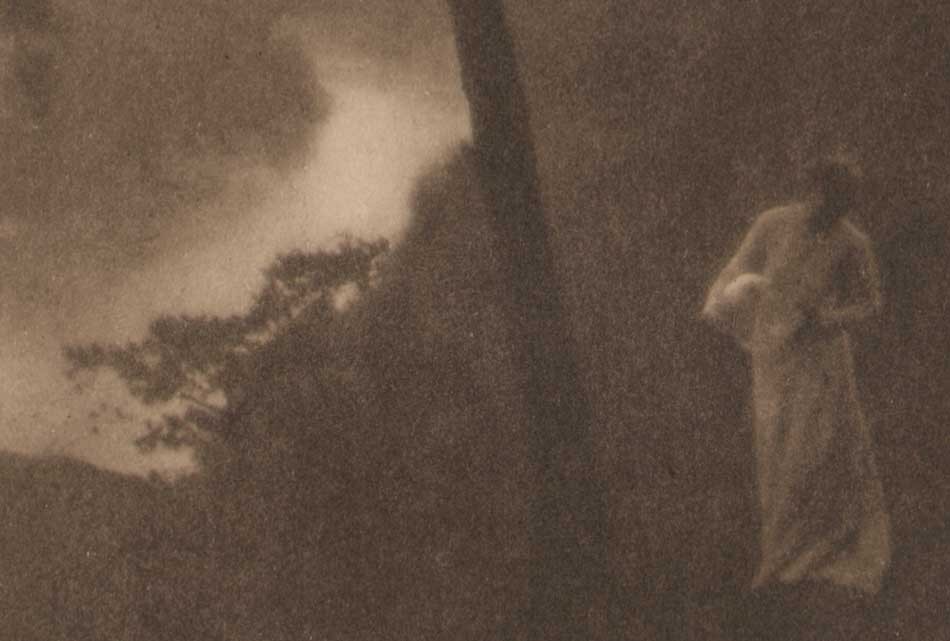 Detail: "Morning": Clarence H. White, American (1871-1925): 1905: vintage photogravure published in the volume "The Artistic Side of Photography" by A.J. Anderson: London, Stanley Paul & Co., 1910. 11.9 x 9.3 | 22.5 x 15.1 cm. The plate, titled "A Landscape", from a platinotype in the collection of A.L. Coburn, appears on p. 155. This moody landscape photograph with figure was taken by White on the bluffs in Newark, Ohio overlooking the Licking River, a location that appears in several of the photographer's compositions. From the Metropolitan Museum of Art Website, which holds an original platinum print dated to 1905 bequeathed by Alfred Stieglitz: "Morning perfectly embodies the tenets of Pictorialism: expressive, rather than narrative or documentary, content; craftsmanship in the execution of the print; and a carefully constructed composition allied to Impressionist and American Tonalist painting and to popular Japanese prints. His photographs from the period before he moved to New York in 1906 signaled a remove from the modern urban world. Neither genre scene nor narrative tableau, this photograph is a retreat into domesticized nature." From: PhotoSeed Archive
Detail: "Morning": Clarence H. White, American (1871-1925): 1905: vintage photogravure published in the volume "The Artistic Side of Photography" by A.J. Anderson: London, Stanley Paul & Co., 1910. 11.9 x 9.3 | 22.5 x 15.1 cm. The plate, titled "A Landscape", from a platinotype in the collection of A.L. Coburn, appears on p. 155. This moody landscape photograph with figure was taken by White on the bluffs in Newark, Ohio overlooking the Licking River, a location that appears in several of the photographer's compositions. From the Metropolitan Museum of Art Website, which holds an original platinum print dated to 1905 bequeathed by Alfred Stieglitz: "Morning perfectly embodies the tenets of Pictorialism: expressive, rather than narrative or documentary, content; craftsmanship in the execution of the print; and a carefully constructed composition allied to Impressionist and American Tonalist painting and to popular Japanese prints. His photographs from the period before he moved to New York in 1906 signaled a remove from the modern urban world. Neither genre scene nor narrative tableau, this photograph is a retreat into domesticized nature." From: PhotoSeed Archive
EXHIBITION SCHEDULE: Clarence H. White and His World: The Art and Craft of Photography, 1895-1925
Princeton University Art Museum (10/07/17–01/07/18)
Further link to the exhibit at Princeton
Video: Breaking down photographic processes used by Pictorialist photographers: a collaboration between the Princeton University Art Museum and the Yale Institute for the Preservation of Cultural Heritage.
Davis Museum, Wellesley College
(02/13/18–06/10/18)
Portland Museum of Art, Maine
(06/22/18–09/16/18)
Cleveland Museum of Art
(10/21/18–01/21/19)
Book link:
October 31, 2017
408 pages, 10 x 11 1/2
346 color + b/w illus.
ISBN: 9780300229080
Hardcover
Distributed for the Princeton University Art Museum
Old Nasty Women
Posted January 2017 in Documentary Photography, History of Photography, New Additions, Significant Photographers, Significant Photographs
The historical photographic record doesn’t flinch when it comes to the importance of women, and I present herewith a short gallery as evidence, many of these photographs taken by women themselves. Mother Earth was surely proud of those millions who turned out in rallies all over the United States and across the World in support of the fairer sex on Saturday. And in Washington, D.C., it was a pointed, diverse, and joyous message presenting the true story of America heard loud and clear countering the utterances of the keynote speaker the day before.
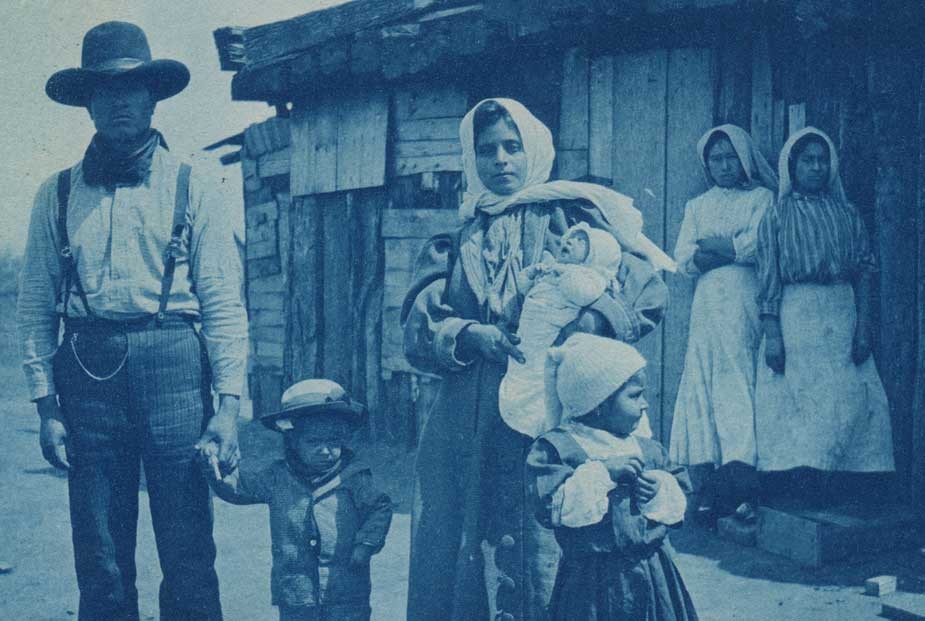 A Message to Washington: "Sweet-faced Little Mother" : Detail: Anonymous American Photographer: 1911: Cyanotype postcard mailed to Washington D.C. from Sweetwater Texas showing a proud Mexican family in front of their Texas & Pacific Railroad section house. 7.4 x 9.9 cm | 8.7 x 13.9 cm: Besides being built with the hard labor of Mexican and other nationalities in the later 19th Century, continued maintenance of American railroads like the "T & P" in places like Texas in the early 20th was often performed by them, with the rail line providing section houses along the track for temporary quarters to live in. Writing to a Mrs. Burnside on the card's verso, the following appears in neat script: "This man came up and asked me to come and take a picture of his baby, "just borned"-When I got there, the whole family wanted to be taken-so here they are the sweet-faced little mother and the baby, not quite 2 weeks old. They are such a happy-hearted class of people." From: PhotoSeed Archive
A Message to Washington: "Sweet-faced Little Mother" : Detail: Anonymous American Photographer: 1911: Cyanotype postcard mailed to Washington D.C. from Sweetwater Texas showing a proud Mexican family in front of their Texas & Pacific Railroad section house. 7.4 x 9.9 cm | 8.7 x 13.9 cm: Besides being built with the hard labor of Mexican and other nationalities in the later 19th Century, continued maintenance of American railroads like the "T & P" in places like Texas in the early 20th was often performed by them, with the rail line providing section houses along the track for temporary quarters to live in. Writing to a Mrs. Burnside on the card's verso, the following appears in neat script: "This man came up and asked me to come and take a picture of his baby, "just borned"-When I got there, the whole family wanted to be taken-so here they are the sweet-faced little mother and the baby, not quite 2 weeks old. They are such a happy-hearted class of people." From: PhotoSeed Archive
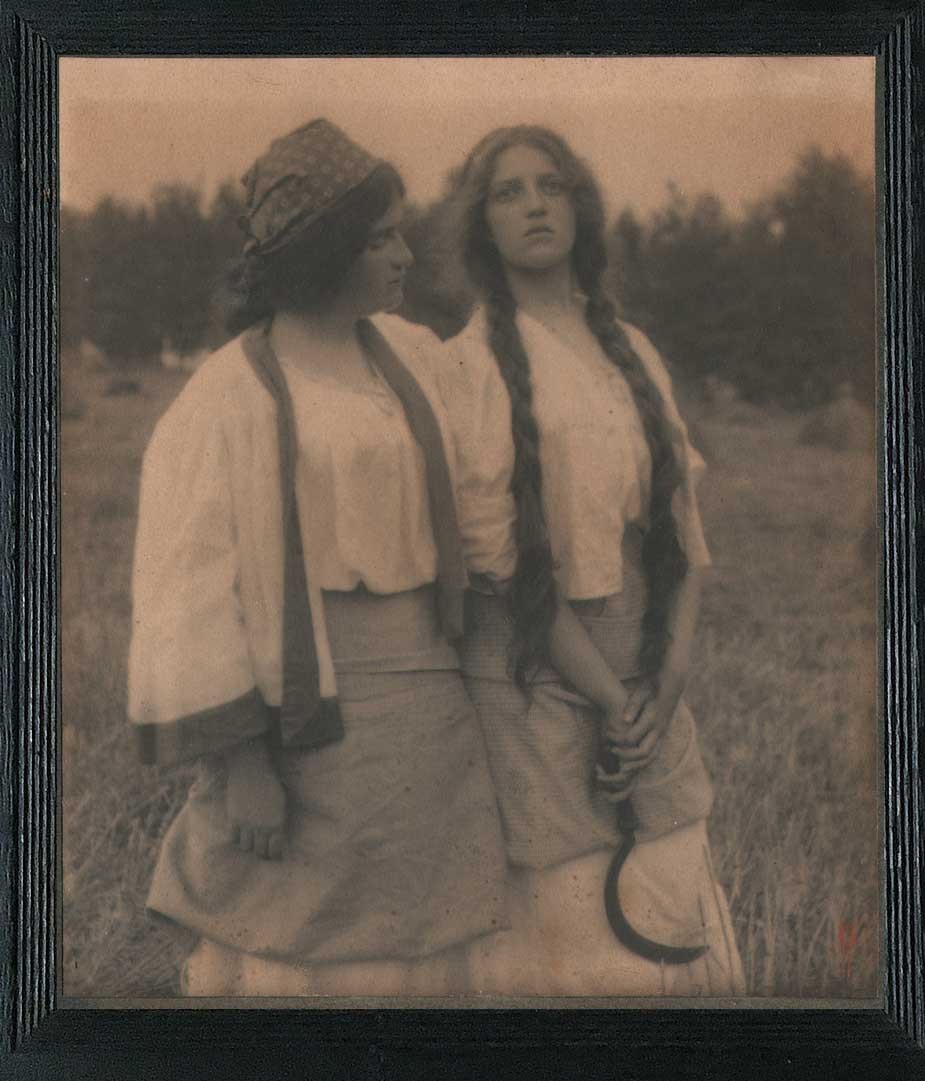 "The Song of the Meadow Lark": Mathilde Weil: American: (1872-1942) ca. 1900: Platinum print mounted on board signed in red with Weil cipher at lower right: 18.4 x 16.0 cm | 19.1 x 16.5 cm: black-painted wood frame: 28.4 x 25.7 cm: In December, 1899, critic Francis J. Ziegler, writing in Brush and Pencil for a review of the Philadelphia Photographic Salon, said of this photograph: "Among Philadelphia's artist photographers one of the most prominent is Miss Mathilde Weil, and her contributions to this exhibition are full of artistic excellence. Her "Song of the Meadow-Lark" has a suggestion of the Orient about it, notwithstanding the fact that the landscape is an American field and the two girls who have stopped in their reaping have American faces. This effect, I think, is due to the long braids of hair which hang down the front of one damsel's bodice, and the white jacket worn by her companion, the trimming of which repeats the same lines in artistic harmony." (p. 113) From: PhotoSeed Archive
"The Song of the Meadow Lark": Mathilde Weil: American: (1872-1942) ca. 1900: Platinum print mounted on board signed in red with Weil cipher at lower right: 18.4 x 16.0 cm | 19.1 x 16.5 cm: black-painted wood frame: 28.4 x 25.7 cm: In December, 1899, critic Francis J. Ziegler, writing in Brush and Pencil for a review of the Philadelphia Photographic Salon, said of this photograph: "Among Philadelphia's artist photographers one of the most prominent is Miss Mathilde Weil, and her contributions to this exhibition are full of artistic excellence. Her "Song of the Meadow-Lark" has a suggestion of the Orient about it, notwithstanding the fact that the landscape is an American field and the two girls who have stopped in their reaping have American faces. This effect, I think, is due to the long braids of hair which hang down the front of one damsel's bodice, and the white jacket worn by her companion, the trimming of which repeats the same lines in artistic harmony." (p. 113) From: PhotoSeed Archive
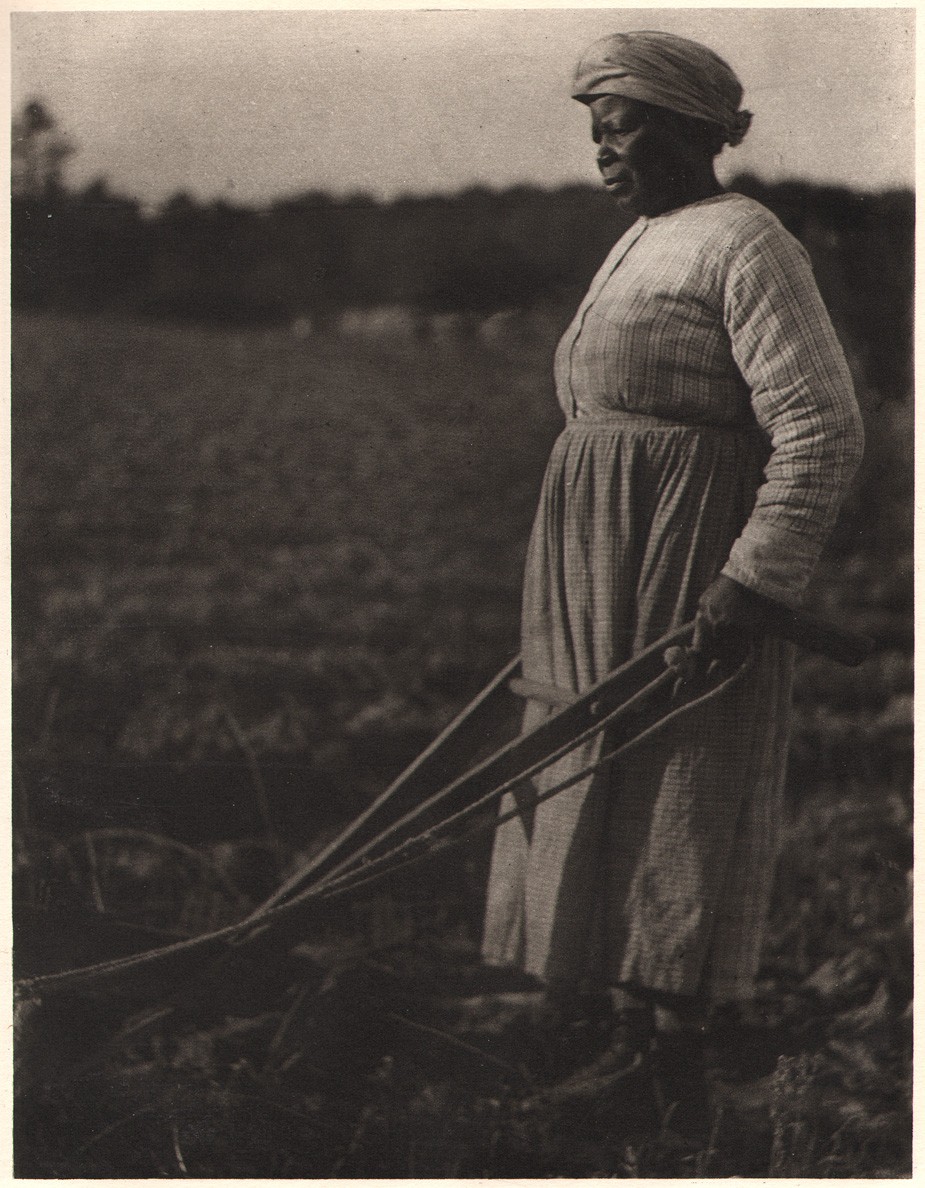 "Woman Behind Plow": Doris Ulmann, American: (1882-1934): 1933: hand-pulled photogravure: Plate 39 from the deluxe volume Roll Jordan Roll: New York: Robert O. Ballou: (text by Julia Peterkin) 21.2 x 16.3 | 28.4 x 20.5 cm: A landmark photographic volume of the 20th Century featuring ethnographic studies and portraits, this volume features 90 full-page copperplate gravures done in the Pictorial manner. Writing for the Amon Carter Museum of American Art in Texas, author Steve Watson describes the volume in part: "The book focuses on the lives of former slaves and their descendants on a plantation in the Gullah coastal region of South Carolina. Peterkin, who won the Pulitzer Prize for her novel Scarlet Sister Mary (Indianapolis: Bobbs-Merrill, 1928), was born in South Carolina and raised by a black nursemaid who taught her the Gullah dialect. She married the heir to Lang Syne, a 2,000-acre cotton plantation, which became the setting for Roll, Jordan, Roll. Ulmann began photographing there in 1929." From: PhotoSeed Archive
"Woman Behind Plow": Doris Ulmann, American: (1882-1934): 1933: hand-pulled photogravure: Plate 39 from the deluxe volume Roll Jordan Roll: New York: Robert O. Ballou: (text by Julia Peterkin) 21.2 x 16.3 | 28.4 x 20.5 cm: A landmark photographic volume of the 20th Century featuring ethnographic studies and portraits, this volume features 90 full-page copperplate gravures done in the Pictorial manner. Writing for the Amon Carter Museum of American Art in Texas, author Steve Watson describes the volume in part: "The book focuses on the lives of former slaves and their descendants on a plantation in the Gullah coastal region of South Carolina. Peterkin, who won the Pulitzer Prize for her novel Scarlet Sister Mary (Indianapolis: Bobbs-Merrill, 1928), was born in South Carolina and raised by a black nursemaid who taught her the Gullah dialect. She married the heir to Lang Syne, a 2,000-acre cotton plantation, which became the setting for Roll, Jordan, Roll. Ulmann began photographing there in 1929." From: PhotoSeed Archive
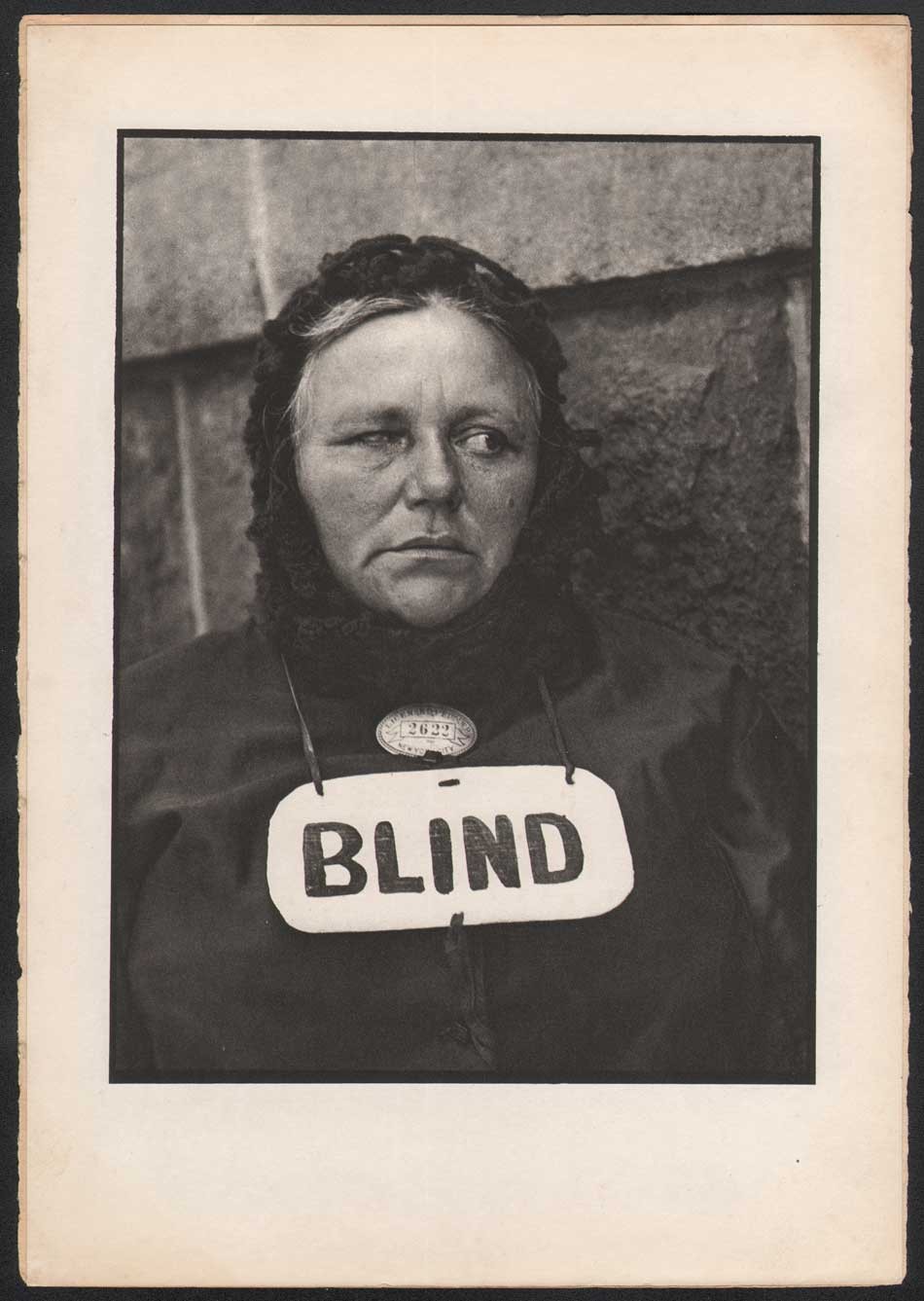 "Photograph-New York": Paul Strand, American: (1890-1976): 1917: hand-pulled photogravure from Camera Work XLIX/L: 22.4 x 16.6 | 29.7 x 20.6 cm: This iconic portrait of a blind woman, who has been issued a peddler's license by the city seen above her sign, was taken by Strand with the aid of either a false or prism lens as part of a series of ground-breaking modernist photographs done on the streets of New York City in the Fall of 1916. Writing the same year this portrait appeared in Camera Work, in August, 1917, an essay on Photography for the journal The Seven Arts concludes with the following observations by Strand-observations that could also certainly apply to the joyful diversity of human beings themselves, as in this case- womankind herself: "The existence of a medium, after all, is its absolute justification, if as so many seem to think, it needs one, and all comparison of potentialities is useless and irrelevant. Whether a water-color is inferior to an oil, or whether a drawing, an etching, or a photograph is not as important as either, is inconsequent. To have to despise something else is a sign of impotence. Let us rather accept joyously and with gratitude everything through which the spirit of man seeks to an ever fuller and more intense self-realization." (pp. 525-26) From: PhotoSeed Archive
"Photograph-New York": Paul Strand, American: (1890-1976): 1917: hand-pulled photogravure from Camera Work XLIX/L: 22.4 x 16.6 | 29.7 x 20.6 cm: This iconic portrait of a blind woman, who has been issued a peddler's license by the city seen above her sign, was taken by Strand with the aid of either a false or prism lens as part of a series of ground-breaking modernist photographs done on the streets of New York City in the Fall of 1916. Writing the same year this portrait appeared in Camera Work, in August, 1917, an essay on Photography for the journal The Seven Arts concludes with the following observations by Strand-observations that could also certainly apply to the joyful diversity of human beings themselves, as in this case- womankind herself: "The existence of a medium, after all, is its absolute justification, if as so many seem to think, it needs one, and all comparison of potentialities is useless and irrelevant. Whether a water-color is inferior to an oil, or whether a drawing, an etching, or a photograph is not as important as either, is inconsequent. To have to despise something else is a sign of impotence. Let us rather accept joyously and with gratitude everything through which the spirit of man seeks to an ever fuller and more intense self-realization." (pp. 525-26) From: PhotoSeed Archive
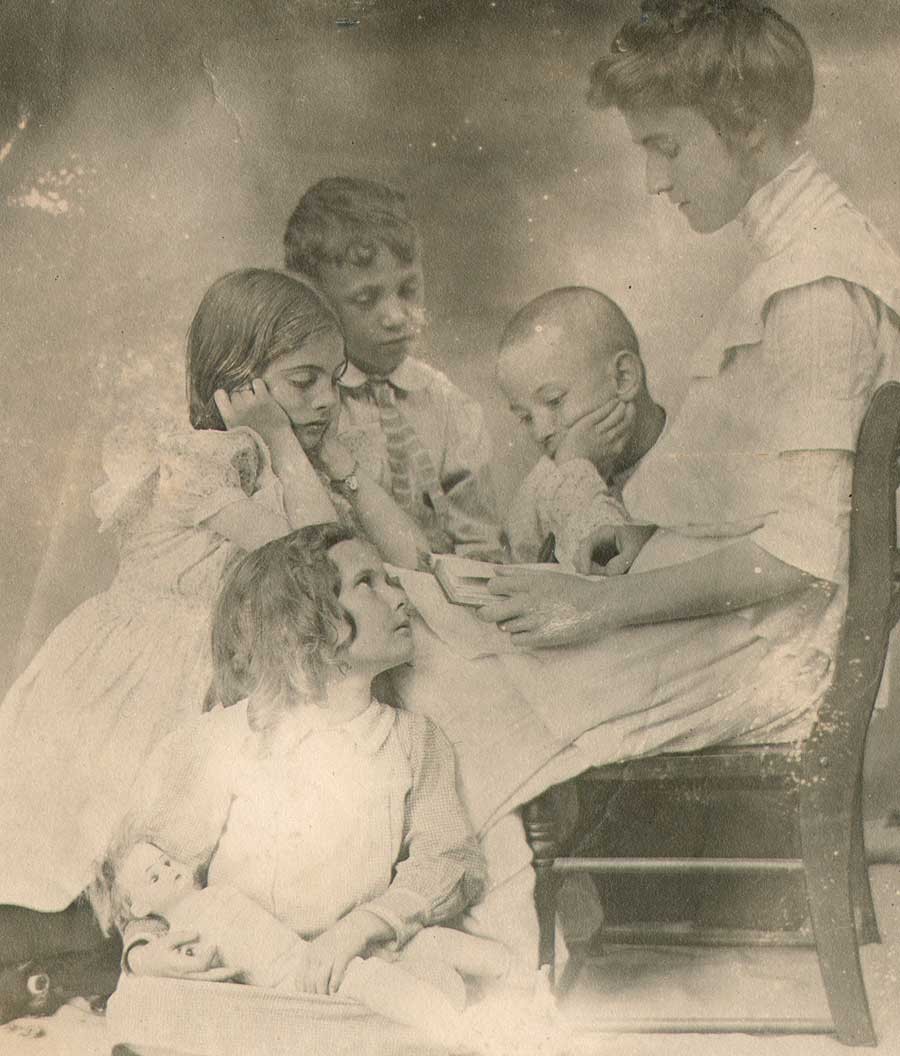 Detail: "Untitled Study of Woman Reading to Children: Juliana Royster, American: ( 1876-1962) ca. 1905-10: Gelatino-Choloride (POP) print: 11.8 x 10.0 cm: An artist who excelled in multiple mediums, Juliana Royster, from Raleigh, North Carolina, learned photography while attending Saint Mary’s School there, and is best known in the modern era for her founding in 1917, along with husband Jacques (born James) Busbee, (1870-1947) the Jugtown Pottery in Seagrove, North Carolina. From: PhotoSeed Archive
Detail: "Untitled Study of Woman Reading to Children: Juliana Royster, American: ( 1876-1962) ca. 1905-10: Gelatino-Choloride (POP) print: 11.8 x 10.0 cm: An artist who excelled in multiple mediums, Juliana Royster, from Raleigh, North Carolina, learned photography while attending Saint Mary’s School there, and is best known in the modern era for her founding in 1917, along with husband Jacques (born James) Busbee, (1870-1947) the Jugtown Pottery in Seagrove, North Carolina. From: PhotoSeed Archive
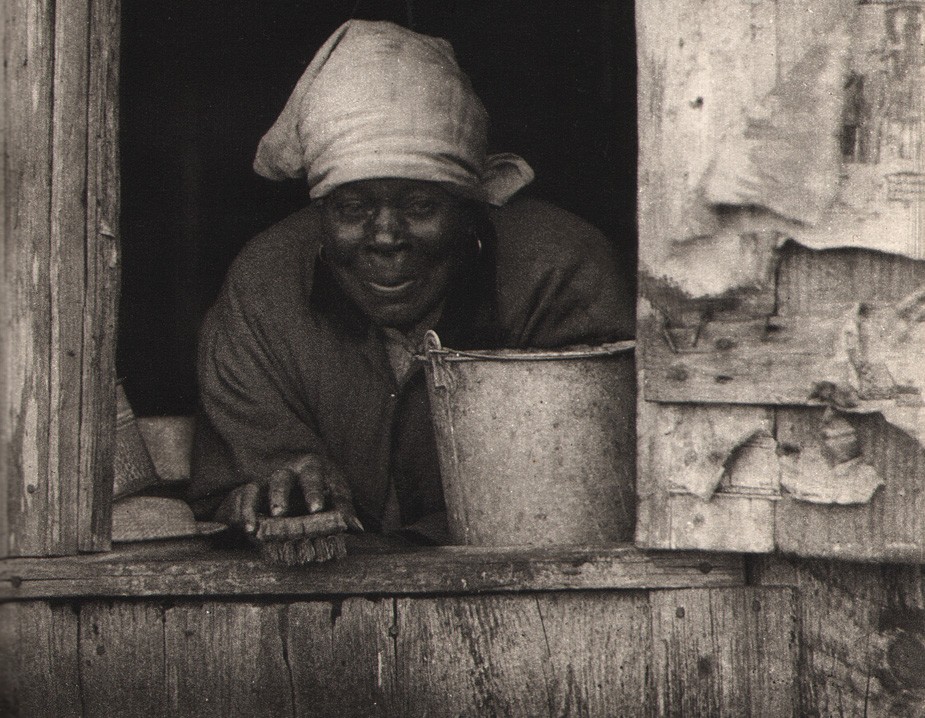 Detail: "Woman with Scrub brush Looking out Window": Doris Ulmann, American: (1882-1934): 1933: hand-pulled photogravure: Plate 66 from the deluxe volume Roll Jordan Roll: New York: Robert O. Ballou: (text by Julia Peterkin) 21.0 x 16.3 | 28.4 x 20.5 cm: A landmark photographic volume of the 20th Century featuring ethnographic studies and portraits, this volume features 90 full-page copperplate gravures done in the Pictorial manner. Writing for the Amon Carter Museum of American Art in Texas, author Steve Watson describes the volume in part: "The book focuses on the lives of former slaves and their descendants on a plantation in the Gullah coastal region of South Carolina. Peterkin, who won the Pulitzer Prize for her novel Scarlet Sister Mary (Indianapolis: Bobbs-Merrill, 1928), was born in South Carolina and raised by a black nursemaid who taught her the Gullah dialect. She married the heir to Lang Syne, a 2,000-acre cotton plantation, which became the setting for Roll, Jordan, Roll. Ulmann began photographing there in 1929." From: PhotoSeed Archive
Detail: "Woman with Scrub brush Looking out Window": Doris Ulmann, American: (1882-1934): 1933: hand-pulled photogravure: Plate 66 from the deluxe volume Roll Jordan Roll: New York: Robert O. Ballou: (text by Julia Peterkin) 21.0 x 16.3 | 28.4 x 20.5 cm: A landmark photographic volume of the 20th Century featuring ethnographic studies and portraits, this volume features 90 full-page copperplate gravures done in the Pictorial manner. Writing for the Amon Carter Museum of American Art in Texas, author Steve Watson describes the volume in part: "The book focuses on the lives of former slaves and their descendants on a plantation in the Gullah coastal region of South Carolina. Peterkin, who won the Pulitzer Prize for her novel Scarlet Sister Mary (Indianapolis: Bobbs-Merrill, 1928), was born in South Carolina and raised by a black nursemaid who taught her the Gullah dialect. She married the heir to Lang Syne, a 2,000-acre cotton plantation, which became the setting for Roll, Jordan, Roll. Ulmann began photographing there in 1929." From: PhotoSeed Archive
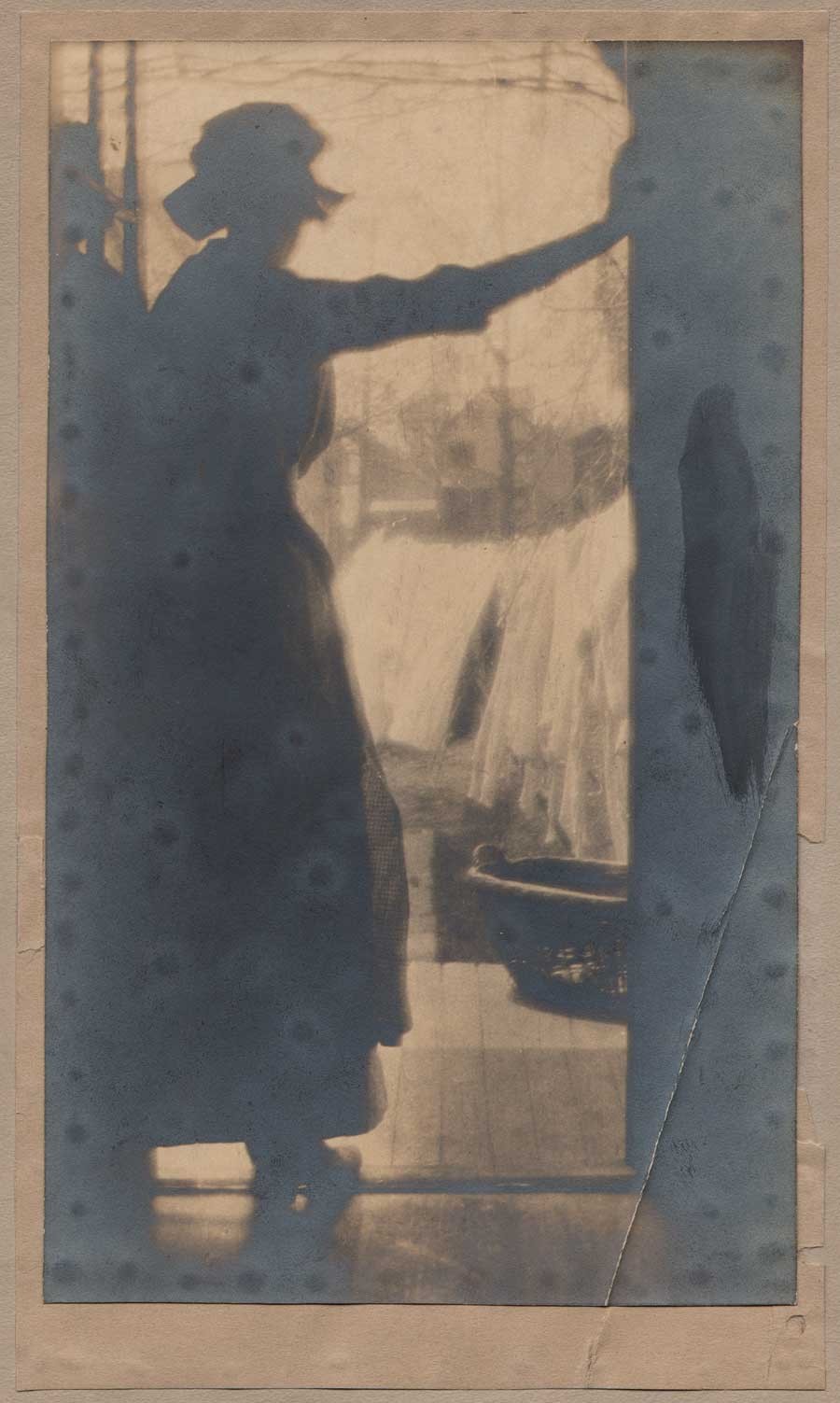 "A Moments Leisure": Ben J. Boyd: American, ( 1881-1958): ca. 1915-20: Gelatin Silver print, mounted: 24.0 x 14.4 | 26.3 x 15.4 | 34.2 x 26.6 cm: Silhouetted in a doorway, a woman takes a break from hanging laundry seen at center in this unusual home-life study depicting the everyday struggle of women done here by long-time Wilkes-Barre, PA resident and Camera Club member Benjamin Joslin Boyd. From: PhotoSeed Archive
"A Moments Leisure": Ben J. Boyd: American, ( 1881-1958): ca. 1915-20: Gelatin Silver print, mounted: 24.0 x 14.4 | 26.3 x 15.4 | 34.2 x 26.6 cm: Silhouetted in a doorway, a woman takes a break from hanging laundry seen at center in this unusual home-life study depicting the everyday struggle of women done here by long-time Wilkes-Barre, PA resident and Camera Club member Benjamin Joslin Boyd. From: PhotoSeed Archive
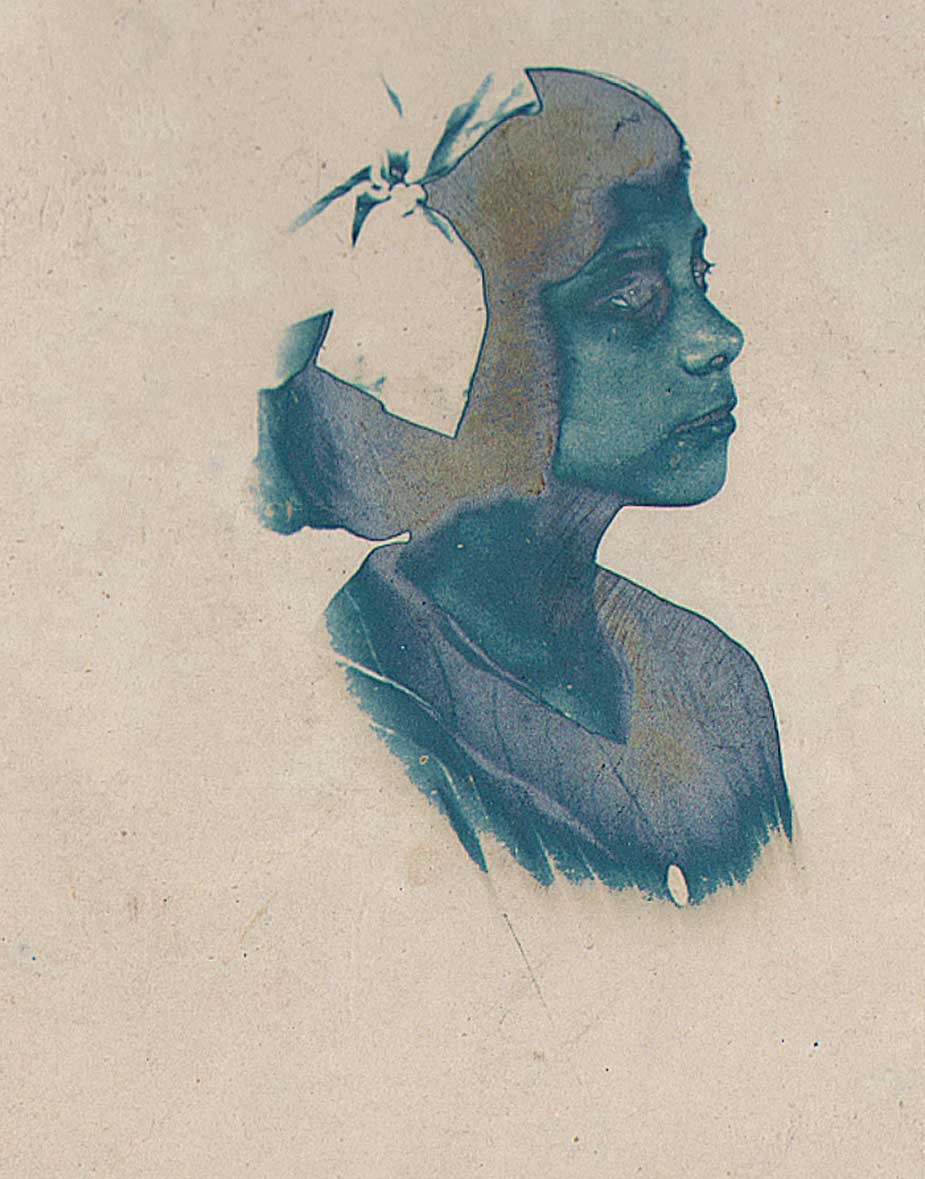 "Female Head Study": unknown, probably American photographer: ca. 1900-20: Reverse negative, Gelatin-silver over Cyanotype photograph, unmounted: 8.7 x 6.2 cm: Whether intentional or not, and for the purposes of this post, this alternative, multi-process study of a young woman is symbolic for a joyous, multi-ethnic celebration of women's diversity everywhere. From: PhotoSeed Archive
"Female Head Study": unknown, probably American photographer: ca. 1900-20: Reverse negative, Gelatin-silver over Cyanotype photograph, unmounted: 8.7 x 6.2 cm: Whether intentional or not, and for the purposes of this post, this alternative, multi-process study of a young woman is symbolic for a joyous, multi-ethnic celebration of women's diversity everywhere. From: PhotoSeed ArchiveNew Year Liftoff
Posted January 2017 in Aerial Photography, History of Photography, New Additions, Significant Photographers
“Liberty cannot be preserved without a general knowledge among the people.”
– John Adams
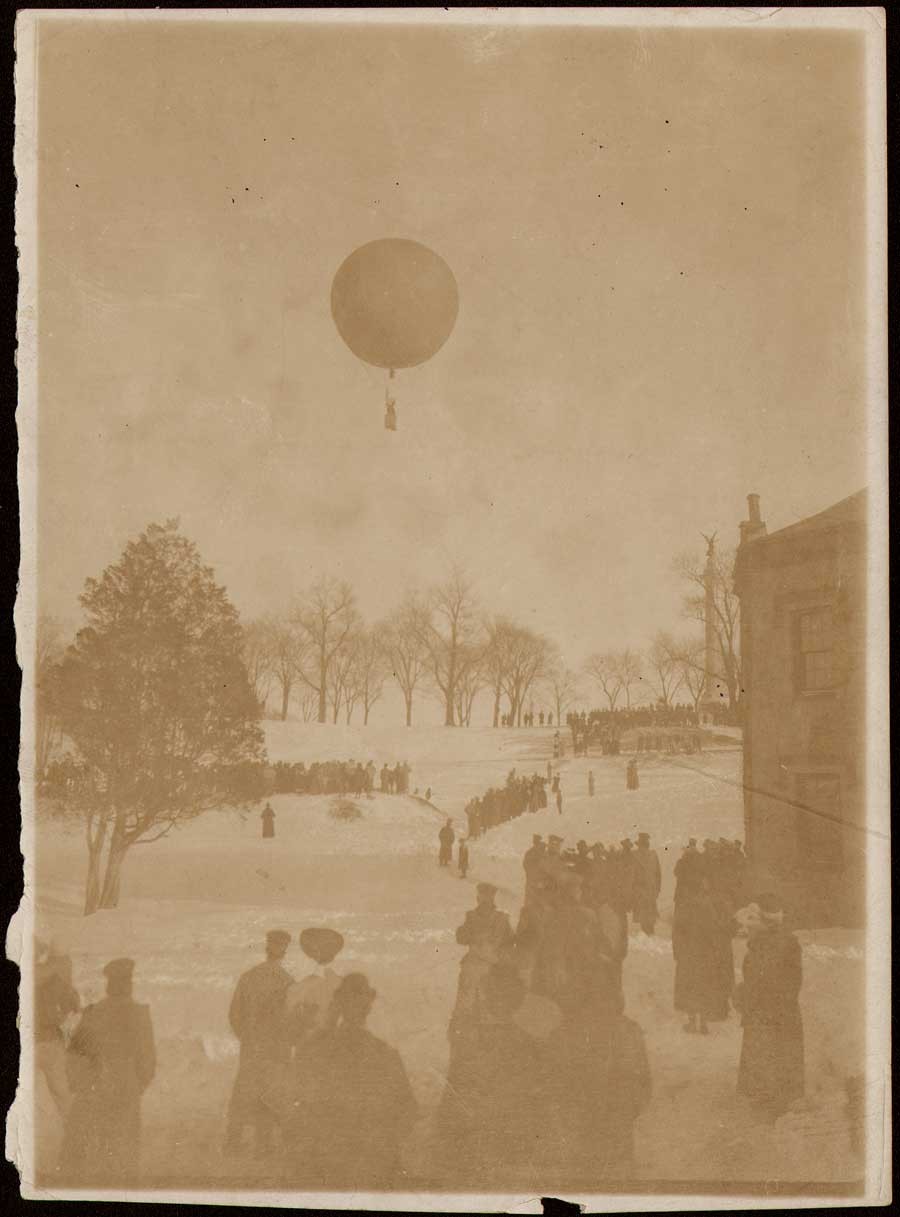 "First Balloon Flight Under the American Aero Club": 1906: James H. Hare: British: 1856-1946: Chloride print (POP) 17.05 x 12.05 | 17.6 x 12.8 cm: With a crowd looking on including officers, cadets and scientists, French aeronaut Charles Levee is seen ascending in the balloon "L'Allouette" from the siege battery at West Point Military Academy in New York State on Sunday, 11th February, 1906. This is the original photograph taken by pioneering British photojournalist Jimmy Hare of the ascent, which was published for his employer Collier's Magazine on 24th February of that year. The fledgling American Aero Club, based in New York City, hired Charles Levee to pilot their 28' diameter yellow balloon, which took 12,500 cubic feet of coal gas to inflate according to a New York Times dispatch. "Wearing an ordinary Winter overcoat and a close-fitting cap" Levee ascended at 3:55 p.m. in the basket of the balloon made of cotton-fabric (the first time a balloon launched from West Point) and traveled nearly 60 kilometers before finally descending at Hurley, New York at 8:10 p.m. with the aid of a rip cord. from: PhotoSeed Archive
"First Balloon Flight Under the American Aero Club": 1906: James H. Hare: British: 1856-1946: Chloride print (POP) 17.05 x 12.05 | 17.6 x 12.8 cm: With a crowd looking on including officers, cadets and scientists, French aeronaut Charles Levee is seen ascending in the balloon "L'Allouette" from the siege battery at West Point Military Academy in New York State on Sunday, 11th February, 1906. This is the original photograph taken by pioneering British photojournalist Jimmy Hare of the ascent, which was published for his employer Collier's Magazine on 24th February of that year. The fledgling American Aero Club, based in New York City, hired Charles Levee to pilot their 28' diameter yellow balloon, which took 12,500 cubic feet of coal gas to inflate according to a New York Times dispatch. "Wearing an ordinary Winter overcoat and a close-fitting cap" Levee ascended at 3:55 p.m. in the basket of the balloon made of cotton-fabric (the first time a balloon launched from West Point) and traveled nearly 60 kilometers before finally descending at Hurley, New York at 8:10 p.m. with the aid of a rip cord. from: PhotoSeed Archive
Lately, I’ve become worried about that general knowledge thing. But this is not a lecture, and a new year is upon us, so bear with me here. Late this summer, I came full-circle back to my native New England after retiring from a 30-year run wearing the hat of photojournalist for newspapers across the country. Photographing and sharing the stories of people from literally all walks of life has been my best teacher and given me the most valuable education and perspective I could ever hope for in my career: the nuance of which I often find lacking in the public discourse of late rising from these so-called divided States of America.
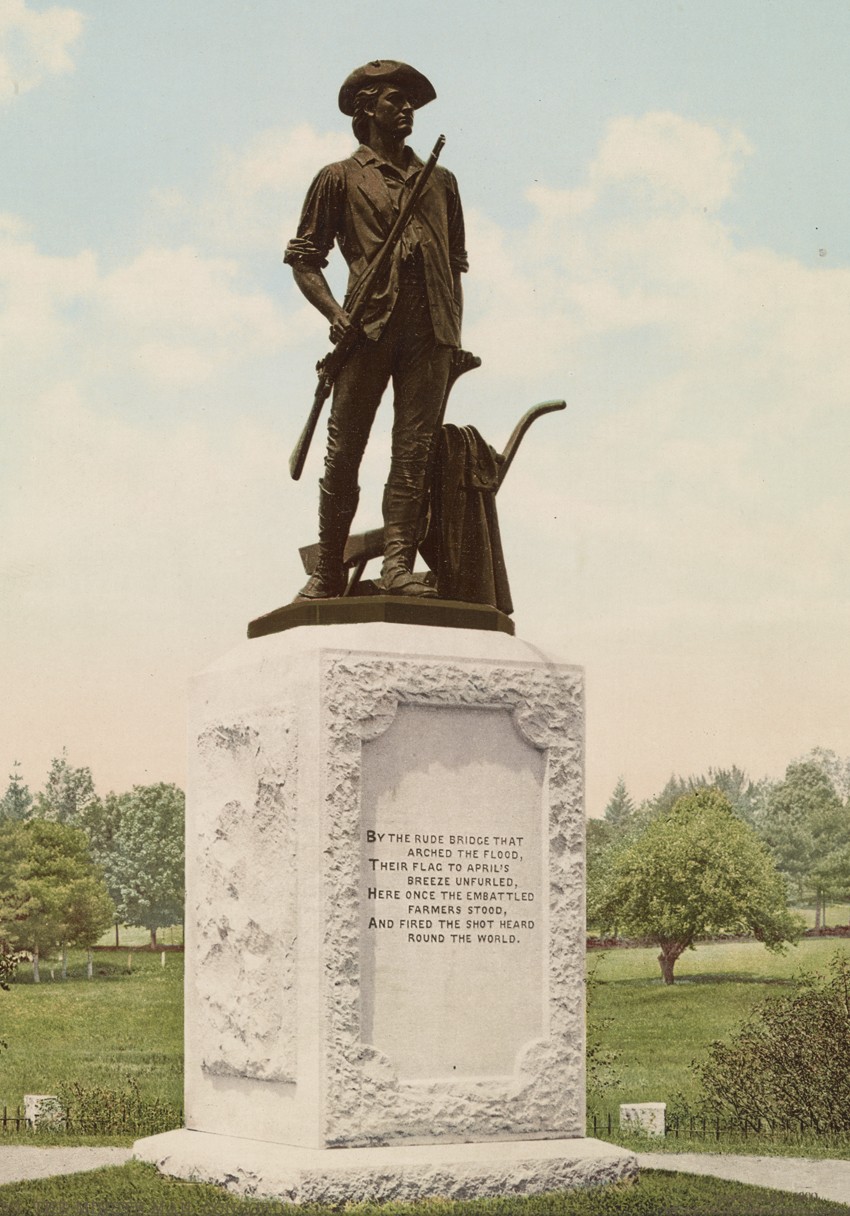 The Minute Man Statue: ca. 1900: by unknown photographer working for Detroit Photographic Company: Photochrom: from album (29.0 x 40.0 cm) of 48 Photochroms depicting mostly New England historical places and views prepared by the Detroit Photographic Co. for use as a catalog in their offices. Statue in bronze by American sculptor Daniel Chester French (1850-1931) dedicated on the centenary of the Battle of Concord on 19th April, 1875: During the first battle of the American Revolutionary War, which took place here at The Old North Bridge on the 19th of April, 1775 in the town of Concord, MA, (then located in the British Crown colony of the Province of Massachusetts Bay) a group of 37 Acton, MA Minutemen led by Captain Isaac Davis (b. 1745) faced off (with other militia companies made up of about 500 men) against 100 British "Regular" troops. Davis was the first casualty at the bridge during the American War of independence, with Acton Minuteman Abner Hosmer, (1754-1775) a private who played his drum into battle as company musician, the second mortally wounded after being shot through the head. (Acton Minuteman James Hayward also died later that day) On the base of this statue are inscribed the first stanza of American poet Ralph Waldo Emersons Concord Hymn from 1836:"By the rude bridge that arched the flood, Their flag to Aprils breeze unfurled, Here once the embattled farmers stood And fired the shot heard round the world." Said to be modeled after Captain Davis but also known to have been done from live models posing in the studio of sculptor Daniel Chester French, the Minute Man statue proudly shows the enduring American spirit during the nations struggle for freedom and independence. from: Library of Congress: Call Number LOT 12003, p. 30.
The Minute Man Statue: ca. 1900: by unknown photographer working for Detroit Photographic Company: Photochrom: from album (29.0 x 40.0 cm) of 48 Photochroms depicting mostly New England historical places and views prepared by the Detroit Photographic Co. for use as a catalog in their offices. Statue in bronze by American sculptor Daniel Chester French (1850-1931) dedicated on the centenary of the Battle of Concord on 19th April, 1875: During the first battle of the American Revolutionary War, which took place here at The Old North Bridge on the 19th of April, 1775 in the town of Concord, MA, (then located in the British Crown colony of the Province of Massachusetts Bay) a group of 37 Acton, MA Minutemen led by Captain Isaac Davis (b. 1745) faced off (with other militia companies made up of about 500 men) against 100 British "Regular" troops. Davis was the first casualty at the bridge during the American War of independence, with Acton Minuteman Abner Hosmer, (1754-1775) a private who played his drum into battle as company musician, the second mortally wounded after being shot through the head. (Acton Minuteman James Hayward also died later that day) On the base of this statue are inscribed the first stanza of American poet Ralph Waldo Emersons Concord Hymn from 1836:"By the rude bridge that arched the flood, Their flag to Aprils breeze unfurled, Here once the embattled farmers stood And fired the shot heard round the world." Said to be modeled after Captain Davis but also known to have been done from live models posing in the studio of sculptor Daniel Chester French, the Minute Man statue proudly shows the enduring American spirit during the nations struggle for freedom and independence. from: Library of Congress: Call Number LOT 12003, p. 30.
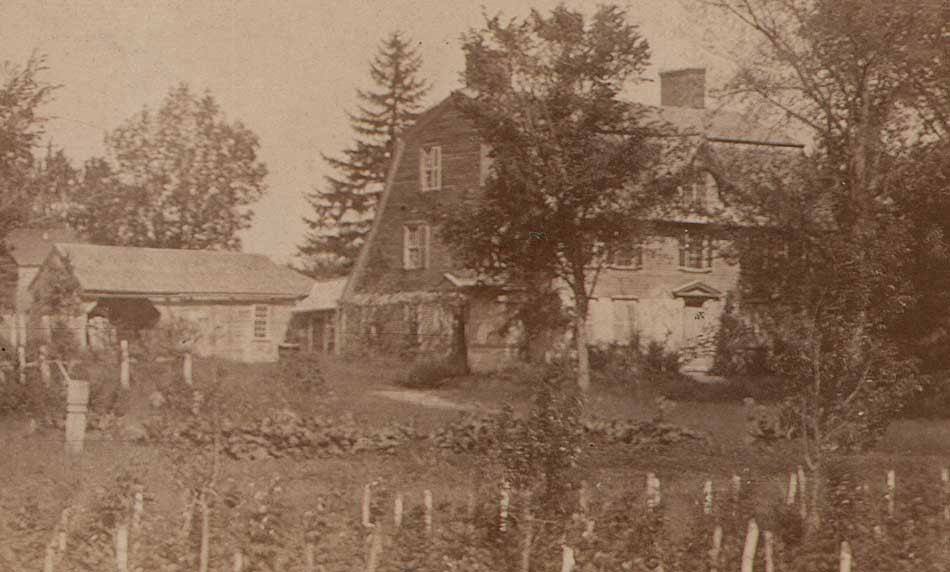 Detail: "Old Manse, No. 3" from: Views in Concord, Mass.: ca. 1885: Alfred Winslow Hosmer, American (1851-1903) Pasted Albumen print on oversized cabinet card with gilt edging: 11.2 x 19.8 | 18.1 x 21.4 cm: Approximately 110 years later, another Hosmer descendent to Private Abner Hosmer, the photographer Alfred Hosmer, photographed scenes in and around Concord like this one for sale as souvenir keepsake cabinet cards of battleground scenes and places, including the Minute Man statue. This view, showing the stately pile The Old Manse, was built in 1770 for the Rev. William Emerson, (1743-1776) whose family witnessed the battle at the Old North Bridge of 19th April 1775 from the upstairs windows of the home. Later, Emerson's grandson, the acclaimed Transcendentalist writer Ralph Waldo Emerson (1803-1882) lived in the home and later wrote his Concord Hymn of 1836 as referenced previously in this post. The photographer Alfred Hosmer, whose surviving archive of over 800 glass plate negatives is housed at the Concord (MA) Free Library, is also significant, according to the library, for "his role in establishing Henry David Thoreau’s reputation as a major American author. He was one of the earliest admirers and promoters of Thoreau’s life and writings. He expressed his sympathy with and interest in Thoreau through his own first-hand observations of the flora and fauna of Concord, his Thoreau-related photography, his correspondence with other Thoreau enthusiasts, and his active collecting of Thoreauviana." From: PhotoSeed Archive
Detail: "Old Manse, No. 3" from: Views in Concord, Mass.: ca. 1885: Alfred Winslow Hosmer, American (1851-1903) Pasted Albumen print on oversized cabinet card with gilt edging: 11.2 x 19.8 | 18.1 x 21.4 cm: Approximately 110 years later, another Hosmer descendent to Private Abner Hosmer, the photographer Alfred Hosmer, photographed scenes in and around Concord like this one for sale as souvenir keepsake cabinet cards of battleground scenes and places, including the Minute Man statue. This view, showing the stately pile The Old Manse, was built in 1770 for the Rev. William Emerson, (1743-1776) whose family witnessed the battle at the Old North Bridge of 19th April 1775 from the upstairs windows of the home. Later, Emerson's grandson, the acclaimed Transcendentalist writer Ralph Waldo Emerson (1803-1882) lived in the home and later wrote his Concord Hymn of 1836 as referenced previously in this post. The photographer Alfred Hosmer, whose surviving archive of over 800 glass plate negatives is housed at the Concord (MA) Free Library, is also significant, according to the library, for "his role in establishing Henry David Thoreau’s reputation as a major American author. He was one of the earliest admirers and promoters of Thoreau’s life and writings. He expressed his sympathy with and interest in Thoreau through his own first-hand observations of the flora and fauna of Concord, his Thoreau-related photography, his correspondence with other Thoreau enthusiasts, and his active collecting of Thoreauviana." From: PhotoSeed Archive
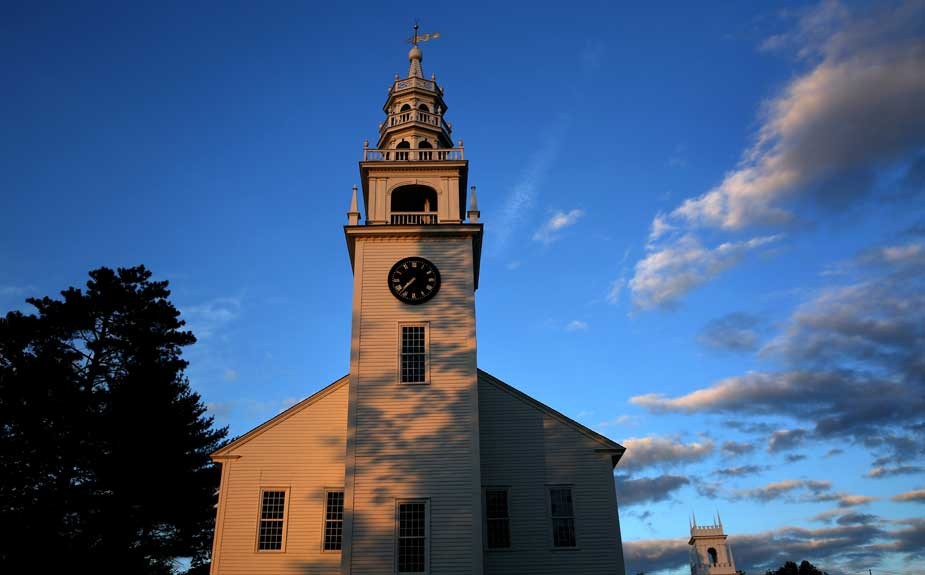 "Witness to a Revolution" (American): 2015: David Spencer for PhotoSeed Archive. With Mount Monadnock just off to the west, the waning light of day washes over the white clapboard siding of the Original Meeting House for the Town of Jaffrey, New Hampshire. Erected in 1775 only two years after the town's incorporation and after American Minutemen first began their armed fight with the British at Concord and Lexington, tradition states the frame of the structure was raised on Saturday, June 17th of that year, with workers recounting they heard booming cannon fire 70 miles east in Boston which they learned the next day was the Battle of Bunker Hill. Originally used by Congregationalists for church services and town business, worship took place here until 1844. The town website gives a few more details: "In 1822, the bell tower and spire were added, paid for by donations on the condition that the Town would buy the bell, which it did the following year. It was cast by the Paul Revere Foundry."
"Witness to a Revolution" (American): 2015: David Spencer for PhotoSeed Archive. With Mount Monadnock just off to the west, the waning light of day washes over the white clapboard siding of the Original Meeting House for the Town of Jaffrey, New Hampshire. Erected in 1775 only two years after the town's incorporation and after American Minutemen first began their armed fight with the British at Concord and Lexington, tradition states the frame of the structure was raised on Saturday, June 17th of that year, with workers recounting they heard booming cannon fire 70 miles east in Boston which they learned the next day was the Battle of Bunker Hill. Originally used by Congregationalists for church services and town business, worship took place here until 1844. The town website gives a few more details: "In 1822, the bell tower and spire were added, paid for by donations on the condition that the Town would buy the bell, which it did the following year. It was cast by the Paul Revere Foundry."
But I’m only one person, what can I do about it but spout a bunch of words? Photography of course. The so-called Universal language. Like everyone’s favorite sports team. Surely one can have opinions concerning old photographs? I’m betting yes and I hope you will.
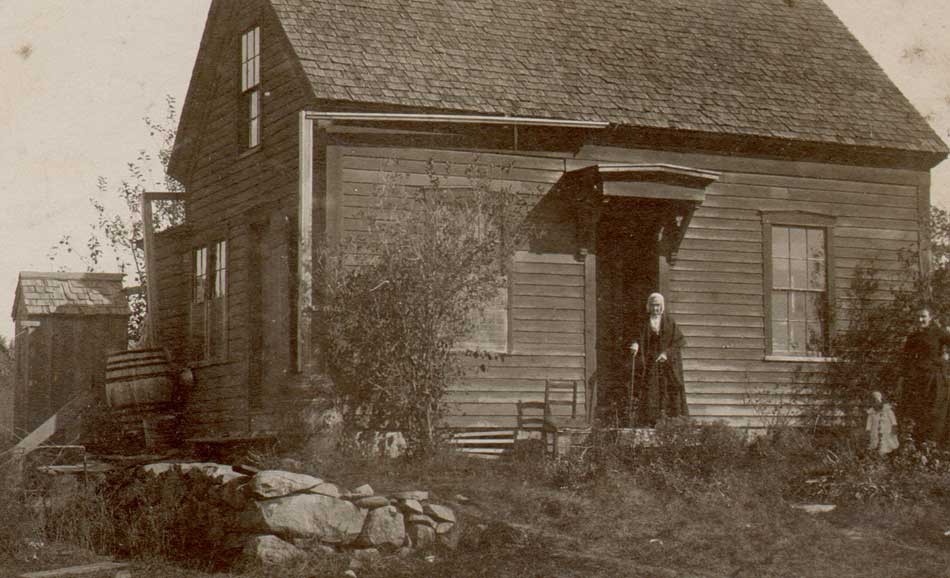 Detail: "Aunt Ward": ca. 1890-1900 : Attributed photographer: Charles Rollins Tucker, American (b. 1868): mounted brown-toned gelatin silver or albumen print on oversized card: 11.1 x 18.4 cm | 20.4 x 25.5 cm. Believed to have been taken in Massachusetts, and with cane firmly held in elderly hand, this unknown "Aunt Ward", who was a blood relation to the photographer, can be seen standing in threshold at center, could rightly epitomize the hardscrabble resourcefulness of a typical New England Yankee before all the modern benefits of the late 20th Century Industrial Revolution kicked into high gear. At the front of her weather-beaten Cape Cod style dwelling can be seen a trusty ladderback garden chair parked to the left of the doorway as well as wooden gutters overhead leading to large rain barrels front and back and anchored from behind at far left by a shingled outhouse. From: PhotoSeed Archive
Detail: "Aunt Ward": ca. 1890-1900 : Attributed photographer: Charles Rollins Tucker, American (b. 1868): mounted brown-toned gelatin silver or albumen print on oversized card: 11.1 x 18.4 cm | 20.4 x 25.5 cm. Believed to have been taken in Massachusetts, and with cane firmly held in elderly hand, this unknown "Aunt Ward", who was a blood relation to the photographer, can be seen standing in threshold at center, could rightly epitomize the hardscrabble resourcefulness of a typical New England Yankee before all the modern benefits of the late 20th Century Industrial Revolution kicked into high gear. At the front of her weather-beaten Cape Cod style dwelling can be seen a trusty ladderback garden chair parked to the left of the doorway as well as wooden gutters overhead leading to large rain barrels front and back and anchored from behind at far left by a shingled outhouse. From: PhotoSeed Archive
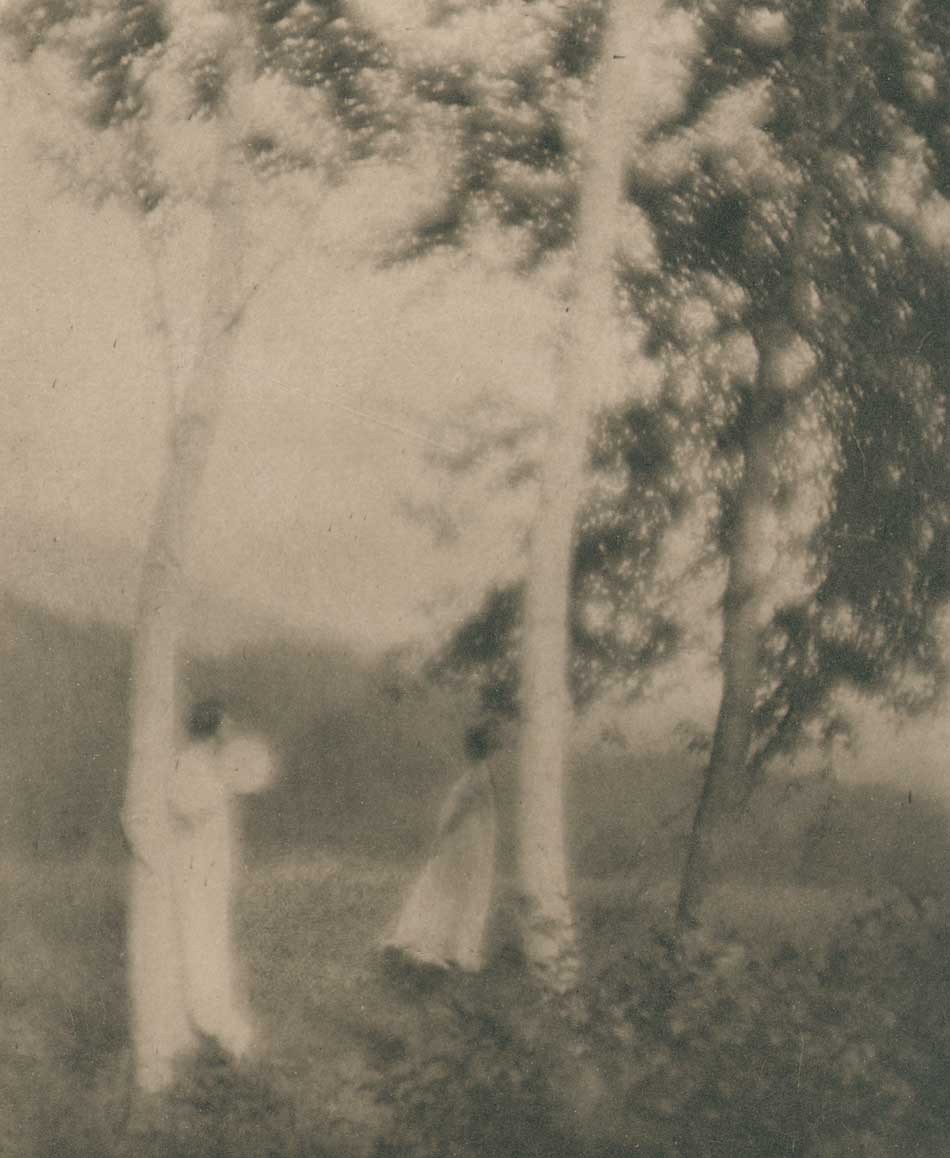 Detail: "VII. White Trees": 1910: George H. Seeley, American (1880-1955) : hand-pulled Japan-paper tissue photogravure by the Manhattan Photogravure Co. included with Camera Work issue XXIX:full image: 19.9 x 15.7 cm: Amateur photographer and painter George Henry Seeley, a native of Stockbridge, Massachusetts, made his living as supervisor of art for his local school district. In order to take full advantage of the showy beauty of the Berkshire region with a hint of the Taconic mountain range seen in the distance, he positioned his sisters in this plein air allegorical composition, with the trunk and back of a white birch tree (Betula papyrifera) anchoring this triangulated landscape at left. From: PhotoSeed Archive
Detail: "VII. White Trees": 1910: George H. Seeley, American (1880-1955) : hand-pulled Japan-paper tissue photogravure by the Manhattan Photogravure Co. included with Camera Work issue XXIX:full image: 19.9 x 15.7 cm: Amateur photographer and painter George Henry Seeley, a native of Stockbridge, Massachusetts, made his living as supervisor of art for his local school district. In order to take full advantage of the showy beauty of the Berkshire region with a hint of the Taconic mountain range seen in the distance, he positioned his sisters in this plein air allegorical composition, with the trunk and back of a white birch tree (Betula papyrifera) anchoring this triangulated landscape at left. From: PhotoSeed Archive
And photographic puns besides the point, I’ve learned there is no such thing as black and white-especially concerning peoples lives and how those lives are lived. Speaking of that aforementioned questionable public discourse, I’m more of the belief life is all about colorful nuance, and unless you have walked a mile in someone’s shoes, as my mother would say, what do you really know to be their reality and truths?
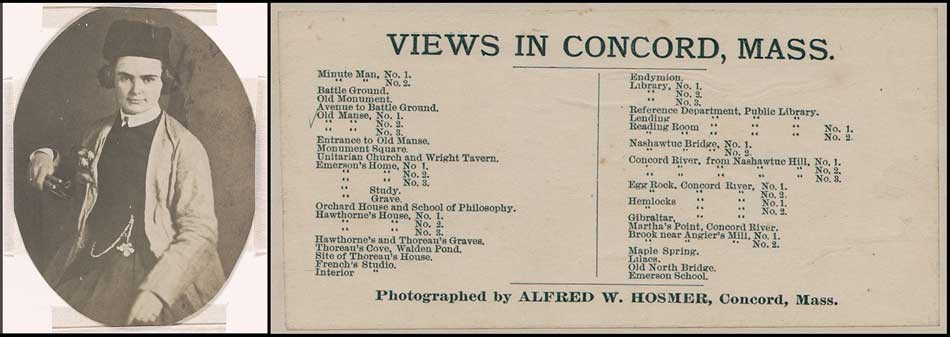 Hosmer & Sculpture: Left: Portrait of sculptor Harriet Goodhue Hosmer (1830-1908): by Frederick DeBourg Richards, American (1822-1903): ca. 1850-60: salted paper print on card mount ; photo (oval) 15.7 x 12.1 cm, on mount 35.5 x 27.9 cm: Considered the most distinguished female sculptor in America during the 19th century, and working in the neoclassical style, Harriet Hosmer clutches her sculpting tools seen at far left while wearing her artist's smock in this portrait probably taken in Rome, Italy. Born 50 years earlier than photographer and painter George Seeley, Hosmer finished her early education just north of Seeley's Stockbridge in the town of Lenox, completing a course of study at Elizabeth Sedgwick’s School for Young Ladies before learning disciplines including rowing, skating and riding. With an interest in anatomy at a young age spurred by her father Hiram's occupation as a physician, her artistic skills began to take form after she took private lessons when only 20. {Women were not allowed to attend medical schools during that time.} She decided to to travel to Rome to further hone her skills and quickly made a name for herself there, receiving her first commission in 1856. Many of her works survive, including a marble sculpture of Puck (Wadsworth Atheneum in Hartford, CT) and a towering 10' likeness in bronze of Missouri Senator Thomas Hart Benton dedicated in 1868 (recently refurbished) and located in Lafayette Park in St. Louis. Of this gender-breaking artist, Hosmer's friend Elizabeth Barrett Browning described Harriet as “a perfectly emancipated female.” from: LOC Call Number: LOT 14120, no. 20. Right: pasted paper label: "Views in Concord, Mass." ca. 1885: on verso of oversized cabinet card "Old Manse, No. 3": Photographed by Alfred W. Hosmer, Concord, Mass. label: 7.0 x 14.4 cm; card: 18.1 x 21.4 cm. Born 20 years after his cousin Harriet Hosmer, Alfred Winslow Hosmer (1851-1903) also had a connection with sculpture via his friendship with fellow Concord, Mass. resident and sculptor Daniel Chester French. French, whose first major commission was the Minute Man statue outlined in this post, also had his Concord art studio photographed by Hosmer, with several cabinet card views including French's life-size nude sculpture of the Greek mythical male shepherd Endymion listed here for sale. From: PhotoSeed Archive
Hosmer & Sculpture: Left: Portrait of sculptor Harriet Goodhue Hosmer (1830-1908): by Frederick DeBourg Richards, American (1822-1903): ca. 1850-60: salted paper print on card mount ; photo (oval) 15.7 x 12.1 cm, on mount 35.5 x 27.9 cm: Considered the most distinguished female sculptor in America during the 19th century, and working in the neoclassical style, Harriet Hosmer clutches her sculpting tools seen at far left while wearing her artist's smock in this portrait probably taken in Rome, Italy. Born 50 years earlier than photographer and painter George Seeley, Hosmer finished her early education just north of Seeley's Stockbridge in the town of Lenox, completing a course of study at Elizabeth Sedgwick’s School for Young Ladies before learning disciplines including rowing, skating and riding. With an interest in anatomy at a young age spurred by her father Hiram's occupation as a physician, her artistic skills began to take form after she took private lessons when only 20. {Women were not allowed to attend medical schools during that time.} She decided to to travel to Rome to further hone her skills and quickly made a name for herself there, receiving her first commission in 1856. Many of her works survive, including a marble sculpture of Puck (Wadsworth Atheneum in Hartford, CT) and a towering 10' likeness in bronze of Missouri Senator Thomas Hart Benton dedicated in 1868 (recently refurbished) and located in Lafayette Park in St. Louis. Of this gender-breaking artist, Hosmer's friend Elizabeth Barrett Browning described Harriet as “a perfectly emancipated female.” from: LOC Call Number: LOT 14120, no. 20. Right: pasted paper label: "Views in Concord, Mass." ca. 1885: on verso of oversized cabinet card "Old Manse, No. 3": Photographed by Alfred W. Hosmer, Concord, Mass. label: 7.0 x 14.4 cm; card: 18.1 x 21.4 cm. Born 20 years after his cousin Harriet Hosmer, Alfred Winslow Hosmer (1851-1903) also had a connection with sculpture via his friendship with fellow Concord, Mass. resident and sculptor Daniel Chester French. French, whose first major commission was the Minute Man statue outlined in this post, also had his Concord art studio photographed by Hosmer, with several cabinet card views including French's life-size nude sculpture of the Greek mythical male shepherd Endymion listed here for sale. From: PhotoSeed Archive
Through the platform of this website, I hope truth and reality of our shared photographic artistic past are presented with enough facts and context to make a difference. I’m hoping conversations will develop because it exists, and they will be shared in some fashion. Facebook likes, page views, and the latest and greatest apps don’t really concern me here. Instead, just about everything you see will be estate fresh, so dig in and have fun.
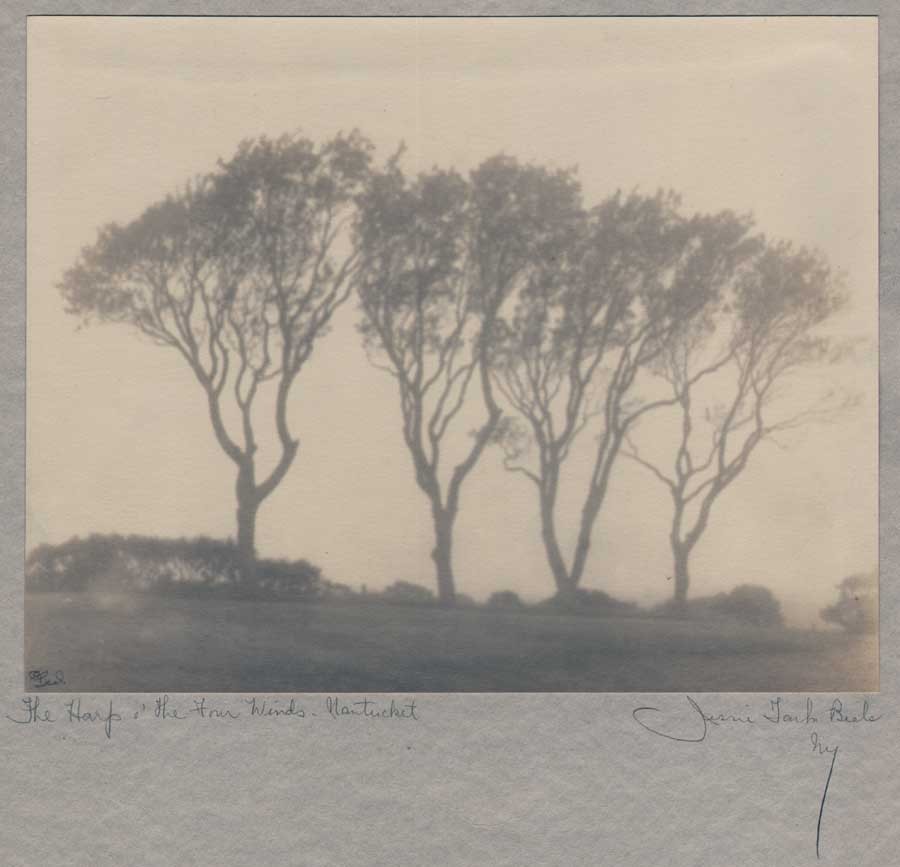 The Harp o' The Four Winds-Nantucket: Jessie Tarbox Beals, American, born Canada: (1870-1942) Gelatin silver print ca. 1905-15 (this example 1920-26 when she rented a salon-studio at 333 Fourth Ave. in N.Y.C.): 19.0 x 23.9 | 43.1 x 28.2 cm : Although not a New England native like Harriet Hosmer, Jessie Tarbox Beals was also groundbreaking for her gender, and is credited as being the first female photojournalist. New England and Massachusetts however played formative roles in her life. According to a short biography provided by the New-York Historical Society, which holds an extensive archive of Beal's work, Jessie was only 17 when she moved to Williamsburg, Mass from Hamilton, Ontario to join an older brother. There, her first job was teaching "seven pupils in a one-room schoolhouse for $7 a week"… later, she became interested in photography the following year in 1888 after acquiring her first camera in a magazine contest. Shortly, she became a professional after investing "$12 and bought a Kodak camera, with which she established a photo studio on the front lawn of her home. Local residents came to have their portraits taken, or to ask for pictures of their houses and other possessions. Beals was aided in her commercial endeavors by groups of Smith College students, (from nearby Northampton-ed) who wanted pictures to be made of their parties and picnics. By the end of two summers she was making more money taking photographs than teaching school." This example of Beal's landscape work was taken in the Bay State in Nantucket, a 1920 caption in the New York Tribune for it stating: "An early morning camera symphony—the Harp o' the Four Winds, Nantucket, Mass., at 5 a. m." From: PhotoSeed Archive
The Harp o' The Four Winds-Nantucket: Jessie Tarbox Beals, American, born Canada: (1870-1942) Gelatin silver print ca. 1905-15 (this example 1920-26 when she rented a salon-studio at 333 Fourth Ave. in N.Y.C.): 19.0 x 23.9 | 43.1 x 28.2 cm : Although not a New England native like Harriet Hosmer, Jessie Tarbox Beals was also groundbreaking for her gender, and is credited as being the first female photojournalist. New England and Massachusetts however played formative roles in her life. According to a short biography provided by the New-York Historical Society, which holds an extensive archive of Beal's work, Jessie was only 17 when she moved to Williamsburg, Mass from Hamilton, Ontario to join an older brother. There, her first job was teaching "seven pupils in a one-room schoolhouse for $7 a week"… later, she became interested in photography the following year in 1888 after acquiring her first camera in a magazine contest. Shortly, she became a professional after investing "$12 and bought a Kodak camera, with which she established a photo studio on the front lawn of her home. Local residents came to have their portraits taken, or to ask for pictures of their houses and other possessions. Beals was aided in her commercial endeavors by groups of Smith College students, (from nearby Northampton-ed) who wanted pictures to be made of their parties and picnics. By the end of two summers she was making more money taking photographs than teaching school." This example of Beal's landscape work was taken in the Bay State in Nantucket, a 1920 caption in the New York Tribune for it stating: "An early morning camera symphony—the Harp o' the Four Winds, Nantucket, Mass., at 5 a. m." From: PhotoSeed Archive
With mountains now in my backyard instead of the view of corn as high as an elephant’s eye from my last Midwest home, I’ve been thinking of late of the early ancestors and the roles they took-small but significant- in shaping from these parts an America I’m proud to call home.
Let me state off the top that my forebears did not come from money. Instead, other than the constant role of being soldiers in America’s early fight for Independence, they were hardscrabble Yankees: industrious farmers, deacons, bricklayers and later in the 19th century, stonemasons.
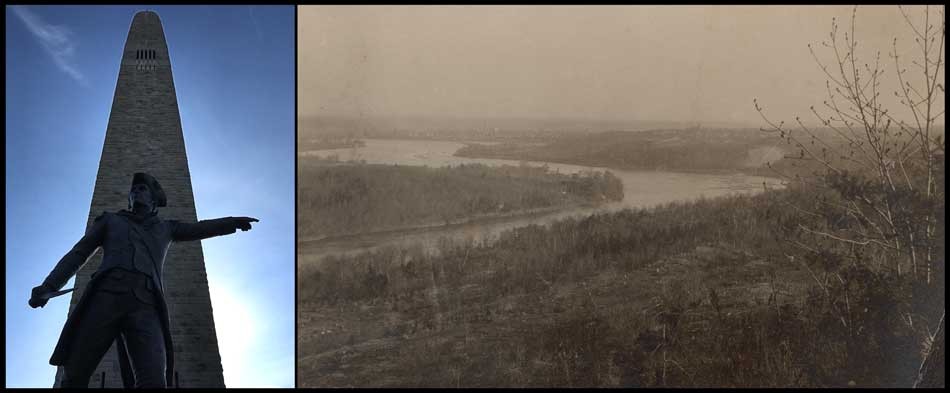 Left: American Revolutionary War Brigadier General John Stark (1728-1822) points the way at the base of the Bennington Battle Monument in Vermont. 2016: David Spencer for PhotoSeed Archive. On August 16, 1777, approximately 2,000 militia members led by John Stark soundly defeated British General John Burgoyne's army made up primarily of Hessians during the Battle of Bennington at Walloomsac, New York. Although the battle lead to Burgoyne's eventual surrender at Saratoga and "galvanized colonial support for the independence movement" (Wikipedia) the battle was not without 30 militia causalities, including 17-year-old Jonathan Hosmer, Jr., (1760-77) the second Hosmer to die in the American Revolution after his uncle Abner nearly two years earlier at Concord. Right: "The Connecticut": 1897: Charles Rollins Tucker, American (b. 1868): albumen print : 12.4 x 17.6 cm | 16.6 x 21.4 cm: Besides being a primary inland navigational route used extensively by Native American tribes hundreds of years before European colonization, the Connecticut River and its watershed encompassing the fertile Connecticut River Valley remains largely responsible for the regions continued development. This longest of New England rivers not only continues to fuel agriculture on a large scale but beginning in the late 20th Century, with its' large number of waterfalls, provided plenty of factories situated along its' banks the energy needed to power the Industrial Revolution, with the cities of Hartford, Conn. and Springfield, Mass being two of its most prominent to gain population and prominence. From: PhotoSeed Archive
Left: American Revolutionary War Brigadier General John Stark (1728-1822) points the way at the base of the Bennington Battle Monument in Vermont. 2016: David Spencer for PhotoSeed Archive. On August 16, 1777, approximately 2,000 militia members led by John Stark soundly defeated British General John Burgoyne's army made up primarily of Hessians during the Battle of Bennington at Walloomsac, New York. Although the battle lead to Burgoyne's eventual surrender at Saratoga and "galvanized colonial support for the independence movement" (Wikipedia) the battle was not without 30 militia causalities, including 17-year-old Jonathan Hosmer, Jr., (1760-77) the second Hosmer to die in the American Revolution after his uncle Abner nearly two years earlier at Concord. Right: "The Connecticut": 1897: Charles Rollins Tucker, American (b. 1868): albumen print : 12.4 x 17.6 cm | 16.6 x 21.4 cm: Besides being a primary inland navigational route used extensively by Native American tribes hundreds of years before European colonization, the Connecticut River and its watershed encompassing the fertile Connecticut River Valley remains largely responsible for the regions continued development. This longest of New England rivers not only continues to fuel agriculture on a large scale but beginning in the late 20th Century, with its' large number of waterfalls, provided plenty of factories situated along its' banks the energy needed to power the Industrial Revolution, with the cities of Hartford, Conn. and Springfield, Mass being two of its most prominent to gain population and prominence. From: PhotoSeed Archive
But like all families that have been here a while, I also have several relatives I’m quite certain are famous, and am most proud to say even significant. For details, please consult the small print under the respective photographs in this post for Private Abner Hosmer, an 18th Century Concord, Mass. Minute Man and Harriet Goodhue Hosmer, 19th Century groundbreaking American female sculptor.
The Hosmer’s & the Great Migration
The ancestors on my mother’s side, the Hosmer’s of Hawkhurst, Kent in England, were part of the so-called Great Migration. I’m now counted as a 12th generation Hosmer descendant, the first landing on these shores being James Hosmer, (b. 1605) a clothier who made the ocean voyage to the new world with his family aboard the good ship Elizabeth of London in April of 1635. They called themselves Puritans and were seeking religious independence from the Crown. (Charles I) It might have stopped there, and I for one am ever grateful it didn’t, because James’ wife Ann and two young daughters died during the trip or shortly after they arrived and settled in Cambridge in the Massachusetts Bay Colony. He remarried however, twice again due to death from disease in this new world, and went on to become one of the founders of Concord, Mass. two years later in 1637, where he made his living laying out grants of farmland and later serving as town selectman in 1660.
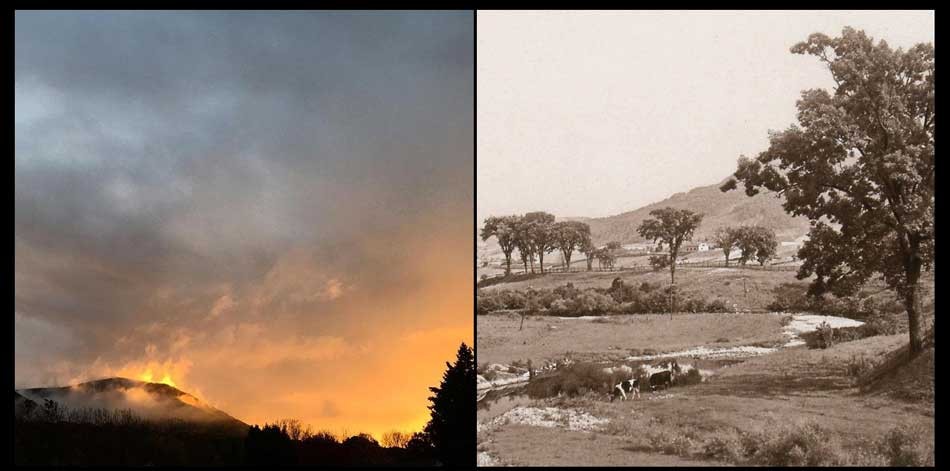 The Berkshires: Modern & Vintage: Left: "Sunset Glow over Mount Greylock State Reservation": by Shannon O'Brien: North Adams, Mass: Fall, 2016 (iPhone): Right: Detail: "Williamstown Hills, Williamstown" (Looking toward North Adams) "The encircling hills of Berkshire." : Arthur (Wentworth) Scott, American: 1899: hand-pulled photogravure plate included in volume: Nature Studies in Berkshire by John Coleman Adams published by G.P. Putnam's Sons: In the volume's introduction, "Our Berkshire" Coleman Adams sets the stage for the reader: "To know Berkshire is to love it. To love it is to feel a sort of proprietorship in it, a pride in its glories, a joy in its beauties, such as owners have in their estates and patriots in their native land. He who was born here clings to the soil if he stays, or reverts to it if he moves from it, with a New England steadfastness as intense and deep as a moral principle." (p. 3) From: Archive.org
The Berkshires: Modern & Vintage: Left: "Sunset Glow over Mount Greylock State Reservation": by Shannon O'Brien: North Adams, Mass: Fall, 2016 (iPhone): Right: Detail: "Williamstown Hills, Williamstown" (Looking toward North Adams) "The encircling hills of Berkshire." : Arthur (Wentworth) Scott, American: 1899: hand-pulled photogravure plate included in volume: Nature Studies in Berkshire by John Coleman Adams published by G.P. Putnam's Sons: In the volume's introduction, "Our Berkshire" Coleman Adams sets the stage for the reader: "To know Berkshire is to love it. To love it is to feel a sort of proprietorship in it, a pride in its glories, a joy in its beauties, such as owners have in their estates and patriots in their native land. He who was born here clings to the soil if he stays, or reverts to it if he moves from it, with a New England steadfastness as intense and deep as a moral principle." (p. 3) From: Archive.org
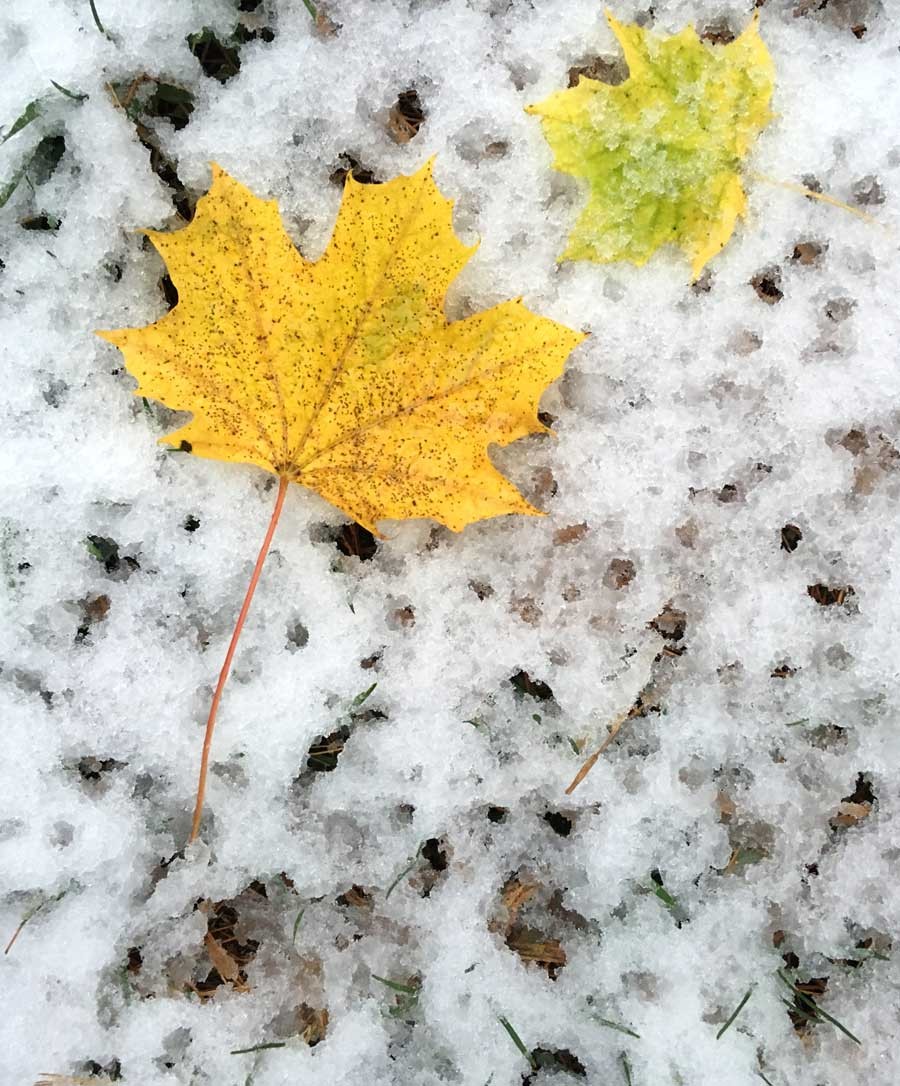 "Fall & First Snow: Williamstown": 2016: David Spencer for PhotoSeed Archive (iPhone)
"Fall & First Snow: Williamstown": 2016: David Spencer for PhotoSeed Archive (iPhone)
As a native of the Nutmeg state, I’m now proud to hail from the Bay state in the Berkshire Hills. Time and inclination willing, there will be many more photographic treasures from the past displayed for public consumption on PhotoSeed, as well as the planned rollout in the coming year-finally-of PhotoSeed Gallery, an e-commerce platform through Shopify selling vintage work. As your intrepid explorer and guide, I hope to present you with something worth thinking and conversing about in the new year and beyond.
-David Spencer-
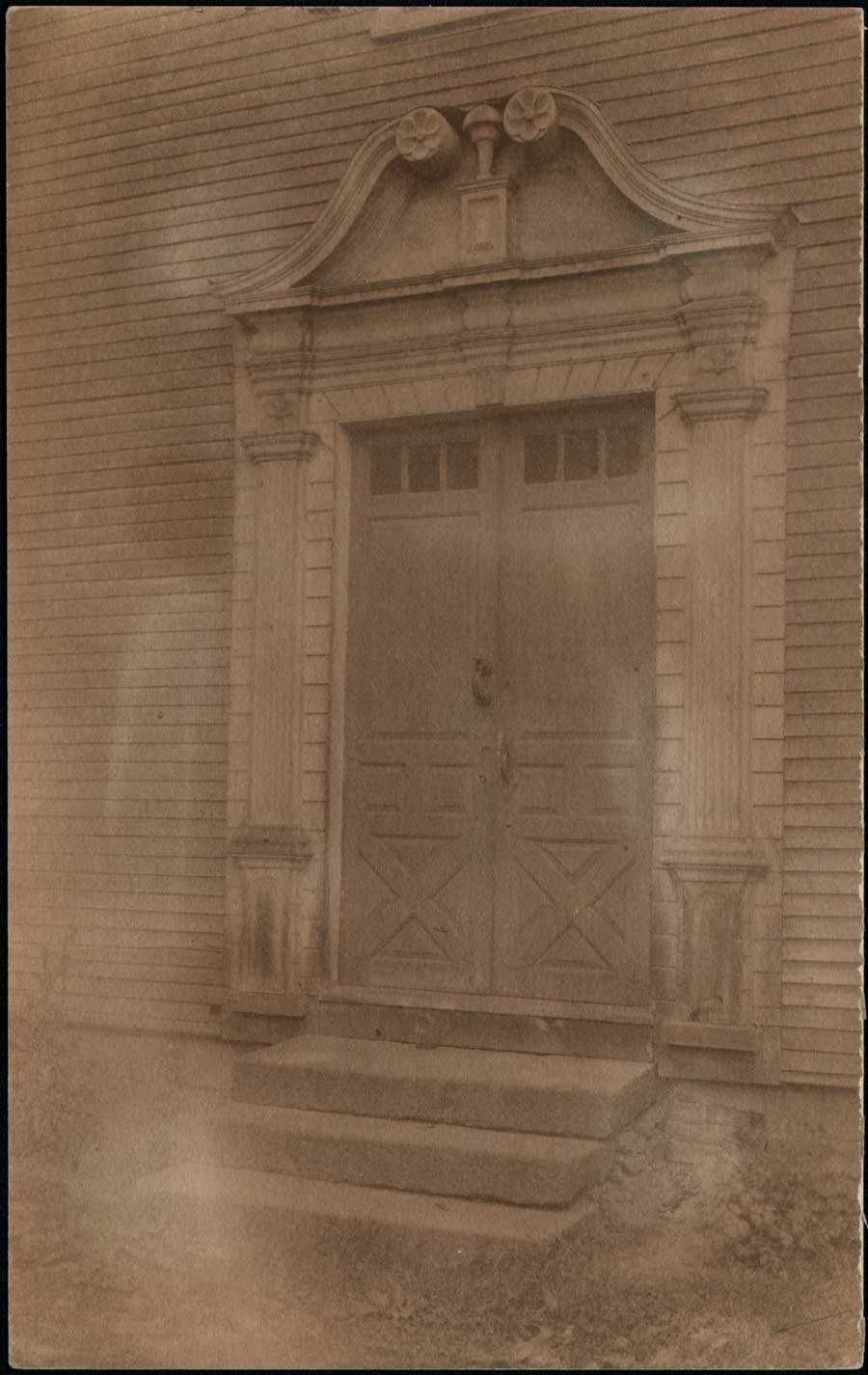 "Williams Door": Frances and Mary Allen, American: ca. 1895-1905: Platinum print: 20.2 x 12.7 cm: Made from native old-growth, eastern white pine, this view shows the Connecticut River Valley Doorway built by joiner Samuel Partridge which graces the front of the John Williams house in Old Deerfield Village, Mass. The home, and doorway, (since removed in 2001, placed on display and replaced by a reproduction) is named for the Rev. John Williams (1664-1729) in the village, and is now owned by Deerfield Academy. (the door is featured in the private school's seal) Rev. Williams was "a New England Puritan minister who became famous for The Redeemed Captive, his account of his captivity by the Mohawk after the Deerfield Massacre during Queen Anne's War." (Wikipedia) Working in the pictorial photographic style at the end and beginning of the 20th Century, the Allen Sisters of Deerfield did a brisk trade for tourists through their staged genre scenes and colonial views of Old Deerfield, including the Williams door seen here which carries a price tag on the verso of .50 cents. The home was originally built in 1760 by the Rev. Williams' son Elijah Williams, a shopkeeper and tavern-owner. From: PhotoSeed Archive
"Williams Door": Frances and Mary Allen, American: ca. 1895-1905: Platinum print: 20.2 x 12.7 cm: Made from native old-growth, eastern white pine, this view shows the Connecticut River Valley Doorway built by joiner Samuel Partridge which graces the front of the John Williams house in Old Deerfield Village, Mass. The home, and doorway, (since removed in 2001, placed on display and replaced by a reproduction) is named for the Rev. John Williams (1664-1729) in the village, and is now owned by Deerfield Academy. (the door is featured in the private school's seal) Rev. Williams was "a New England Puritan minister who became famous for The Redeemed Captive, his account of his captivity by the Mohawk after the Deerfield Massacre during Queen Anne's War." (Wikipedia) Working in the pictorial photographic style at the end and beginning of the 20th Century, the Allen Sisters of Deerfield did a brisk trade for tourists through their staged genre scenes and colonial views of Old Deerfield, including the Williams door seen here which carries a price tag on the verso of .50 cents. The home was originally built in 1760 by the Rev. Williams' son Elijah Williams, a shopkeeper and tavern-owner. From: PhotoSeed Archive
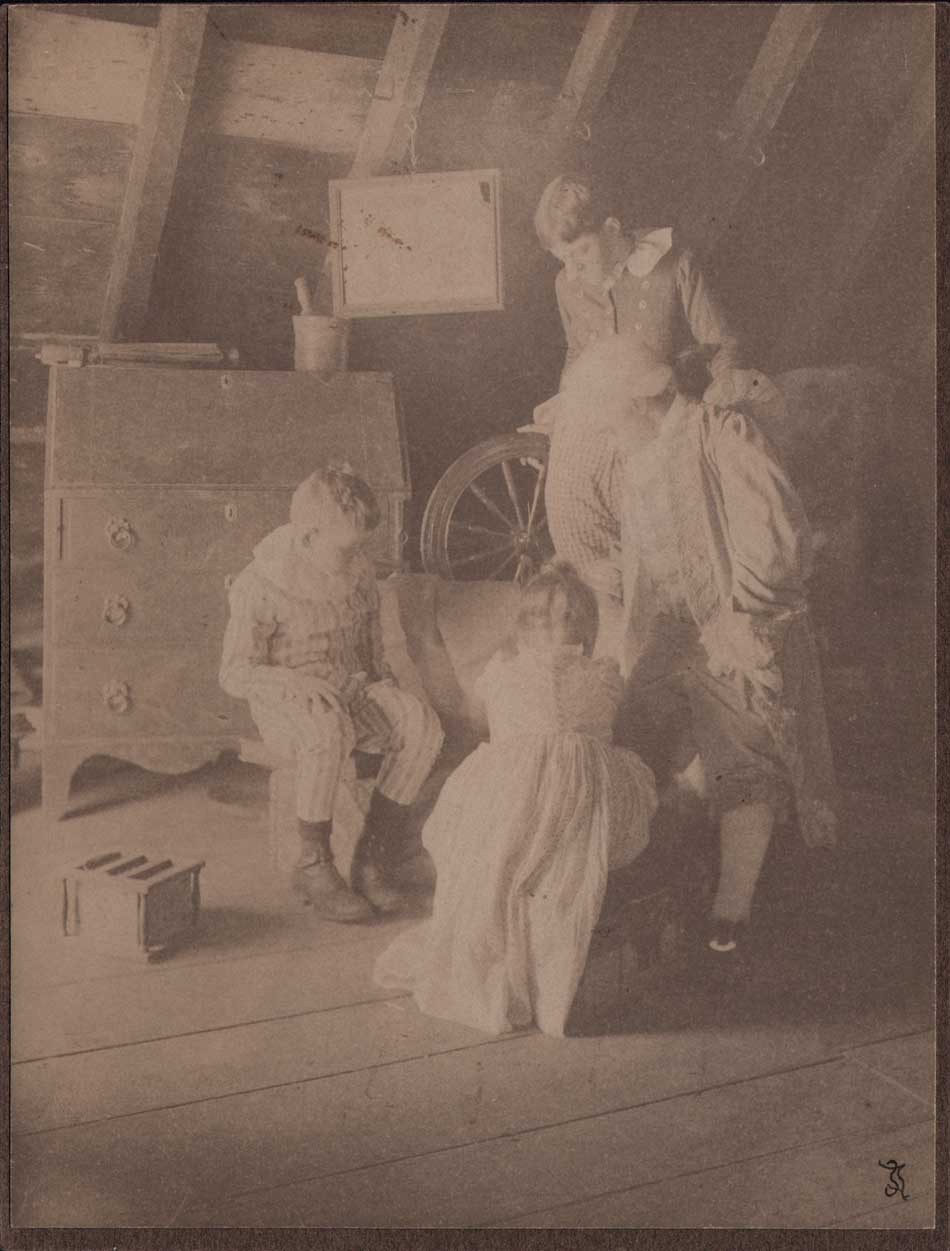 "Tom and Betty Put the Things on Ammi": 1910: Sarah Jane Dudley, American: (1859-1940) frontis plate to the volume: A Daughter of the Revolution by Jessie Anderson Chase: Boston: Richard G. Badger: The Gorham Press 1910: Platinum print, mounted, with Dudley's cipher at lower right corner: 20.2 x 15.3 | 20.5 x 15.7 cm: Besides her interest in amateur photography, Whitensville, Massachusetts native Jane Dudley, a graduate of Wheaton Female Seminary, was the organizer of the Samaritan Association of Whitinsville. This vintage example of a genre study showing children dressed in 18th century clothing while dressing their doll in an attic was done in the very popular style at the beginning of the 20th Century known as "Colonial Revival", which took advantage of America's love of its' colonial past. From: PhotoSeed Archive
"Tom and Betty Put the Things on Ammi": 1910: Sarah Jane Dudley, American: (1859-1940) frontis plate to the volume: A Daughter of the Revolution by Jessie Anderson Chase: Boston: Richard G. Badger: The Gorham Press 1910: Platinum print, mounted, with Dudley's cipher at lower right corner: 20.2 x 15.3 | 20.5 x 15.7 cm: Besides her interest in amateur photography, Whitensville, Massachusetts native Jane Dudley, a graduate of Wheaton Female Seminary, was the organizer of the Samaritan Association of Whitinsville. This vintage example of a genre study showing children dressed in 18th century clothing while dressing their doll in an attic was done in the very popular style at the beginning of the 20th Century known as "Colonial Revival", which took advantage of America's love of its' colonial past. From: PhotoSeed Archive
From: A Dissertation on the Canon and Feudal Law-1765
Liberty cannot be preserved without a general knowledge among the people, who have a right, from the frame of their nature, to knowledge, as their great Creator, who does nothing in vain, has given them understandings, and a desire to know; but besides this, they have a right, an indisputable, unalienable, indefeasible, divine right to that most dreaded and envied kind of knowledge, I mean, of the characters and conduct of their rulers.
–John Adams
Stages for Ages
Posted April 2016 in Exhibitions, History of Photography, New Additions, Publishing, Significant Photographers
All the world’s a stage, And all the men and women merely players: They have their exits and their entrances; And one man in his time plays many parts, His acts being seven ages.
-From As You Like It, Act II. Scene VII, Jaques’s speech
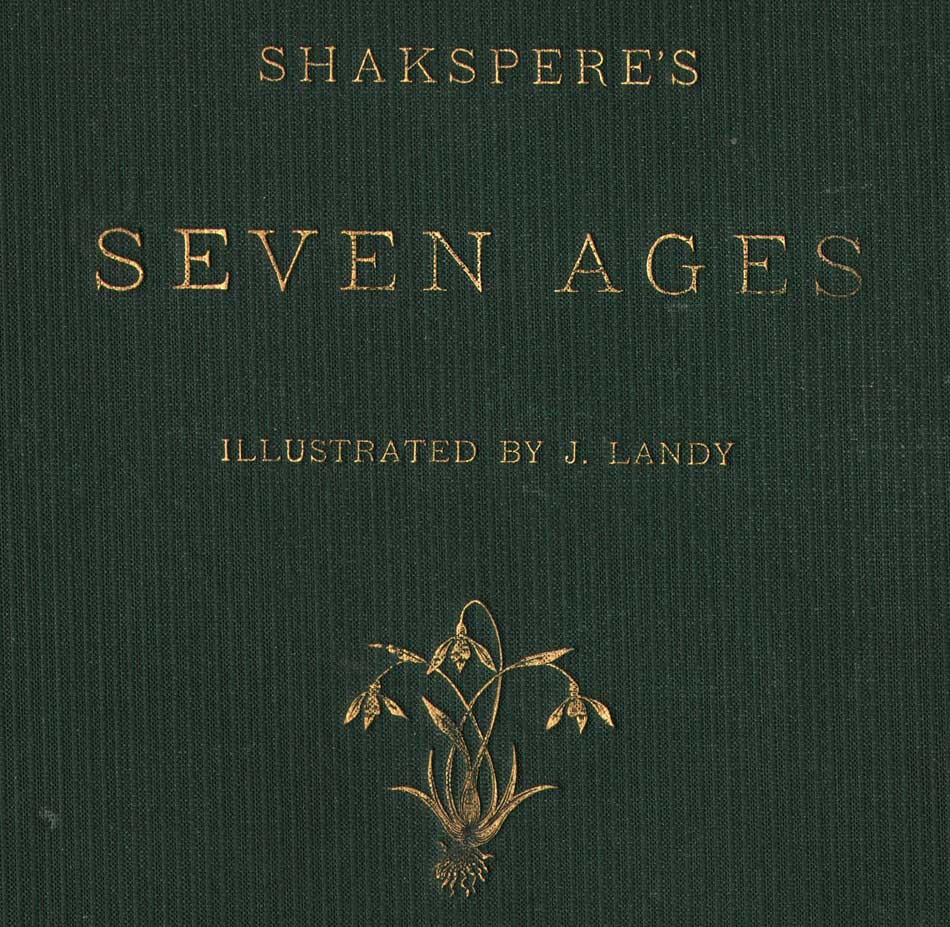 Detail: book cover: "Shakspere’s Seven Ages" Illustrated by J. Landy: Octavo with letterpress and seven individual pasted albumen portrait photographs by Landy: Cincinnati: Robert Clarke & Co., 1876: from: PhotoSeed Archive
Detail: book cover: "Shakspere’s Seven Ages" Illustrated by J. Landy: Octavo with letterpress and seven individual pasted albumen portrait photographs by Landy: Cincinnati: Robert Clarke & Co., 1876: from: PhotoSeed Archive
In life, Birthdays typically get all the attention. At least while your friends are around. Not so much death. But for certain souls long departed this mortal coil, it’s just as important. This is especially true for English playwright and poet William Shakespeare, whose passing on April 23, 1616 at 52 years of age- or 400 years ago today- seems like a perfectly good excuse to throw a party as well. Cincinnati portrait photographer James M. Landy (1838-1897) would have readily agreed, and he used the excuse of another anniversary-America’s first Centennial held in 1876 in Philadelphia- to showcase his new series of “character photographs” illustrating the Bard’s Seven Ages of Man from his play As You Like It . (1.)
Come along on a short photographic journey exploring these ages of the male species, according to Shakespeare. Have they changed with the passage of time?
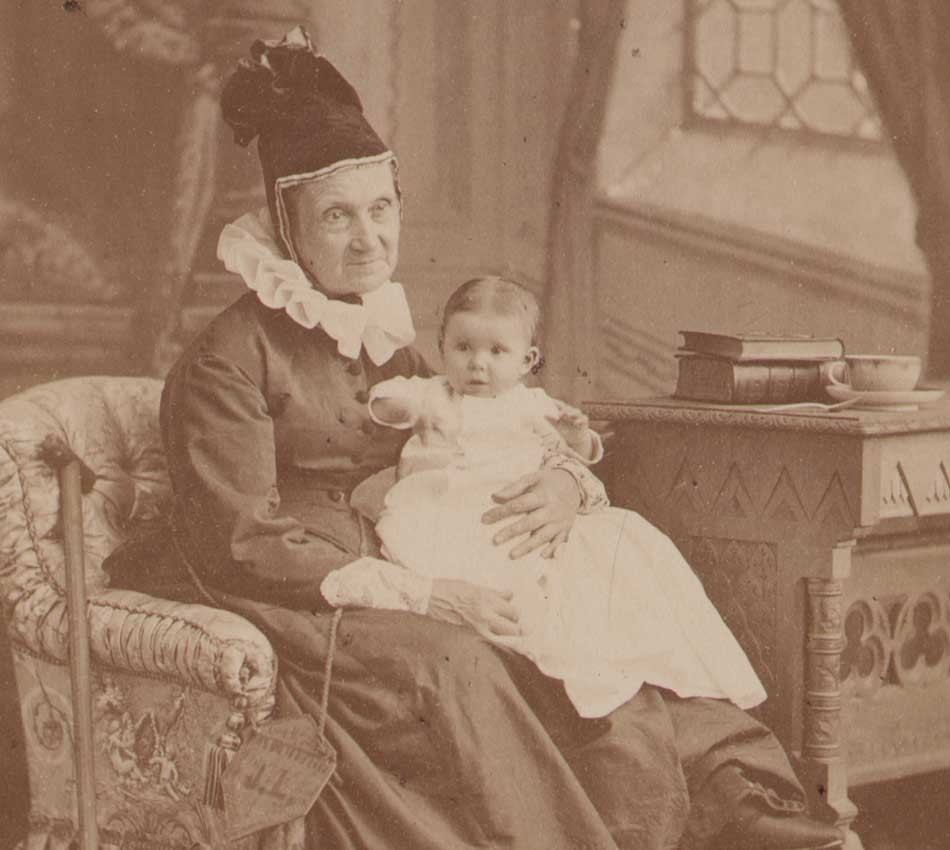 The First Age: Detail: "The Infant" : James M. Landy, American: 1876: pasted albumen print included in the volume "Shakspere’s Seven Ages": 14.0 x 9.9 | 24.7 x 19.0 cm: Cincinnati: Robert Clarke & Co., 1876. Captioned text opposite book plate: "At first the infant, Mewling and puking in the nurse’s arms.": From: PhotoSeed Archive
The First Age: Detail: "The Infant" : James M. Landy, American: 1876: pasted albumen print included in the volume "Shakspere’s Seven Ages": 14.0 x 9.9 | 24.7 x 19.0 cm: Cincinnati: Robert Clarke & Co., 1876. Captioned text opposite book plate: "At first the infant, Mewling and puking in the nurse’s arms.": From: PhotoSeed Archive
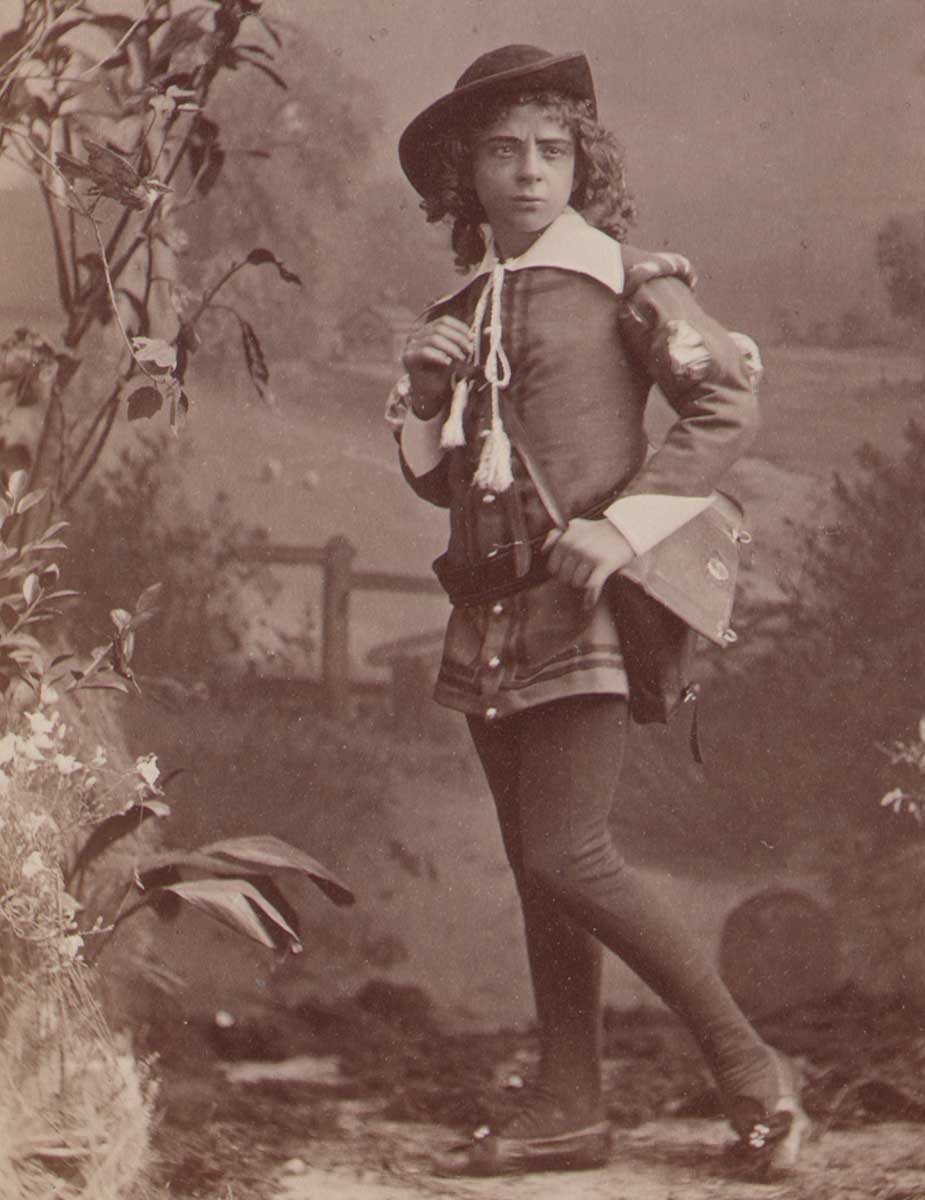 The Second Age: Detail: "The Schoolboy": James M. Landy, American: 1876: pasted albumen print included in the volume "Shakspere’s Seven Ages": 14.0 x 9.9 | 24.7 x 19.0 cm: Cincinnati: Robert Clarke & Co., 1876. Captioned text opposite book plate: "Then the whining school-boy, with his satchel, And shining morning face, creeping like snail Unwillingly to school." From: PhotoSeed Archive
The Second Age: Detail: "The Schoolboy": James M. Landy, American: 1876: pasted albumen print included in the volume "Shakspere’s Seven Ages": 14.0 x 9.9 | 24.7 x 19.0 cm: Cincinnati: Robert Clarke & Co., 1876. Captioned text opposite book plate: "Then the whining school-boy, with his satchel, And shining morning face, creeping like snail Unwillingly to school." From: PhotoSeed Archive
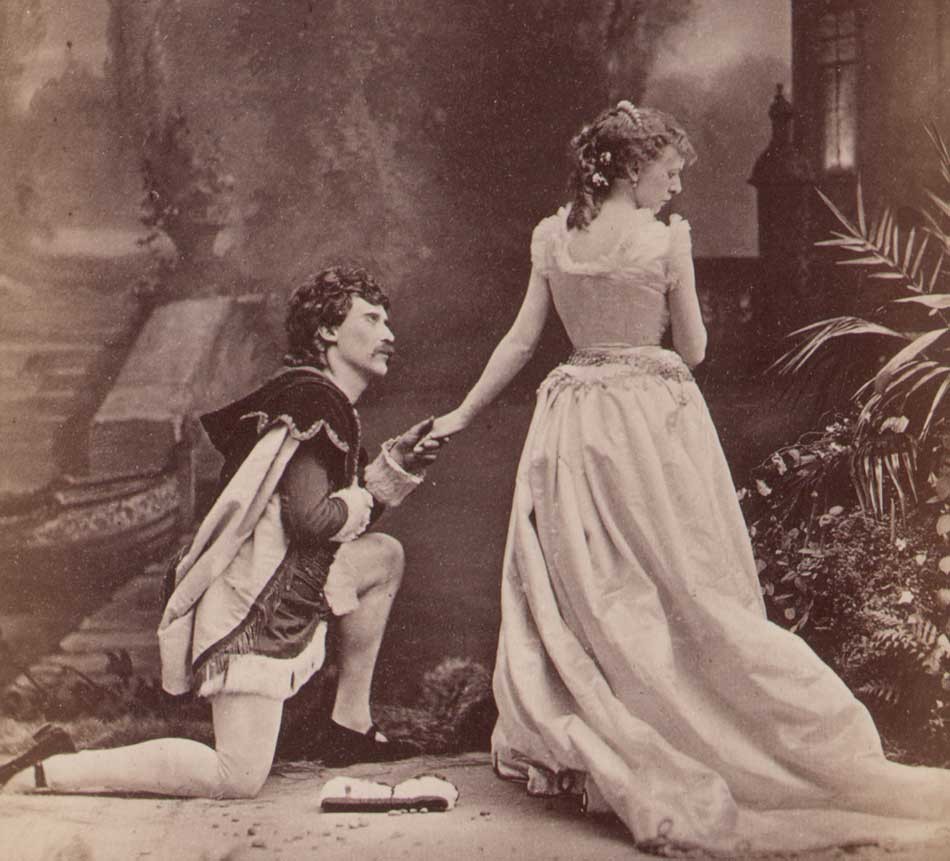 The Third Age: Detail: "The Lover": James M. Landy, American: 1876: pasted albumen print included in the volume "Shakspere’s Seven Ages": 14.3 x 9.9 | 24.7 x 19.0 cm: Cincinnati: Robert Clarke & Co., 1876. Captioned text opposite book plate: "And then the lover, Sighing like furnace, with a woful ballad Made to his mistress’ eyebrow." From: PhotoSeed Archive
The Third Age: Detail: "The Lover": James M. Landy, American: 1876: pasted albumen print included in the volume "Shakspere’s Seven Ages": 14.3 x 9.9 | 24.7 x 19.0 cm: Cincinnati: Robert Clarke & Co., 1876. Captioned text opposite book plate: "And then the lover, Sighing like furnace, with a woful ballad Made to his mistress’ eyebrow." From: PhotoSeed Archive
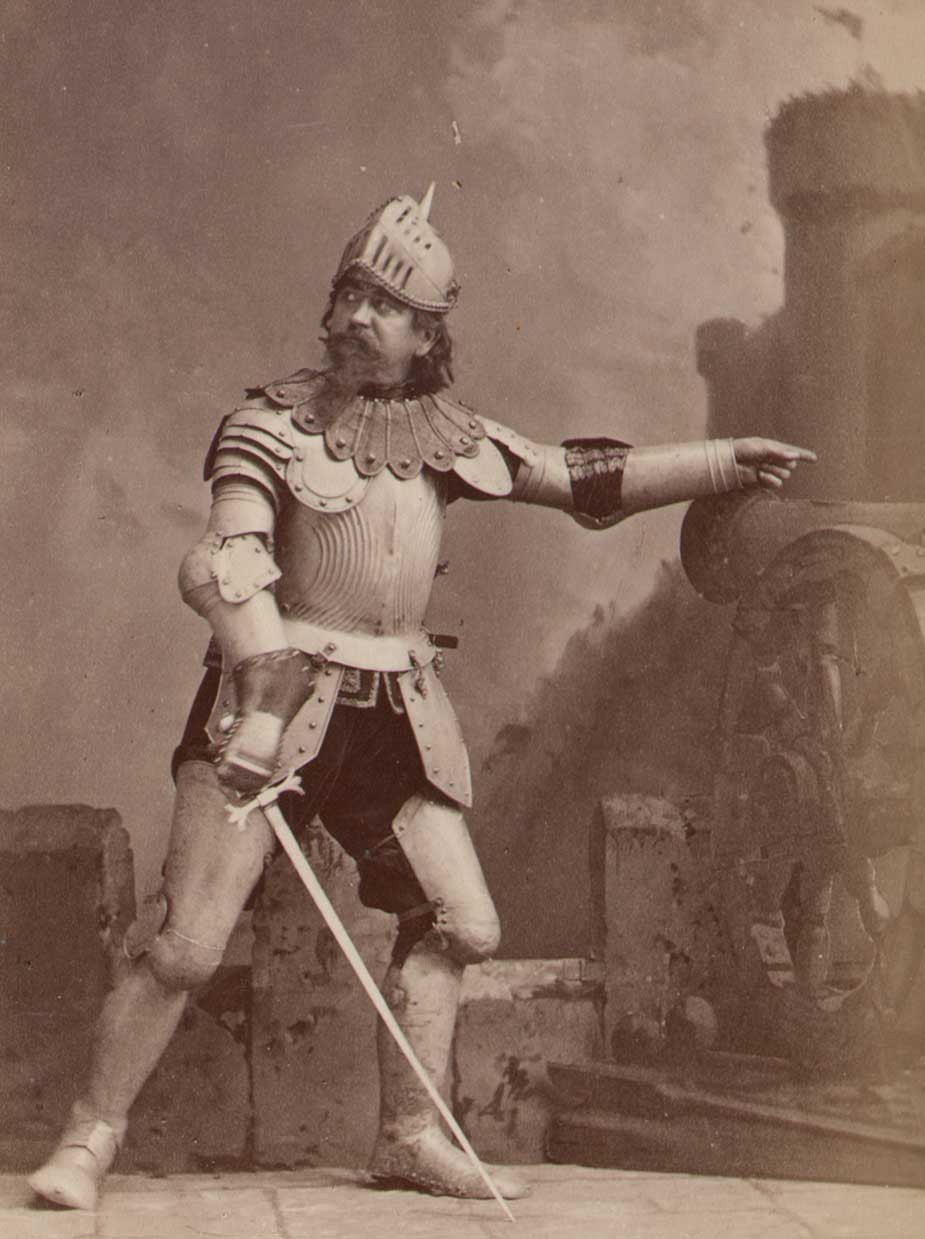 The Fourth Age: Detail: "The Soldier": James M. Landy, American: 1876: pasted albumen print included in the volume "Shakspere’s Seven Ages": 14.0 x 9.9 | 24.7 x 19.0 cm: Cincinnati: Robert Clarke & Co., 1876. Captioned text opposite book plate: "Then a soldier, Full of strange oaths, and bearded like the pard, Jealous in honor, sudden and quick in quarrel, Seeking the bubble reputation Even in the cannon’s mouth." From: PhotoSeed Archive
The Fourth Age: Detail: "The Soldier": James M. Landy, American: 1876: pasted albumen print included in the volume "Shakspere’s Seven Ages": 14.0 x 9.9 | 24.7 x 19.0 cm: Cincinnati: Robert Clarke & Co., 1876. Captioned text opposite book plate: "Then a soldier, Full of strange oaths, and bearded like the pard, Jealous in honor, sudden and quick in quarrel, Seeking the bubble reputation Even in the cannon’s mouth." From: PhotoSeed Archive
 The Fifth Age: "The Justice": James M. Landy, American: 1876: pasted albumen print included in the volume "Shakspere’s Seven Ages": 14.3 x 9.7 | 24.7 x 19.0 cm: Cincinnati: Robert Clarke & Co., 1876. Captioned text opposite book plate: "And then the Justice, In fair round belly, with good capon lin'd, With eyes severe, and beard of formal cut, Full of wise saws and modern instances; And so he plays his part." From: PhotoSeed Archive
The Fifth Age: "The Justice": James M. Landy, American: 1876: pasted albumen print included in the volume "Shakspere’s Seven Ages": 14.3 x 9.7 | 24.7 x 19.0 cm: Cincinnati: Robert Clarke & Co., 1876. Captioned text opposite book plate: "And then the Justice, In fair round belly, with good capon lin'd, With eyes severe, and beard of formal cut, Full of wise saws and modern instances; And so he plays his part." From: PhotoSeed Archive
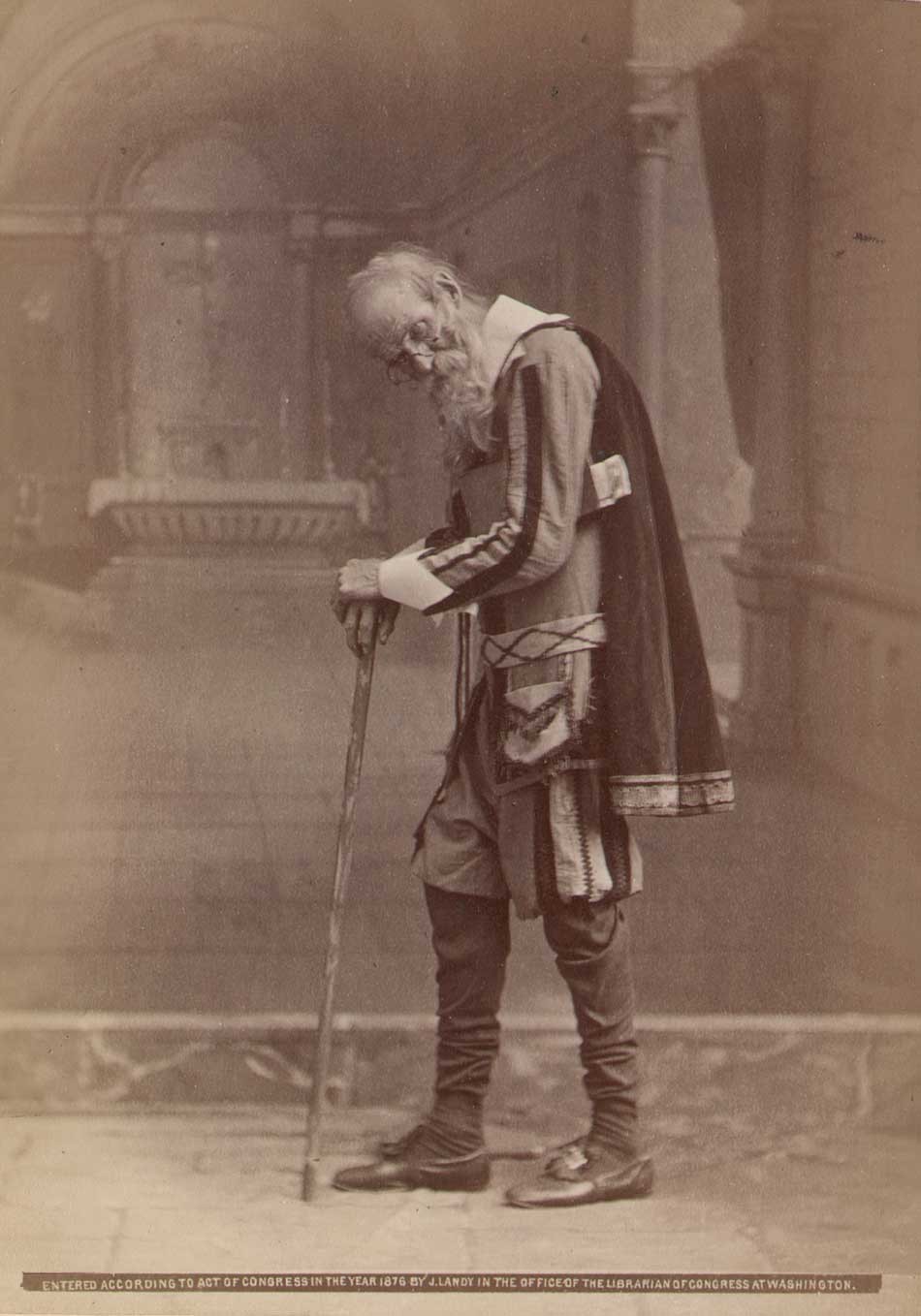 The Sixth Age: "The Lean and Slipper’d Pantaloon": James M. Landy, American: 1876: pasted albumen print included in the volume "Shakspere’s Seven Ages": 14.0 x 9.9 | 24.7 x 19.0 cm: Cincinnati: Robert Clarke & Co., 1876. Captioned text opposite book plate: "The sixth age shifts Into the lean and slipper’d pantaloon, With spectacles on nose and pouch on side, His youthful hose well saved, a world too wide For his shrunk shank; and his big manly voice, Turning again toward childish treble, pipes And whistles in his sound." From: PhotoSeed Archive
The Sixth Age: "The Lean and Slipper’d Pantaloon": James M. Landy, American: 1876: pasted albumen print included in the volume "Shakspere’s Seven Ages": 14.0 x 9.9 | 24.7 x 19.0 cm: Cincinnati: Robert Clarke & Co., 1876. Captioned text opposite book plate: "The sixth age shifts Into the lean and slipper’d pantaloon, With spectacles on nose and pouch on side, His youthful hose well saved, a world too wide For his shrunk shank; and his big manly voice, Turning again toward childish treble, pipes And whistles in his sound." From: PhotoSeed Archive
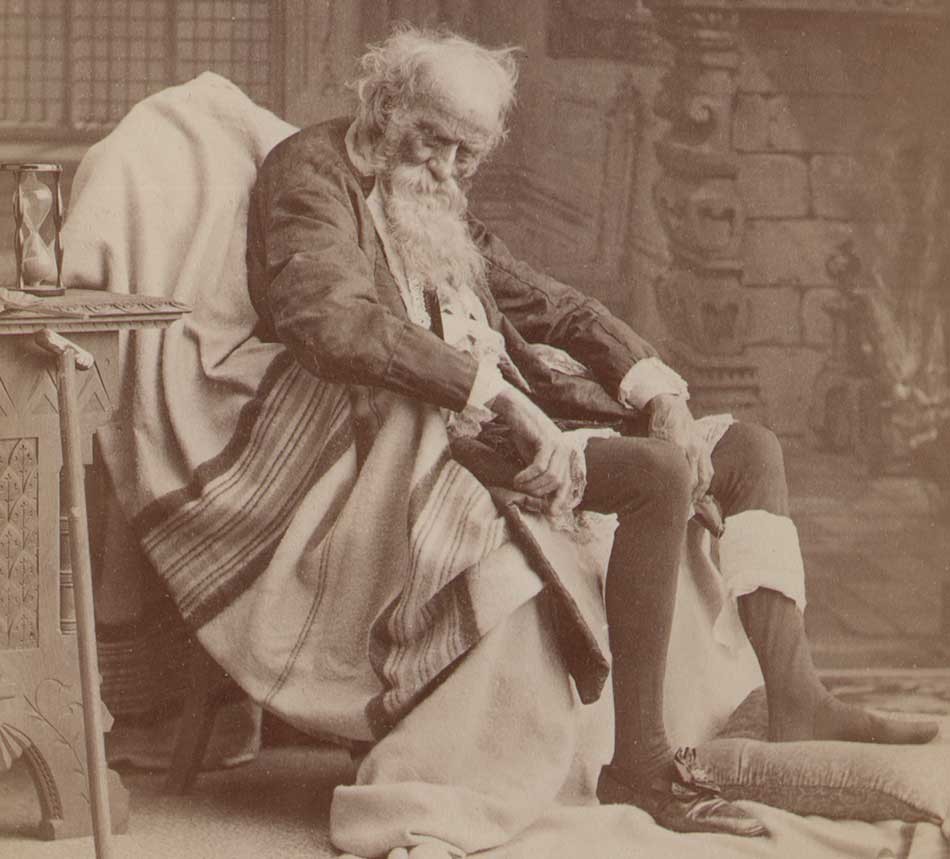 The Seventh Age: Detail: "Sans Teeth, Sans Eyes, Sans Taste, Sans Everything": James M. Landy, American: 1876: pasted albumen print included in the volume "Shakspere’s Seven Ages": 14.0 x 9.9 | 24.7 x 19.0 cm: Cincinnati: Robert Clarke & Co., 1876. Captioned text opposite book plate: "Last scene of all That ends this strange eventful history, Is second childishness and mere oblivion— Sans teeth, sans eyes, sans taste, sans everything.” From: PhotoSeed Archive
The Seventh Age: Detail: "Sans Teeth, Sans Eyes, Sans Taste, Sans Everything": James M. Landy, American: 1876: pasted albumen print included in the volume "Shakspere’s Seven Ages": 14.0 x 9.9 | 24.7 x 19.0 cm: Cincinnati: Robert Clarke & Co., 1876. Captioned text opposite book plate: "Last scene of all That ends this strange eventful history, Is second childishness and mere oblivion— Sans teeth, sans eyes, sans taste, sans everything.” From: PhotoSeed Archive
1. James Landy: from: Artists in Ohio, 1787-1900: A Biographical Dictionary, Mary Sayre Haverstock et al: Kent State University Press, 2000: p. 506
Needle in a Haystack
Posted March 2015 in Advertising, Childhood Photography, Engraving, Publishing, Significant Photographers, Typography
Surreal would be a good word for it. On the evening of Friday, November 4, 1904, the touring company of the Broadway flop Eben Holden made its way to a performance at a building called the Auditorium on S. 2nd Street in downtown Newark, Ohio.
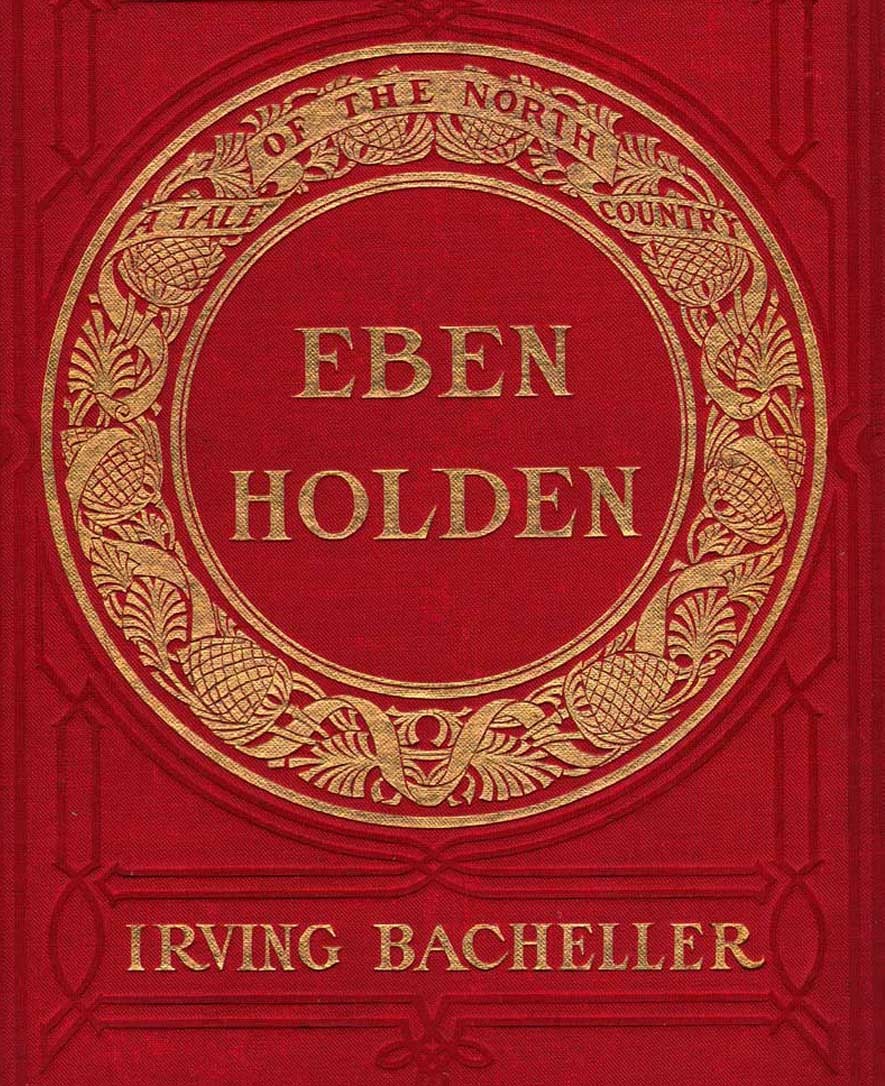 Detail: Cover for "Eben Holden: A Tale of The North Country": Edition de luxe by Irving Bacheller. Lothrop Publishing, Boston: 1903. Gilt-engraved decorative cloth with circular design featuring a design of a ribbon interlaced with pinecones and leaves: 21.0 x 14.2 cm: One of the best selling novels from the very beginning of the 20th Century, this edition features 12 photogravure plates by photographer Clarence Hudson White. from: PhotoSeed Archive
Detail: Cover for "Eben Holden: A Tale of The North Country": Edition de luxe by Irving Bacheller. Lothrop Publishing, Boston: 1903. Gilt-engraved decorative cloth with circular design featuring a design of a ribbon interlaced with pinecones and leaves: 21.0 x 14.2 cm: One of the best selling novels from the very beginning of the 20th Century, this edition features 12 photogravure plates by photographer Clarence Hudson White. from: PhotoSeed Archive
Most likely in attendance that night? Clarence Hudson White, (1871-1925) the world-renowned pictorialist photographer who was a recent founding member of the American Photo-Secession and current Newark resident. Only two years earlier, he had taken a series of photographs using his Newark neighbors as models for a special edition of Eben Holden that had been made into this very play.
Written by American journalist and author Irving Bacheller, (1859-1950) the story is a classic rags to riches tale that captivated the masses in the new American century when first published in July of 1900, eventually selling over 1 million copies. The setting at the beginning of the novel is the “North Country” of Northern Vermont , the Adirondack’s and St. Lawrence River Valley of the 1840’s and 1850’s. It tells the coming of age story of William Brower, orphaned at the age of six after his parents and older brother accidentally drowned as well as his relationship with Eben Holden, a farm hand who rescued “Willy” from the cruel fate of an orphanage
But this post is part collecting story, a kind of hunt for treasure, or “spondoolix” as “Uncle Eb” would say in one chapter-his country ways and lack of education brought into sharper focus for the reader by Bacheller’s liberal usage of Holden’s spoken dialect.
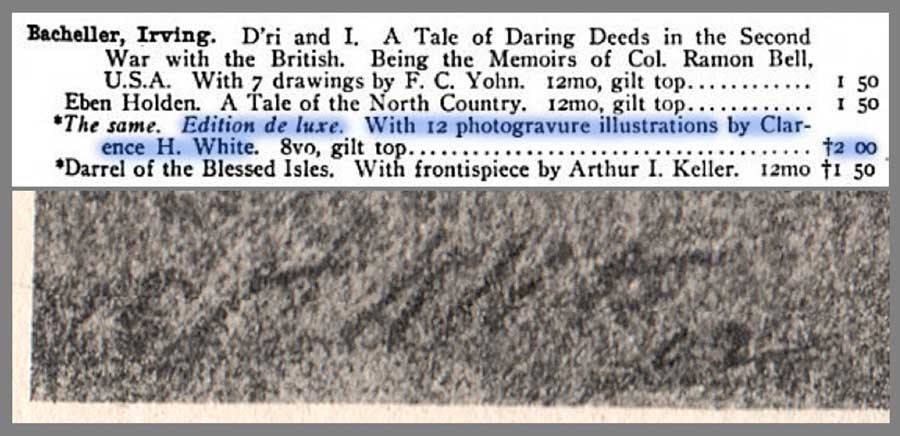 Detail: Top: listing for works by American author Irving Bacheller showing Edition de luxe of Eben Holden highlighted in blue: from: Illustrated Catalogue of Books Standard and Holiday 1903-1904: Chicago: A.C. McClurg and Company: 1903: p. 217 (the † denotes it is a work of fiction, published since November 1, 1902, under the rules of the American Publishers' Association. (from: Hathi Trust)Bottom: close-up detail showing autograph for CH White 02 at bottom left corner of representative photogravure plate from the Edition de luxe: from: PhotoSeed Archive
Detail: Top: listing for works by American author Irving Bacheller showing Edition de luxe of Eben Holden highlighted in blue: from: Illustrated Catalogue of Books Standard and Holiday 1903-1904: Chicago: A.C. McClurg and Company: 1903: p. 217 (the † denotes it is a work of fiction, published since November 1, 1902, under the rules of the American Publishers' Association. (from: Hathi Trust)Bottom: close-up detail showing autograph for CH White 02 at bottom left corner of representative photogravure plate from the Edition de luxe: from: PhotoSeed Archive
The Hunt is on
I consider myself a newbie collector, but one of the first things I put on my list 15 years ago when I first started out was one particular impression of Eben Holden rumored to have been illustrated by hand-pulled photogravures by White, the aforementioned famous photographer.
My curiosity had been piqued after seeing the volume listed in several bibliographies, typically stating the 1900 date. One such entry in author Christian A. Peterson’s Annotated Bibliography on Pictorial Photography did give me hope the work existed, even though finding one in the internet age would prove to be quite the challenge:
The Museum of Modern Art, New York, holds what is probably a unique copy of this book, comprised of the Lothrop text pages bound in leather, with an inscription by White and ten photogravure illustrations by him, including the portrait of Holden. (1.)
Because the novel had been such a success a century earlier, the reality of upwards of 500 vintage copies for sale on the web at any one time was daunting. My course of action however was simple, and eventually effective: send out a mass number of emails to every bookseller in the U.S. listing a copy from a suspect 1901 edition I had honed in on inquiring if it contained any photographic illustrations.
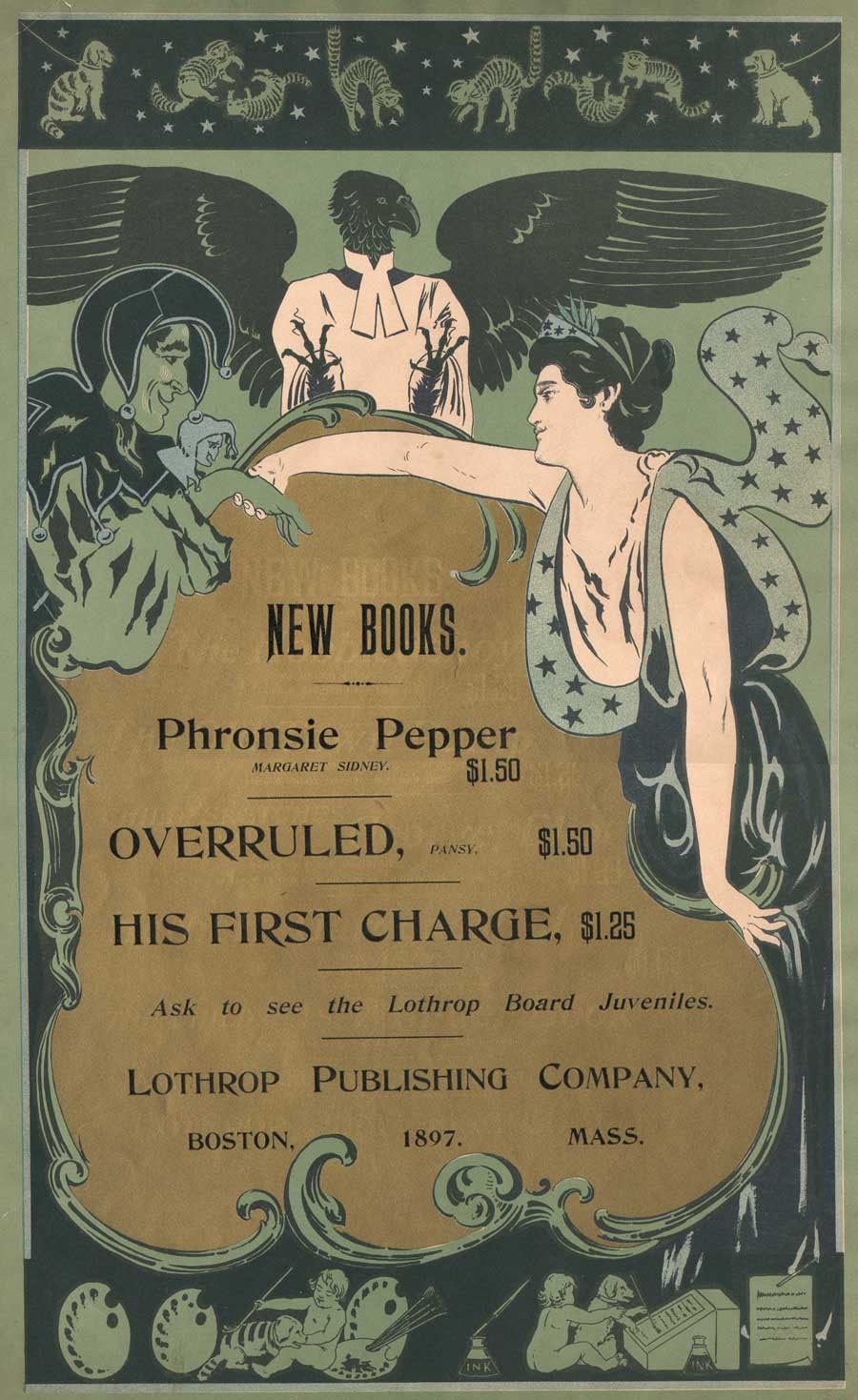 Broadside advertising poster for Lothrop Publishing Company of Boston: 1897: artist: William Schumacher: American: (1870-1931) multiple-color lithograph printed on wove paper: 52.7 x 34.0 cm. Speaking of the beginnings of Eben Holden in the year 1897, author Irving Bacheller said "had unsuccessfully offered the first 'Eben Holden' as it then stood to two juvenile publications; but as I happened to be just starting off on a vacation at that time, I determined myself to see the Boston firm, which was the Lothrop Publishing Company. I met the editor, Mr. Brooks, at the Parker House, and told him the story as I had written it. He immediately saw the possibilities in it and declared I had a big thing if I could carry it out as it should be." (excerpt: "The Critic": Oct. 1904) vintage broadside (trimmed) from: PhotoSeed Archive
Broadside advertising poster for Lothrop Publishing Company of Boston: 1897: artist: William Schumacher: American: (1870-1931) multiple-color lithograph printed on wove paper: 52.7 x 34.0 cm. Speaking of the beginnings of Eben Holden in the year 1897, author Irving Bacheller said "had unsuccessfully offered the first 'Eben Holden' as it then stood to two juvenile publications; but as I happened to be just starting off on a vacation at that time, I determined myself to see the Boston firm, which was the Lothrop Publishing Company. I met the editor, Mr. Brooks, at the Parker House, and told him the story as I had written it. He immediately saw the possibilities in it and declared I had a big thing if I could carry it out as it should be." (excerpt: "The Critic": Oct. 1904) vintage broadside (trimmed) from: PhotoSeed Archive
And so eventually luck prevailed. In 2007, a bookseller in Idaho finally said yes, and a bucket item was now on my library shelf. But that was not the end of it, as Alice would say, things got Curiouser and Curiouser! Because collectors never stop looking, I soon stumbled upon a CT bookseller who knew exactly the significance of the White-illustrated impression, with an astronomical asking price. An excerpt from his description of the work stated:
Elusive and highly desirable work, absent from almost all museum and library collections devoted to photography, and one of only a very few photographically illustrated books produced by a leading member of the Stieglitz circle at the height of the Photo-Secession. (2.)
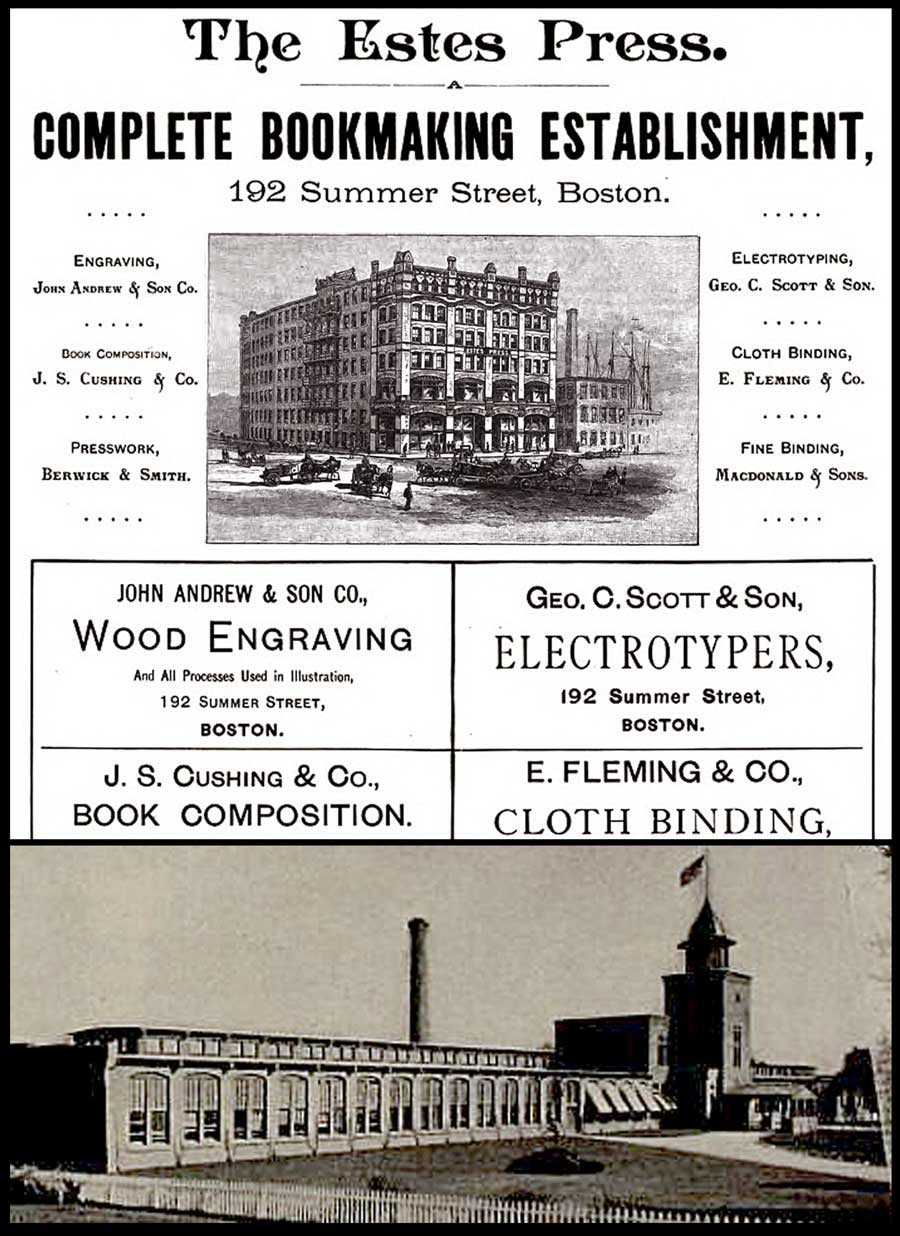 Top: detail: 1891 advertisement for The Estes Press (Dana Estes & Company) from "The American Bookmaker". The woodcut shows the brand new Estes Press Buildings located at 192 Summer St. in Boston first occupied around 1890. The firm housed many different companies involved in the bookmaking process, including: "The celebrated engravers, John Andrew & Son have their studios in the upper story…"; J.S. Cushing & Co., (book composition) Berwick & Smith, (presswork) and E. Fleming & Co. (binding). These last three firms left Estes in 1894 and became part of the Norwood Press. (from: Hathi Trust) Bottom: detail: exterior photograph of Norwood Press from the 1897 volume "Boston Massachusetts" by George W. Englehardt. The original caption noted the firm was located "Fourteen Miles from Boston, on the New England Road" and "as a whole employing nearly three hundred hands." This is where the Eben Holden Edition de luxe was printed. (from: Hathi Trust)
Top: detail: 1891 advertisement for The Estes Press (Dana Estes & Company) from "The American Bookmaker". The woodcut shows the brand new Estes Press Buildings located at 192 Summer St. in Boston first occupied around 1890. The firm housed many different companies involved in the bookmaking process, including: "The celebrated engravers, John Andrew & Son have their studios in the upper story…"; J.S. Cushing & Co., (book composition) Berwick & Smith, (presswork) and E. Fleming & Co. (binding). These last three firms left Estes in 1894 and became part of the Norwood Press. (from: Hathi Trust) Bottom: detail: exterior photograph of Norwood Press from the 1897 volume "Boston Massachusetts" by George W. Englehardt. The original caption noted the firm was located "Fourteen Miles from Boston, on the New England Road" and "as a whole employing nearly three hundred hands." This is where the Eben Holden Edition de luxe was printed. (from: Hathi Trust)
And so I sucked it in and didn’t purchase the second copy, which he told me he had originally purchased in Marlborough, NH. Eventually he sold it to a European collection, but I’ve since visited him several times and made a few purchases over the years, something I highly recommend rather than doing everything through e-commerce.
But then lighting struck again five years ago, when I purchased a second copy which had been personally inscribed by the author in 1911 to John A. Dix, then governor of New York state.
Curiouser? The first copy, fourth edition imprint stated Two Hundred and Sixty-fifth Thousand, March 12, 1901 and the second copy was for Two Hundred and Seventieth Thousand, September 18, 1903.
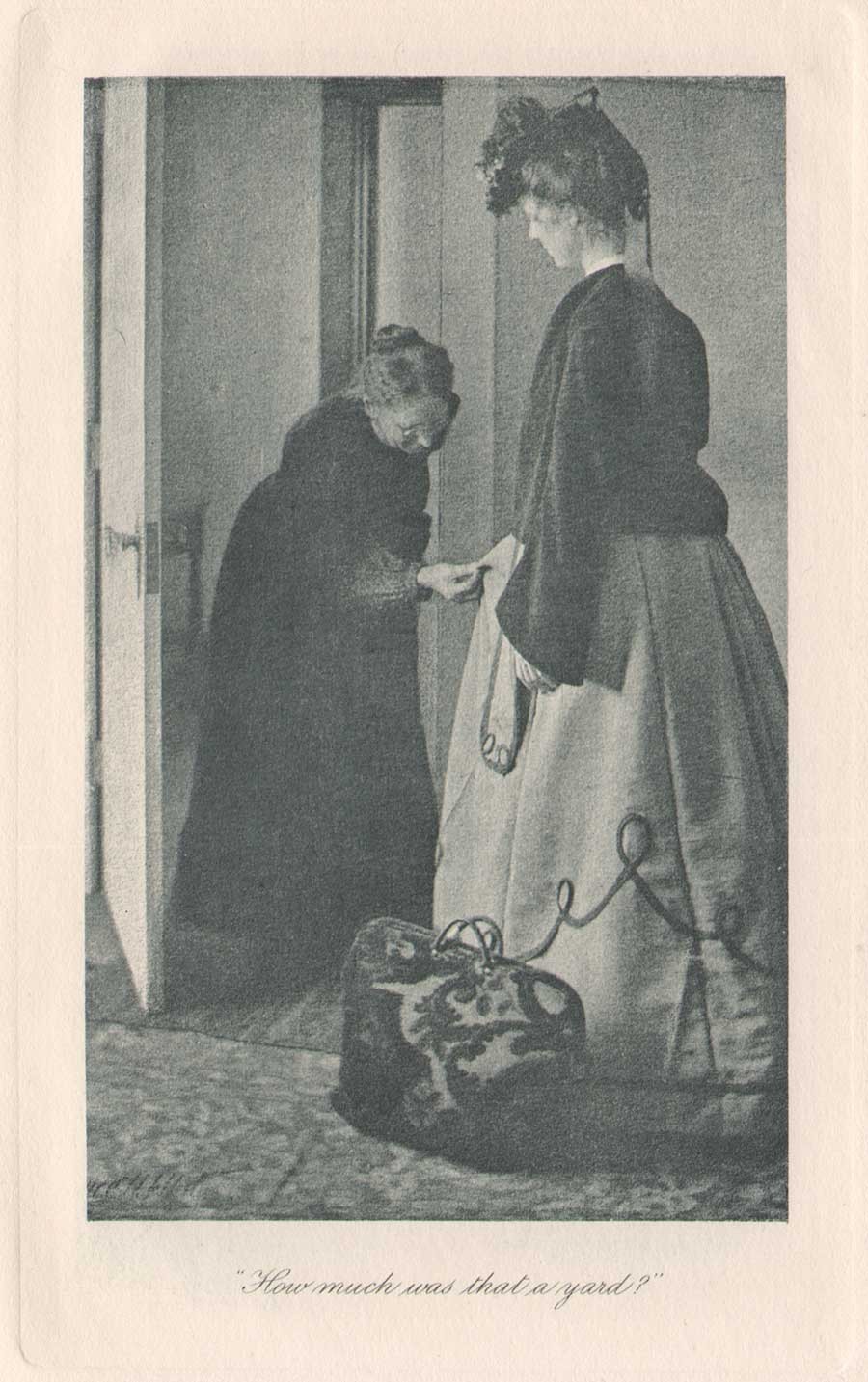 Detail: Clarence H. White: American: "How much was that a yard ?" Hand-pulled photogravure plate printed by John Andrew & Son (image: 12.2 x 7.5 cm | support: 20.0 x 14.0 cm ) from: Edition de luxe impression of Eben Holden: Lothrop Publishing, Boston: 1903. The Library of Congress states the model at right is Ann Fulton and the woman examining the dress is the photographer's mother Phoebe Billman White (1845-1920) : from: PhotoSeed Archive
Detail: Clarence H. White: American: "How much was that a yard ?" Hand-pulled photogravure plate printed by John Andrew & Son (image: 12.2 x 7.5 cm | support: 20.0 x 14.0 cm ) from: Edition de luxe impression of Eben Holden: Lothrop Publishing, Boston: 1903. The Library of Congress states the model at right is Ann Fulton and the woman examining the dress is the photographer's mother Phoebe Billman White (1845-1920) : from: PhotoSeed Archive
Knowing the book now existed in multiple impressions with the Clarence White photogravures was perplexing to me at first, but I’m certain the inclusion of the White photographs was intended by the publisher Lothrop for a more discriminating audience, so its assumed they had the monetary incentive to publish more than the one impression-even with the fickleness and extra work necessary to bind an edition with hand-pulled gravures.
To this end, my research in preparing this post discovered 1901 to be the year Clarence White was first commissioned by the Boston publisher to illustrate a new edition of Eben Holden. The intended publication date of very late 1902 was designed to coincide with the lucrative holiday sales season. Even with the move to e-books in our modern age, publishers earn good money issuing ornate and extra-illustrated editions during this time of year catering to the once a year book buyer and bibliophile alike.
Known as the Edition de luxe, this edition of Eben Holden with the White photogravures priced at $2.00 somehow managed to miss the late 1902 holiday sales season. The curious fact of the inclusion of the imprint for March 12, 1901 on the limitation page and White’s signature including the year 02 on many of the 12 plates in the published work was basic economics for publisher Lothrop-they simply used existing leaves, including the old limitation pages from current stock when it was eventually released for sale to bookstores in 1903.
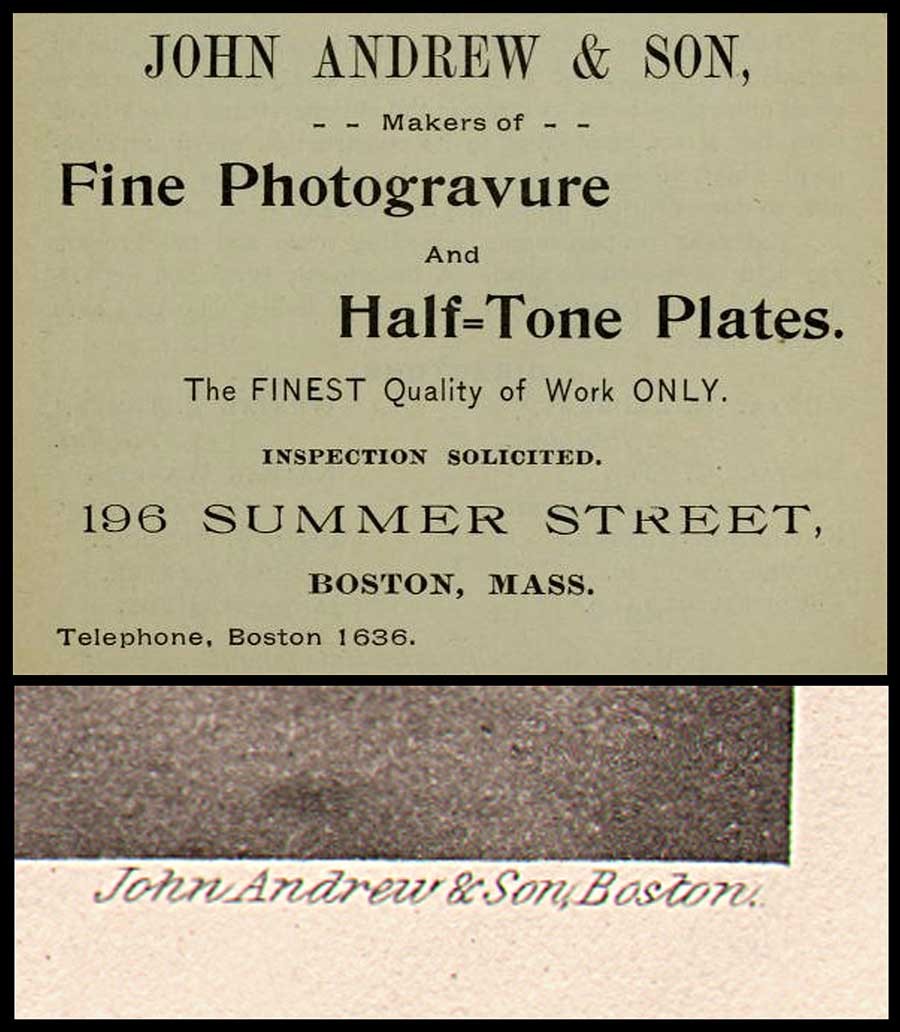 Top: detail: 1896: advertisement for John Andrew & Son from the "Boston Blue Book". (from: Hathi Trust) Bottom: detail: typical example of the firm's engraved credit appearing at lower right corner of image margin on plate recto from the 1903 Photographic Times-Bulletin. The John Andrew firm was established in Boston in 1852. from: PhotoSeed Archive
Top: detail: 1896: advertisement for John Andrew & Son from the "Boston Blue Book". (from: Hathi Trust) Bottom: detail: typical example of the firm's engraved credit appearing at lower right corner of image margin on plate recto from the 1903 Photographic Times-Bulletin. The John Andrew firm was established in Boston in 1852. from: PhotoSeed Archive
This was by no means unprecedented by Lothrop, or other large publishing houses of the era, as they would have set aside a certain number of unbound sheets from a best-selling work for limited impressions featuring artwork. The first illustrated edition of Eben Holden featured halftone photographs taken by Joseph Byron from the Broadway production of the same name hadn’t even debuted until Oct. 28 of 1901. This also used the March 12, 1901 imprint date. Known as the Dramatic Edition, it was described in the trade monthly The Bookseller:
”An illustrated edition of Eben Holden has been recently published called the Dramatic edition. It contains seven pictures of the play as it appeared in New York and a fine portrait of the author.” (3.)
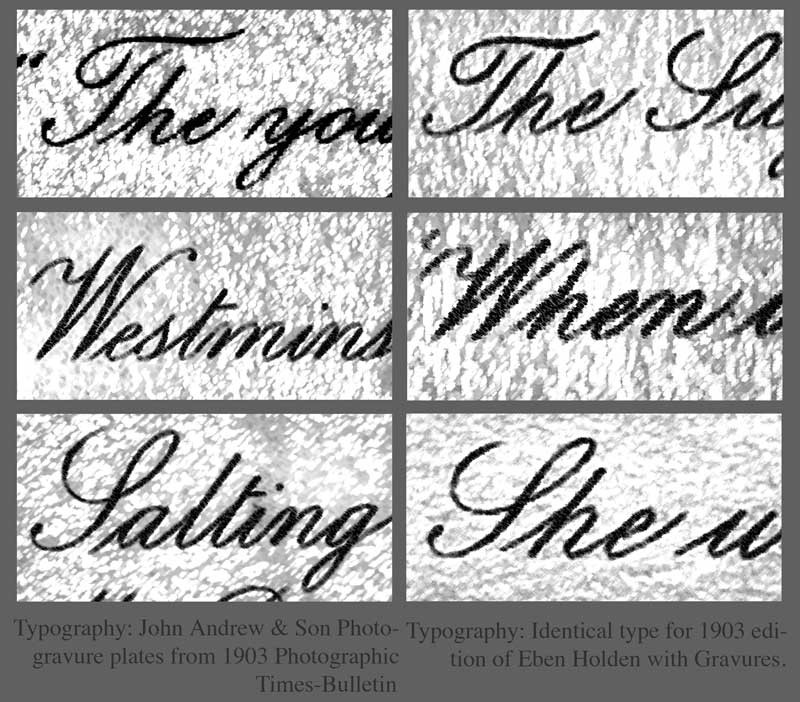 Details: with manipulations in PhotoShop to highlight typography: In order to show Boston's John Andrew & Son atelier printed the photogravure plates uncredited in the de luxe edition of Eben Holden, it is useful to analyze the script font typeface used for photographic plate titles. Column at left, top to bottom shows known examples from the Andrew atelier taken from the 1903 Photographic Times-Bulletin. Column at right shows plate titles from the Eben Holden volume. all from PhotoSeed Archive.
Details: with manipulations in PhotoShop to highlight typography: In order to show Boston's John Andrew & Son atelier printed the photogravure plates uncredited in the de luxe edition of Eben Holden, it is useful to analyze the script font typeface used for photographic plate titles. Column at left, top to bottom shows known examples from the Andrew atelier taken from the 1903 Photographic Times-Bulletin. Column at right shows plate titles from the Eben Holden volume. all from PhotoSeed Archive.
Published in 1903
Finally, with the eventual tenth imprint of the fourth edition stating Two Hundred and Seventieth Thousand, September 18, 1903, (6.) the makeup of the Edition de luxe was that of a small 8vo Octavo instead of the common edition, a 12mo Duodecimo. The inclusion of 12 fine, hand-pulled photogravure plates by White seen here is another matter altogether. For one, other than White’s autograph-appearing often (and faintly) in the lower left hand corner of each plate image as CH White 02, the Edition de luxe neglects to give him any printed credit for the photographs nor the atelier who printed them. This is very surprising for a special edition. Typically, there would at the very least be a separate illustrations page noting titles and page numbers at the front of a similar volume, but for whatever reason they were not included.
Stieglitz plays Go Between
With Eben Holden’s great success, the dramatization of the novel on the Broadway stage was logical for its day-especially since the Cinema was not an option because of the infancy of the medium. Lothrop’s piggy-backing of the work through this Dramatic edition, even by the “flop” standard of 49 performances, was but one way of keeping the work “fresh”- even a full year after initial publication. At some point late in 1901, a result perhaps of someone seeing the play on Broadway or believing White’s work would lend itself nicely to a series of photographic illustrations, the Boston publisher-perhaps through an association with Fred Holland Day (who lived in nearby Norwood where the Norwood Press printed books for Lothrop) or Alfred Stieglitz in New York-gave White the commission for its second illustrated edition of the novel.
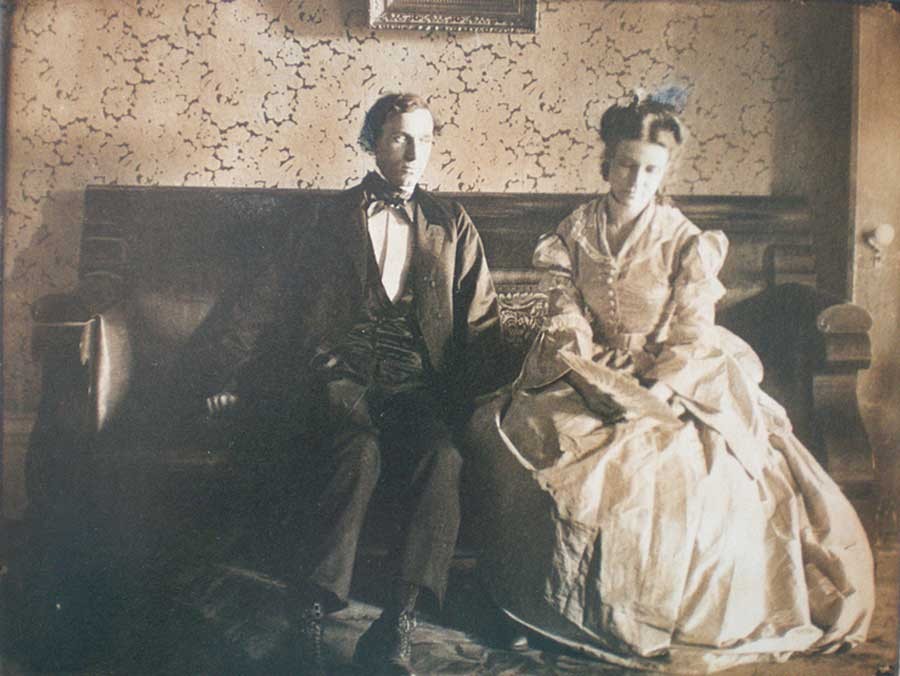 Clarence H. White: American: 1902: "She was still looking down at the fan": vintage Platinum or gelatin silver print: Showing typical retouching by White, the models are Alfred Dodge Cole, (1861-1928) a professor of Chemistry and Physics at Denison University and his wife Emily Downer Cole. (1865-1957) They play the roles of William Brower and Hope, whom Brower eventually marries in the novel Eben Holden. The photograph was reproduced as a photogravure plate and included in the Edition de luxe. Curators at the Robbins Hunter Museum where this and other White photographs are held stated the photographer had taken family photographs of the Downer family on the lawn of the home in the late 1890's and so he "would have been familiar with the house and furnishings from that commission. It was common for Clarence White to ask acquaintances to pose for photographs, often in costumes that he would provide. The photographs for Eben Holden were staged with costumes from the Civil War era." Photograph courtesy: Collection of the Robbins Hunter Museum in the Avery Downer House, Granville, OH.
Clarence H. White: American: 1902: "She was still looking down at the fan": vintage Platinum or gelatin silver print: Showing typical retouching by White, the models are Alfred Dodge Cole, (1861-1928) a professor of Chemistry and Physics at Denison University and his wife Emily Downer Cole. (1865-1957) They play the roles of William Brower and Hope, whom Brower eventually marries in the novel Eben Holden. The photograph was reproduced as a photogravure plate and included in the Edition de luxe. Curators at the Robbins Hunter Museum where this and other White photographs are held stated the photographer had taken family photographs of the Downer family on the lawn of the home in the late 1890's and so he "would have been familiar with the house and furnishings from that commission. It was common for Clarence White to ask acquaintances to pose for photographs, often in costumes that he would provide. The photographs for Eben Holden were staged with costumes from the Civil War era." Photograph courtesy: Collection of the Robbins Hunter Museum in the Avery Downer House, Granville, OH.
Ultimately, Stieglitz’s publishing background, connections and established relationship with White through his editorship of Camera Notes, his new involvement with Camera Work, as well as his having his own work exhibited in an early salon of pictorial photography in Newark Ohio in late 1900 and other exhibitions made Stieglitz a believer in White’s potential as an illustrator:
“What is especially fascinating, however, is what occurs when White is commissioned, as he was in 1901, to take up literary illustration himself. Through the assistance of Stieglitz, White received the commission to illustrate a new edition of the novel Eben Holden by Irving Bacheller. ( 4. )
And much later, the photographer’s grandson Maynard Pressley White commented about a bit of reluctance on his grandfather’s part in dealing with Lothrop as part of his Ph.D. dissertation in 1975:
“The correspondence with Stieglitz concerning the illustrations for Eben Holden is revealing of his character as well as Stieglitz informed him that he suffered from no such timidity and would—and indeed did—handle the matter with the publishers, as it turned out, to the advantage of White.” (5.)
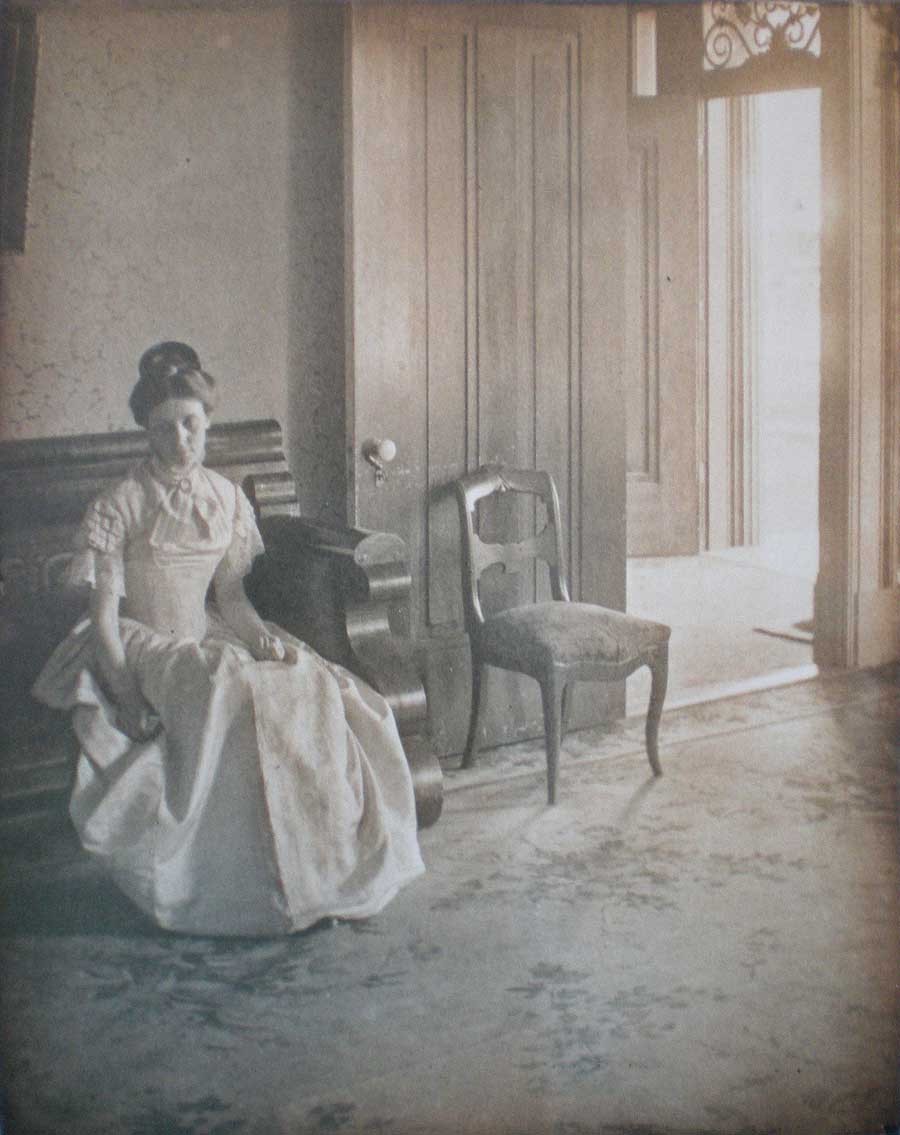 Clarence H. White: American: 1902? : vintage untitled Platinum or gelatin silver print: The model Emily Downer Cole (1865-1957) poses wearing a different dress than seen in the published Eben Holden photogravure "She was still looking down at the fan" taken on the same settee in the front parlor of the Downer family home. This was likely an alternate study Clarence White took for consideration for his series of Eben Holden illustrations. Photograph courtesy: Collection of the Robbins Hunter Museum in the Avery Downer House, Granville, OH.
Clarence H. White: American: 1902? : vintage untitled Platinum or gelatin silver print: The model Emily Downer Cole (1865-1957) poses wearing a different dress than seen in the published Eben Holden photogravure "She was still looking down at the fan" taken on the same settee in the front parlor of the Downer family home. This was likely an alternate study Clarence White took for consideration for his series of Eben Holden illustrations. Photograph courtesy: Collection of the Robbins Hunter Museum in the Avery Downer House, Granville, OH.
John Andrew & Son: founded in Boston: 1852
In giving credit to White and the firm that printed his photographs as gravures, a bit of elucidation seems in order to set things straight. Upon close inspection of these plates along with many others by Boston’s John Andrew & Son from the same time frame, I feel confident giving the Andrew firm credit for printing them. This is based on a near exact match in the script font used for the plate titles in the de luxe edition of Eben Holden as well as those plates credited to the firm appearing in the Photographic Times Bulletin from 1902-04.
I’ve included examples of the font as a comparison with this post. Another exact match is the same plate paper was used for both publications: this is very revealing especially on the plate verso where a very fine stipple pattern can be seen on the paper surface of the cream-colored plate paper. Perhaps the strongest association with the John Andrew atelier and the Norwood Press (which printed the de luxe edition) emerged in my research on business associations with some of the individual companies that came together in 1894 when that press was formed. These included J.S. Cushing & Co., (for composition and typesetting) Berwick & Smith Co., (for presswork) and E. Fleming & Co. (for binding). Beginning around 1890, all of these firms along with John Andrew were under one roof as part of the brand new Dana Estes & Company publishing house buildings on Summer Street in Boston.
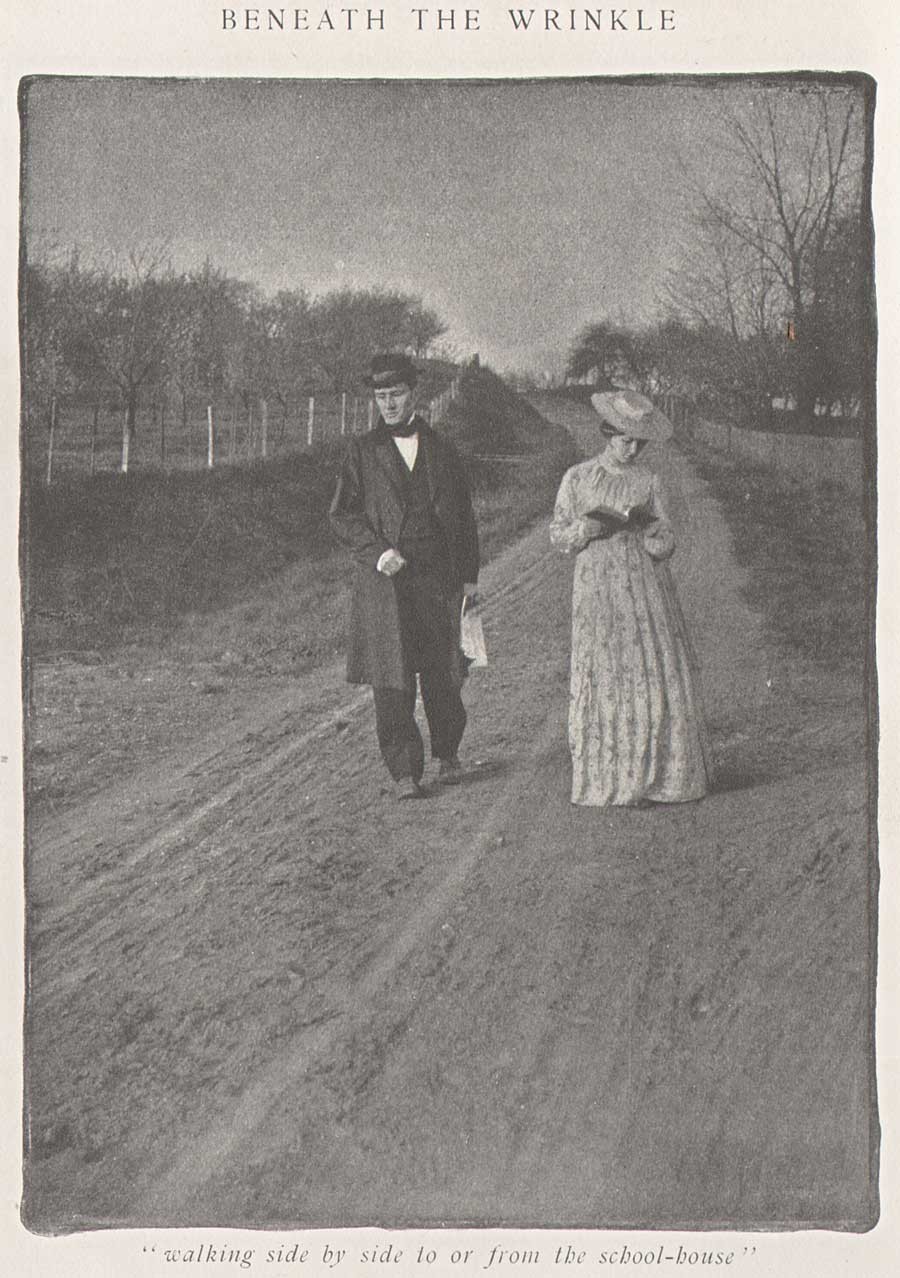 Clarence H. White: American: 1903: halftone: "Walking side by side to or from the school-house" was one of three photographs published to illustrate the Clara Morris story "Beneath the Wrinkle" published in the February, 1904 issue of McClure's Magazine. (12.8 x 9.5 cm) published: p. 430. From: PhotoSeed Archive
Clarence H. White: American: 1903: halftone: "Walking side by side to or from the school-house" was one of three photographs published to illustrate the Clara Morris story "Beneath the Wrinkle" published in the February, 1904 issue of McClure's Magazine. (12.8 x 9.5 cm) published: p. 430. From: PhotoSeed Archive
With the move to Norwood in 1894, the Andrew atelier stayed behind in Boston at 196 Summer St. but continued to provide fine photo engraving work to the major publishing houses in Boston and New York. Known today for printing many of the photogravure plates beginning in 1907 for the monumental Edward Sheriff Curtis work The North American Indian, the firm sometime in the first decade of the 20th Century became a department of the Suffolk Engraving & Electrotyping Co. of Boston with offices at 394 Atlantic Ave.
Named after John Andrew, (1815-1870) a wood engraver born in England who immigrated to Boston where he worked with fellow engraver Andrew Filmer, the firm eventually made the transition to photo engraving, including the half tone and photogravure processes. Andrew’s son George T. Andrew succeeded his father at the business, located at 196 Summer St. An 1892 overview of the firm from the volume Picturesque Hampden gives some background:
JOHN ANDREW & SON COMPANY.
ENGRAVERS AND MAKERS OF FINE BOOKS, BOSTON MASS.
If we go back a few years, we find that in illustrating books and magazines wood and steel engraving were about the only methods available. Nor could steel engraving have any wide use on account of the great expense of printing. Ever since its start, in 1852, the firm, now styled the John Andrew & Son Company, has held a prominent place among illustrators, especially in work of the finest grades. Their reputation was made in the first place as engravers on wood, but the discovery of delicate chemical and mechanical processes has in later years led them to also take the photo-engraving and half-tone work which has at present such wide use and popularity. In this field they do work for some of the best magazines and books published in this country. In what they undertake they strive not so much to do the cheapest work in price as the best work in quality. Quite recently the firm has taken up the photo-gravure process in addition to those spoken of above. The industry we describe is not located in Hampden county, but the mention here is not inappropriate as the engraving of our pen and ink pictures was done almost wholly by this firm. Their address is 196 Summer street, Boston.
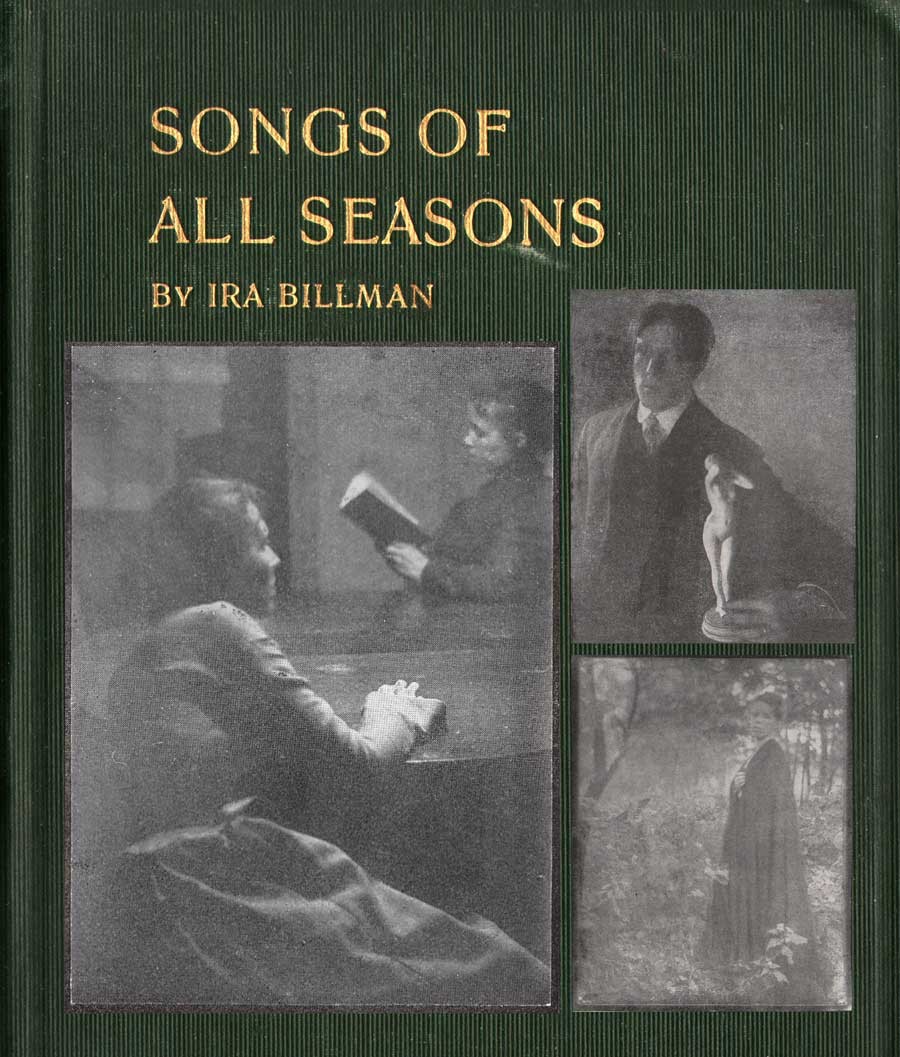 Detail: Cover for "Songs of All Seasons" by Ira Billman. The Hollenbeck Press, Indianapolis: 1904. Gilt-engraved stamped cloth: 20.4 x 13.6 cm: shown inset with representative photographs taken by Clarence White reproduced in halftone in the volume. Photo left: "The Book Lovers" (p. 181); top right: untitled man with statuette illustrating poem "The Twin Flower" (p.137); bottom right: "The Gloaming" (p. 199). Billman was Clarence White's uncle and was "one of his earliest artistic influences in his life": From: PhotoSeed Archive
Detail: Cover for "Songs of All Seasons" by Ira Billman. The Hollenbeck Press, Indianapolis: 1904. Gilt-engraved stamped cloth: 20.4 x 13.6 cm: shown inset with representative photographs taken by Clarence White reproduced in halftone in the volume. Photo left: "The Book Lovers" (p. 181); top right: untitled man with statuette illustrating poem "The Twin Flower" (p.137); bottom right: "The Gloaming" (p. 199). Billman was Clarence White's uncle and was "one of his earliest artistic influences in his life": From: PhotoSeed Archive
Photographic Illustration: a New Outlet
A newspaper clipping, believed to be from the Newark Daily Advocate in the Clarence Hudson White clipping file at the Newark, OH public library, includes the following undated (but 1903) story discussing Eben Holden in passing while concentrating on a new commission that inevitably came from it: costume-piece photographs by White similar to those he did for Lothrop for author Clara Morris’s story published in McClure’s magazine in February, 1904 entitled “Beneath the Wrinkle”:
PICTURES From Real Life by Clarence White
Forwarded On Order to a New York Magazine-Local Artist’s Latest Work.
Mr. Clarence White received a command last fall from the art department of McClure’s Magazine to illustrate Clara Morris’ new story, entitled, “Beneath the Wrinkle,” that will appear in that magazine presumably in the near future. Mr. White was to have been given all the time he wanted, but in view of the change of art editors, Mr. White was notified about three weeks ago that the illustrations would be required immediately. Mr. White at once notified the publishers that he would use all his efforts to complete them immediately, and would forward them when completed. Today the set comprising six, were forwarded and as equaly as clever and well executed as the ones made for the illustrating of the holiday edition of Eben Holden that was to have made its appearance last Christmas, but was not completed in time for that season. The ones now in progress are all local personages, done in quaint, old-fashioned garb and surroundings, recalling vividly to mind the characteristics in dress and decorations then in vogue. They show the fine and beautiful artistic temperament of Mr. White in his striking correct interpretation of dress and customs of the period in which the characters live. Mr. White deserves the honor the illustrations will surely bring to him, as he is always conscientious and painstaking in whatever he undertakes in his profession.
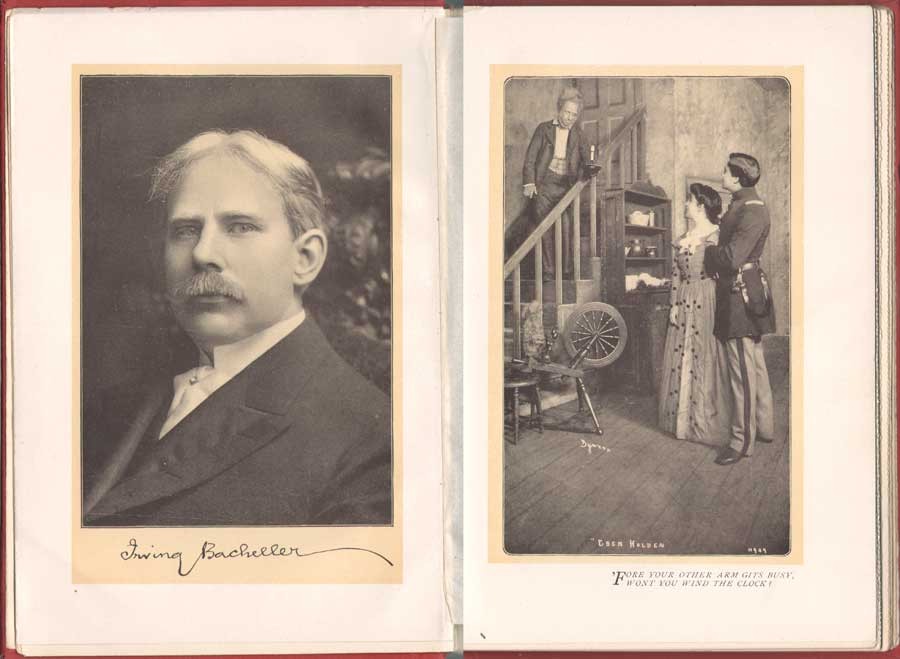 Left: Irving Bacheller, (1859-1950) American journalist and author, wrote the novel Eben Holden which sold over 1 million copies. This portrait with facsimile autograph by an unknown photographer appeared as the frontis (13.3 x 9.1 cm) to the Dramatic Edition of the book-the first illustrated edition featuring photographs of the Broadway stage production that debuted Oct. 28, 1901 and ran for only 49 performances. Right: " 'Fore your other arm gits busy, wont you wind the clock?" (14.1 x 8.4 cm) Actor E.M. Holland at left plays the role of Eben Holden, Lucille Flaven plays Hope and Earle Ryder as an American Civil War officer plays William Brower. The important New York commercial photographer Joseph Byron, (1847-1923) founder of the Byron Company (currently, the 7th & 8th generations runs Byron Photography) took stage photographs of the play at New York's Savoy Theatre with plates published in the Dramatic Edition. from: PhotoSeed Archive
Left: Irving Bacheller, (1859-1950) American journalist and author, wrote the novel Eben Holden which sold over 1 million copies. This portrait with facsimile autograph by an unknown photographer appeared as the frontis (13.3 x 9.1 cm) to the Dramatic Edition of the book-the first illustrated edition featuring photographs of the Broadway stage production that debuted Oct. 28, 1901 and ran for only 49 performances. Right: " 'Fore your other arm gits busy, wont you wind the clock?" (14.1 x 8.4 cm) Actor E.M. Holland at left plays the role of Eben Holden, Lucille Flaven plays Hope and Earle Ryder as an American Civil War officer plays William Brower. The important New York commercial photographer Joseph Byron, (1847-1923) founder of the Byron Company (currently, the 7th & 8th generations runs Byron Photography) took stage photographs of the play at New York's Savoy Theatre with plates published in the Dramatic Edition. from: PhotoSeed Archive
White Family Connections: Songs of all Seasons
During the time he received the commission for illustrating Beneath the Wrinkle in 1903, a more intimate family connection developed which allowed White the opportunity to take another series of photographic illustrations, 42 in all, published in 1904 within a slim volume of poetry titled Songs of All Seasons.
The author was nationally known poet Ira Billman, Clarence White’s uncle, the brother of his mother Phoebe Billman White. In the volume Symbolism of Light: The Photographs of Clarence H. White published in 1977 which accompanied an exhibition of White’s work at the Delaware Art Museum and International Center of Photography, White’s grandson Maynard P. White, Jr. describes Ira Billman as a major influence on Clarence and Songs:
Among the gathering of aunts and uncles that gave meaning and context to the artist’s early life was Ira Billman, his mother’s brother. “Poetic” is the word most often used to describe White’s photography, and his Uncle Ira, a poet by avocation, was one of the earliest artistic influences in his life. …Billman’s work celebrates rural America; his poems are songs to people and to nature, and they are imbued with the deep religious sentiments of his Lutheran heritage, without being mawkish or even faintly cloying. What is important for the purpose of my discussion is that Clarence White made the photographic illustrations for Songs of All Seasons, and Billman dedicated the volume to him. (7.)
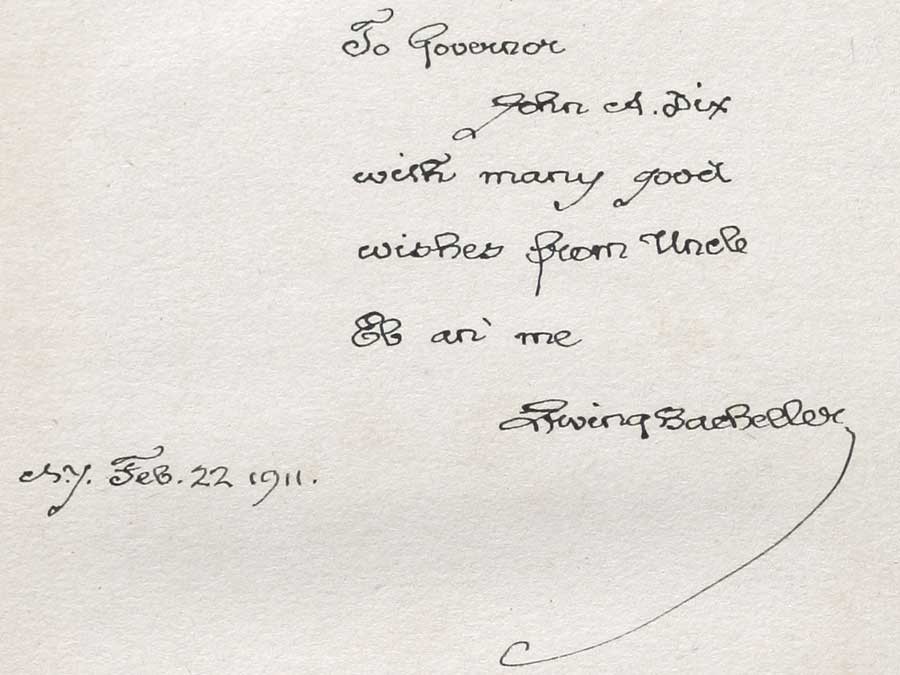 "To Governor John A. Dix with many good wishes from Uncle Eb an' me Irving Bacheller N.Y. Feb. 22 1911." This personal inscription by Bacheller to John A. Dix, then Governor of New York State, appears in a volume of Eben Holden with the imprint of Two Hundred and Seventieth Thousand, September 18, 1903, the actual year the novel was released for sale. In a 1901 newspaper article, Bacheller said the character Eben Holden was based on "a composite of my father and his hired man-a very jolly old fellow". from: PhotoSeed Archive
"To Governor John A. Dix with many good wishes from Uncle Eb an' me Irving Bacheller N.Y. Feb. 22 1911." This personal inscription by Bacheller to John A. Dix, then Governor of New York State, appears in a volume of Eben Holden with the imprint of Two Hundred and Seventieth Thousand, September 18, 1903, the actual year the novel was released for sale. In a 1901 newspaper article, Bacheller said the character Eben Holden was based on "a composite of my father and his hired man-a very jolly old fellow". from: PhotoSeed Archive
Ninety-one poems and sonnets are included in the volume. Here, The Test, a representative poem from the work:
The Test
Not what I felt will be the test
When song and fragrance filled the hour,
And all the sunshine of the blest
Unfolded me to perfect flower.
Not what I aid will be the test
When by sweet waters wound my way,
And white-haired, thoughtful hills all guessed
The word I was about to say.
Not what I did will be the test
When stunned by cry of human needs
I dreamed I was myself oppressed,
And woke to passion of great deeds.
Not what I chose will be the test
When first I saw one world in hand
Is worth two in the bush-the best
Of which it is to understand.
O! none of these will be the test,
But what God knows I would have done,
Had I been nurtured in the nest
Of one, I now condemn and shun. (8.)
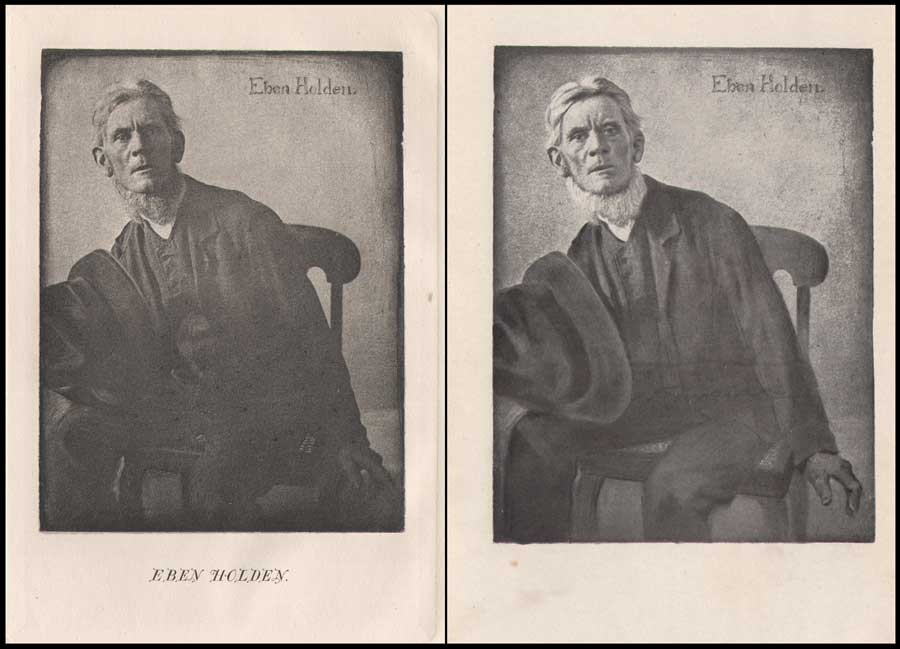 Left: Clarence H. White: American: 1902: hand-pulled photogravure: (9.7 x 7.3 cm) in: Eben Holden: A Tale of the North Country: Boston: Lothrop Publishing. (1903) Appearing as the frontis portrait in the Edition de luxe, this unknown subject was the novel's namesake: a fictional character who was a former farm-hand and main father figure for the newly orphaned William Brower serving as the narrator in the work. Right: Clarence H. White: American: 1902: halftone: (12.0 x 9.2 cm) in: Eben Holden: Harper & Brothers Publishers. (1914) Part of the Pine Tree Edition of Irving Bacheller's (Collected) Works. This heavily manipulated portrait from the original photograph by Clarence White of Eben Holden published 11 years earlier also appeared as the frontis for the first volume in the Pine Tree series. From: PhotoSeed Archive
Left: Clarence H. White: American: 1902: hand-pulled photogravure: (9.7 x 7.3 cm) in: Eben Holden: A Tale of the North Country: Boston: Lothrop Publishing. (1903) Appearing as the frontis portrait in the Edition de luxe, this unknown subject was the novel's namesake: a fictional character who was a former farm-hand and main father figure for the newly orphaned William Brower serving as the narrator in the work. Right: Clarence H. White: American: 1902: halftone: (12.0 x 9.2 cm) in: Eben Holden: Harper & Brothers Publishers. (1914) Part of the Pine Tree Edition of Irving Bacheller's (Collected) Works. This heavily manipulated portrait from the original photograph by Clarence White of Eben Holden published 11 years earlier also appeared as the frontis for the first volume in the Pine Tree series. From: PhotoSeed Archive
Pictorial Illustration for Photography a Growing Field
By 1904, esteemed critic Sadakichi Hartman, writing in Leslie’s Weekly, weighed in on the growing use of photography for book illustration:
”…and Clarence H. White, of Newark, O., has found a new opening for photography in the illustration of books. His illustrations for “Eben Holden” have attracted wide and deserved attention.” (9.)
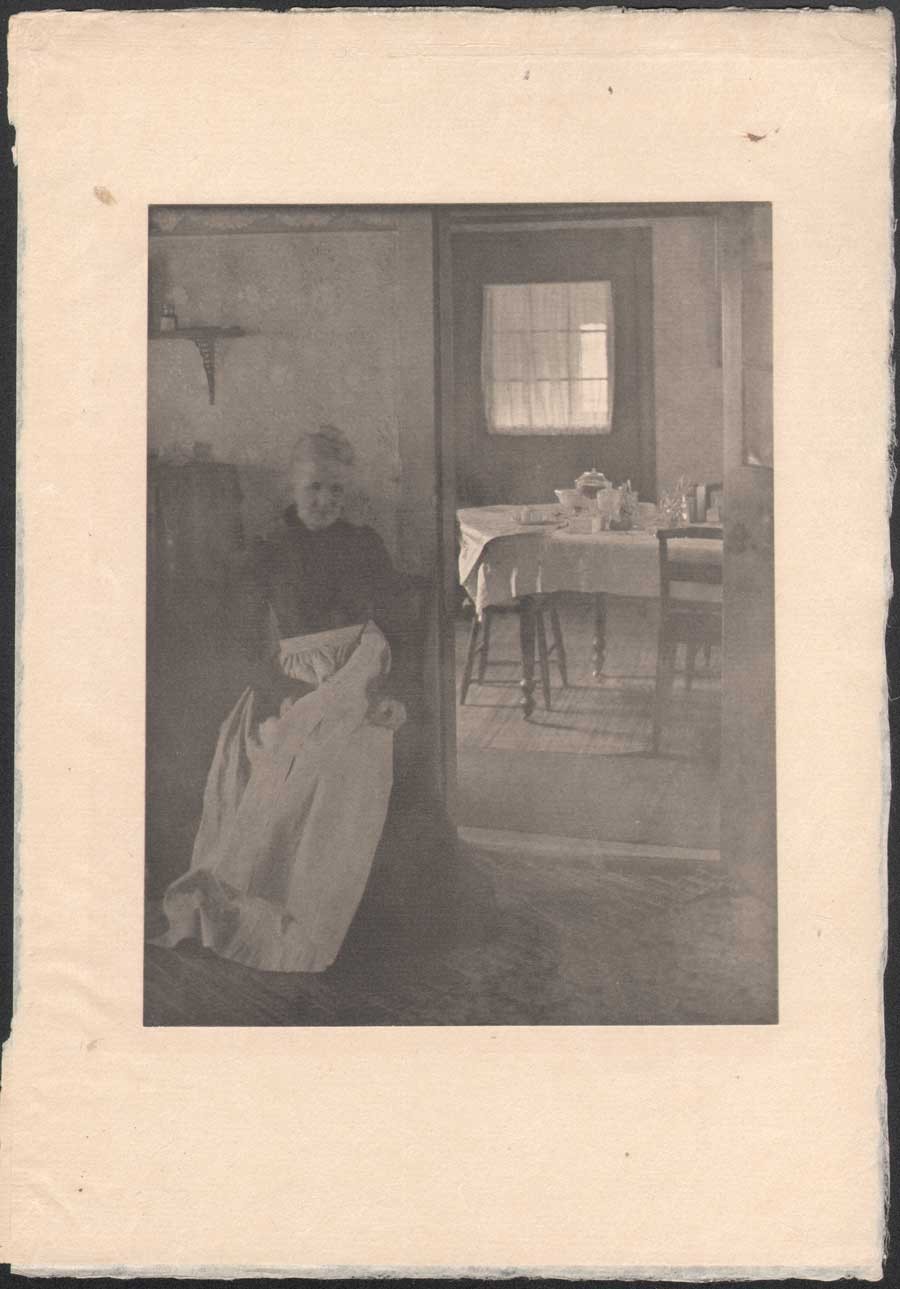 Clarence H. White: American: 1902: "Illustration to "Eben Holden"" (1903) hand-pulled photogravure: (tipped image:19.7 x 15.0 cm | Japan paper support: 30.5 x 21.0 cm) in: Camera Work III. (1903) Two plates in the Edition de luxe of Eben Holden: "How much was that a yard ?" (seen in this post-CW IX: 1905) and this one: "Mother was living in the old home alone"-an interior portrait of the photographer's mother Phoebe Billman White (1845-1920) were also published as photogravures in Camera Work. From: PhotoSeed Archive
Clarence H. White: American: 1902: "Illustration to "Eben Holden"" (1903) hand-pulled photogravure: (tipped image:19.7 x 15.0 cm | Japan paper support: 30.5 x 21.0 cm) in: Camera Work III. (1903) Two plates in the Edition de luxe of Eben Holden: "How much was that a yard ?" (seen in this post-CW IX: 1905) and this one: "Mother was living in the old home alone"-an interior portrait of the photographer's mother Phoebe Billman White (1845-1920) were also published as photogravures in Camera Work. From: PhotoSeed Archive
And later that year, citing White’s involvement with Eben Holden while writing in the Photographic Times Bulletin, Hartman brought up the potential financial rewards possible for pictorial photographer in this new field:
“The only way to approximate a market value of pictorial prints is to investigate how much they might bring on the average, if offered for sale as illustrations. There is lately a decided demand for photographic illustrations, and consequently a certain standard price in vogue. The pictorialist, of course, and perhaps with some right, aspires to illustrator’s prices (i.e., $50-$100 for the full page of a magazine), but he has never reached it, with the one exception of Clarence H. White, who is said to have received several hundred dollars for his series of “Eben Holden” illustrations.” (10.)
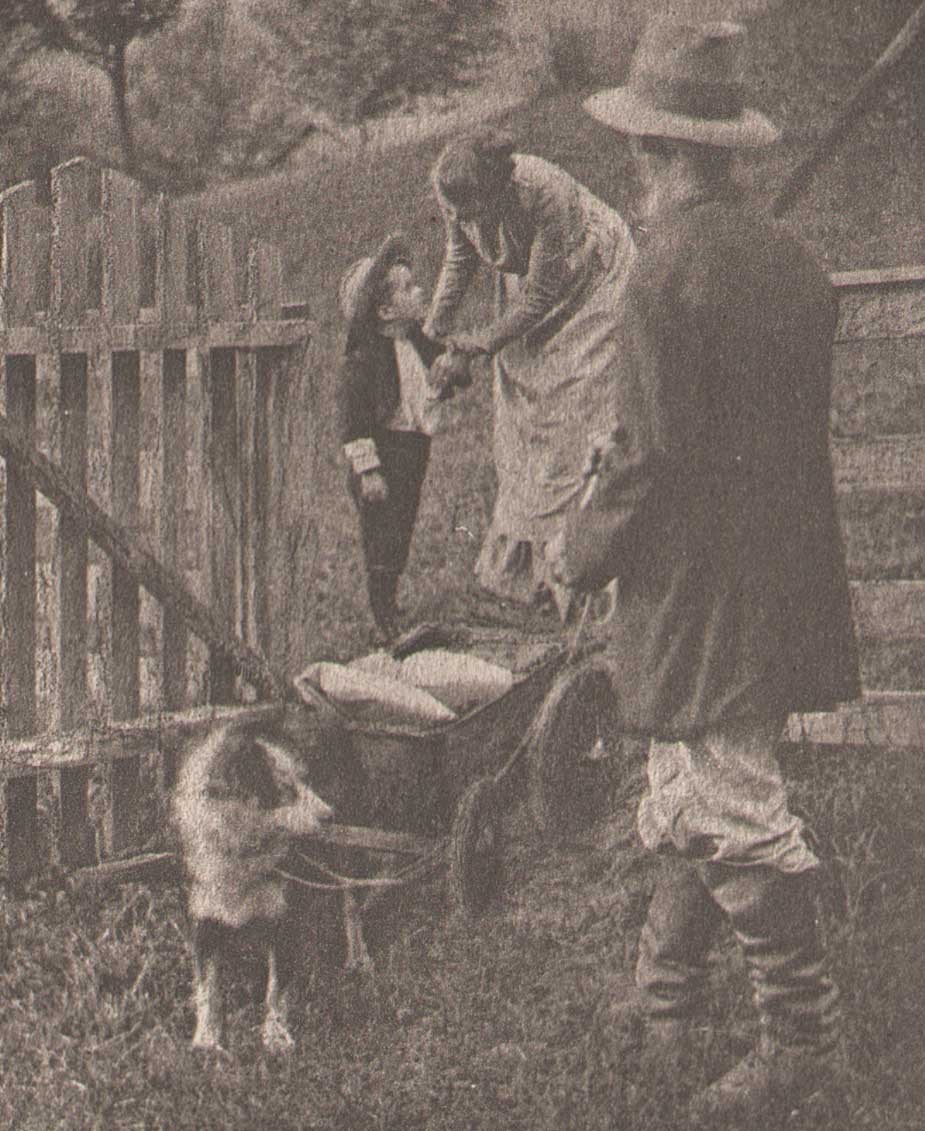 Detail: "Tucked some cookies into my pocket" : Clarence H. White: American: 1902: hand-pulled photogravure plate (11.9 x 7.3 cm) included with Edition de luxe of Eben Holden (1903): Lothrop Publishing, Boston. The young orphan William Brower is possibly modeled here by the photographer's son Maynard Pressley White (b. 1896) and his wife Jane Felix. (1869-1943) The scene shows Brower preparing to head out into the wilderness in a dog-pulled cart with Eben Holden at right. From the novel: "Our hostess met us at the gate and the look of her face when she bade us good-by and tucked some cookies into my pocket, has always lingered in my memory and put in me a mighty respect for all women." From: PhotoSeed Archive
Detail: "Tucked some cookies into my pocket" : Clarence H. White: American: 1902: hand-pulled photogravure plate (11.9 x 7.3 cm) included with Edition de luxe of Eben Holden (1903): Lothrop Publishing, Boston. The young orphan William Brower is possibly modeled here by the photographer's son Maynard Pressley White (b. 1896) and his wife Jane Felix. (1869-1943) The scene shows Brower preparing to head out into the wilderness in a dog-pulled cart with Eben Holden at right. From the novel: "Our hostess met us at the gate and the look of her face when she bade us good-by and tucked some cookies into my pocket, has always lingered in my memory and put in me a mighty respect for all women." From: PhotoSeed Archive
This additional source of significant money to Clarence White and his young family through these illustration commissions invariably gave him additional confidence in his abilities as a photographer and financial peace of mind to eventually make his way to New York City, leaving Newark in 1906. It is also not a stretch to infer White’s own life mimicked the storyline of hard work that can earn the “American Dream” found between the pages of Eben Holden. Although the critic for the New York Times reviewing the play at New York’s Savoy theater didn’t care too much for the acting:
”As an exhibition of dramatic craft “Eben Holden” is hardly worth serious consideration“…
he did, a few paragraphs later, write the production had a few redeeming qualities:
But, despite its defects, the play is wholesome; it is redolent of the woods and the fields, and it provides the opportunity for an evening of entertainment that need not be looked back upon with regret. (11.)
No doubt Clarence White, had he been in attendance watching the play inside Newark’s Auditorium that 1904 November evening, would have agreed with these last sentiments of the big city critic, marveling and grinning to himself in the darkened hall while taking in the surreal juxtaposition that art imitating life can bring about.
Notes:
1. (White, Clarence H.) excerpt: An Annotated Bibliography on Pictorial Photography: Selected Books from the Library of Christian A. Peterson: Laurence McKinley Gould Library: Carleton College: Northfield, Minnesota: 2004
2. ABE listing: 120407. Besides multiple copies held by PhotoSeed, other known copies are in the Library of Congress, MOMA and Photogravure.com.
3. The Bookseller-Devoted to the Book and News Trade: Chicago: January, 1902: p. 28
4. Peter C. Bunnell: Inside the Photograph: writings on Twentieth-Century Photography: Aperture Foundation: 2006: p. 47
5. Clarence H. White : a personal portrait: Maynard Pressley White: Ph.D. dissertation, University of Delaware, 1975: pp. 79-80
6. see Beaumont Newhall’s Photography: A Short Critical History, from 1938, lists Eben Holden with the White illustrations as being published in 1903 on p. 215
7. excerpt: see Symbolism of Light: 1977: p. 7
8. Songs of All Seasons: Ira Billman: Indianapolis: The Hollenbeck Press: 1904: p. 65
9. excerpt: Advances in Artistic Photography: Sidney Allan: in: Leslie’s Weekly: April 28, 1904: New York: p. 388
10. excerpt: from: What is the Commercial Value of Pictorial Prints?: Sidney Allen: in: The Photographic Times Bulletin: December, 1904: p. 539
11. excerpt: review: “Eben Holden” at the Savoy: The New York Times, October 29, 1901
New Year Salute
Posted January 2015 in PhotoSeed, Significant Photographers, Significant Photographs, Typography
Genre meets Genius
Posted November 2014 in Engraving, New Additions, Painters|Photographers, Significant Photographers, Typography
Although long forgotten, amateur photographer John E. Dumont (1856-1944) figures prominently in the early years of American pictorial photography. However, a professional and better known acquaintance of his may change our understanding after my discovery of a small label on the back of a Dumont print made its’ way into the archive.
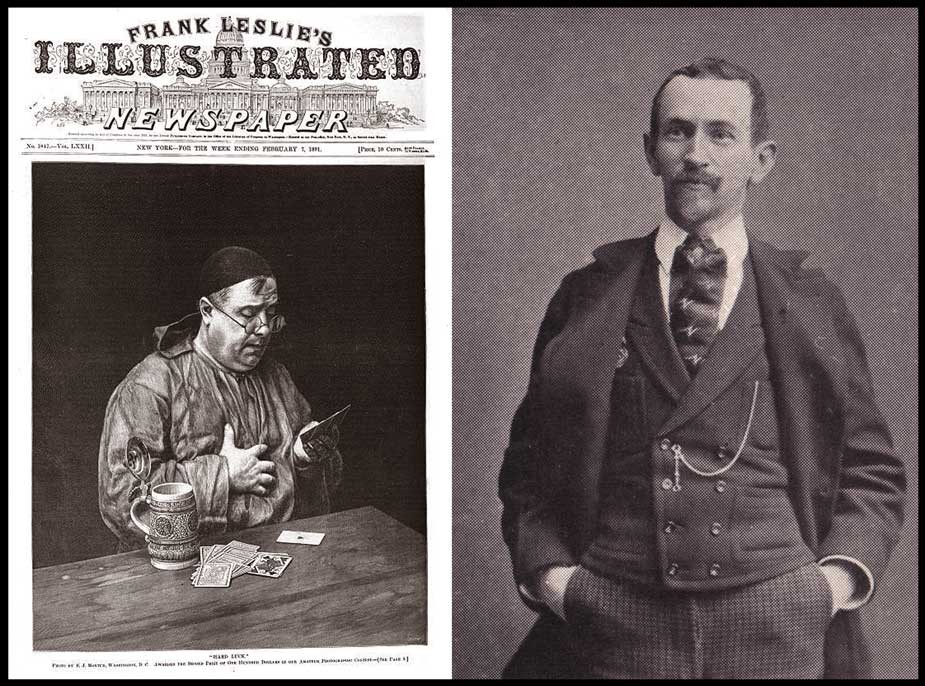 Left: "Hard Luck", showing a monk playing a losing hand of cards, was most likely taken by John E. Dumont in 1890. Shown here as the cover illustration of Frank Leslie's Illustrated Newspaper for Feb. 7, 1891, it is reproduced as a wood engraving from the original photograph, and earned Dumont a second place award and $100.00 in Leslie's Amateur Photographic Contest which closed in January, 1891. Dumont went on to copyright "Hard Luck" in 1892. (original from Pennsylvania State University) Right: Halftone portrait of photographer John E. Dumont of Rochester, New York by unknown photographer. 6.3 x 4.7 cm. Reproduced as part of a series of portraits of "Prominent Amateur Photographers" in the Nov., 1893 issue of the American Amateur Photographer journal. (p. 513) : from: PhotoSeed Archive
Left: "Hard Luck", showing a monk playing a losing hand of cards, was most likely taken by John E. Dumont in 1890. Shown here as the cover illustration of Frank Leslie's Illustrated Newspaper for Feb. 7, 1891, it is reproduced as a wood engraving from the original photograph, and earned Dumont a second place award and $100.00 in Leslie's Amateur Photographic Contest which closed in January, 1891. Dumont went on to copyright "Hard Luck" in 1892. (original from Pennsylvania State University) Right: Halftone portrait of photographer John E. Dumont of Rochester, New York by unknown photographer. 6.3 x 4.7 cm. Reproduced as part of a series of portraits of "Prominent Amateur Photographers" in the Nov., 1893 issue of the American Amateur Photographer journal. (p. 513) : from: PhotoSeed Archive
Established in business beginning in 1881 in Rochester, New York as a wholesale merchandise and grocery broker specializing in items like sugars, teas, and coffees, Dumont took up photography in 1884 and was soon entering and winning awards in photographic salons around the world.
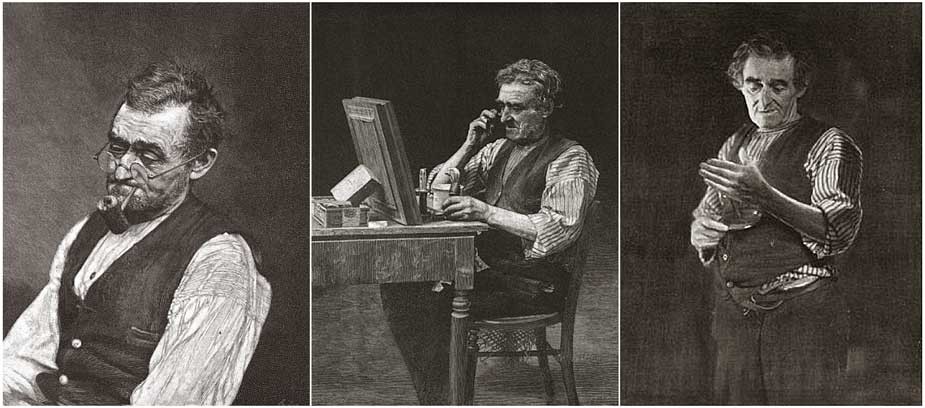 Taken in 1887, photographer John E. Dumont of Rochester, New York made this series of genre portrait photographs of a gentleman he described as "an old man who used to peddle oranges around the streets and offices in this city". Left: "A Quite Pipe": woodcut engraved from a copyright photograph from Leslie's Illustrated Newspaper Amateur Photographic Contest: published Jan., 17, 1891. Middle: "The Old Shaver": woodcut engraved from a copyright photograph from Leslie's Illustrated Newspaper Amateur Photographic Contest: published Jan., 24, 1891. Right: "The Toiler's Good-Night" : woodcut engraved from a copyright photograph illustrating a poem from Leslie's Illustrated Weekly: published Dec., 14, 1893: originals from Pennsylvania State University
Taken in 1887, photographer John E. Dumont of Rochester, New York made this series of genre portrait photographs of a gentleman he described as "an old man who used to peddle oranges around the streets and offices in this city". Left: "A Quite Pipe": woodcut engraved from a copyright photograph from Leslie's Illustrated Newspaper Amateur Photographic Contest: published Jan., 17, 1891. Middle: "The Old Shaver": woodcut engraved from a copyright photograph from Leslie's Illustrated Newspaper Amateur Photographic Contest: published Jan., 24, 1891. Right: "The Toiler's Good-Night" : woodcut engraved from a copyright photograph illustrating a poem from Leslie's Illustrated Weekly: published Dec., 14, 1893: originals from Pennsylvania State University
Specializing in genre scenes, his photographs were published frequently, reaching a high point when his well known study of a monk playing a losing hand of cards titled Hard Luck was published as the cover illustration (converted to a wood engraving) for Frank Leslie’s Illustrated Newspaper in early 1891, the same year he won a grand diploma at the groundbreaking Vienna Salon of Photographic Art, the highest accolade awarded for the very few American entrants whose work was even accepted, including the now venerable Alfred Stieglitz, who had only come back to America from Europe the year before.
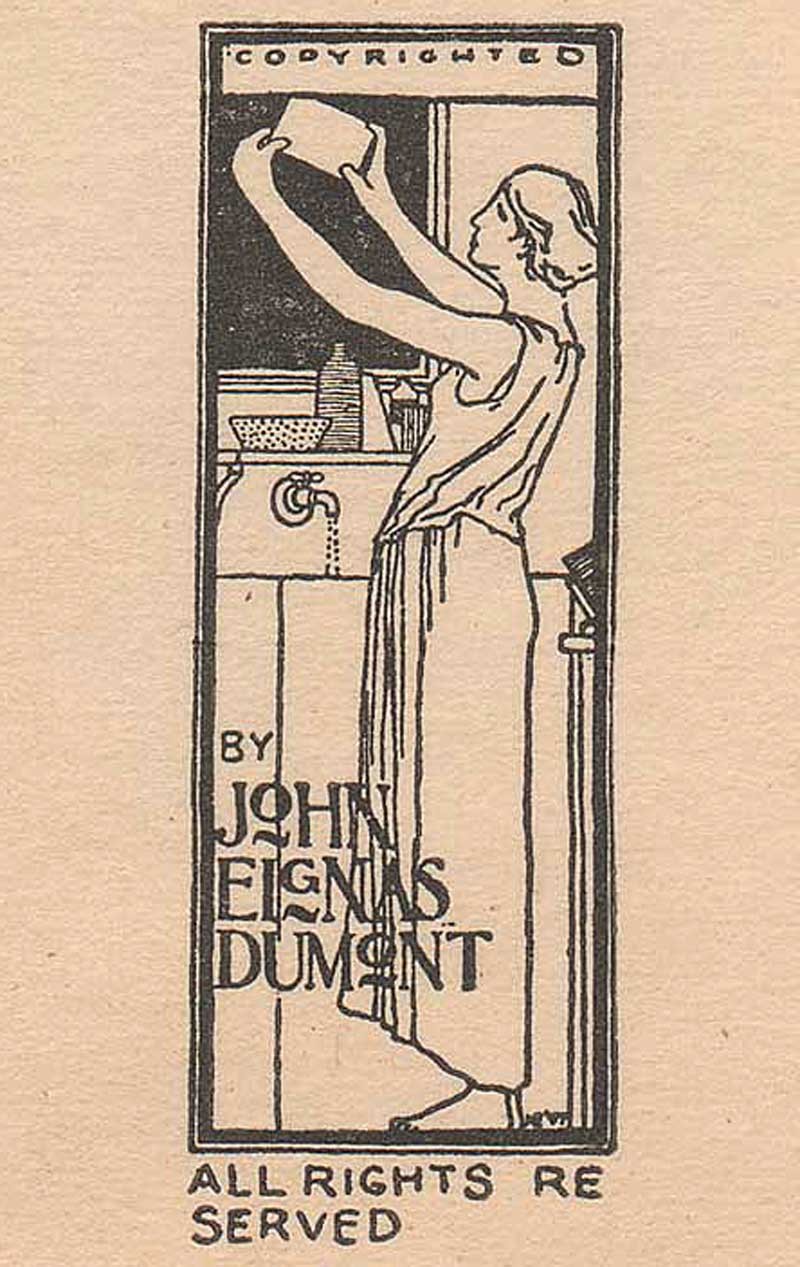 Artist: Harvey Ellis, American: 1897: medium: wood engraving: subject: copyright label for amateur American photographer John Eignas Dumont. Plate intended to represent "the genius of photography surrounded by the accessories of the "dark room." Design: 3.4 x 1.3 cm | Label: 7.0 x 4.5 cm. Label is a variant of an ex libris bookplate Ellis designed for Dumont. from: PhotoSeed Archive
Artist: Harvey Ellis, American: 1897: medium: wood engraving: subject: copyright label for amateur American photographer John Eignas Dumont. Plate intended to represent "the genius of photography surrounded by the accessories of the "dark room." Design: 3.4 x 1.3 cm | Label: 7.0 x 4.5 cm. Label is a variant of an ex libris bookplate Ellis designed for Dumont. from: PhotoSeed Archive
It was therefore a delightful discovery which took place for me recently after a signed Dumont carbon print of The Dice Players exhibited in the Royal Photographic Societies’ annual salon the same year as the Vienna exhibition was acquired for the archive. But what makes it special for the confluence of art photography and evidence a new incarnation of the English Arts & Crafts movement had taken hold after arriving on American shores was a later 1897 copyright label affixed to the rear of the mounted print. A design featuring an Art-Nouveau style woodcut engraving of a woman in a darkroom holding up a glass plate, I soon discovered it was the work of noted American artist, architect and designer Harvey Ellis. (1852-1904)
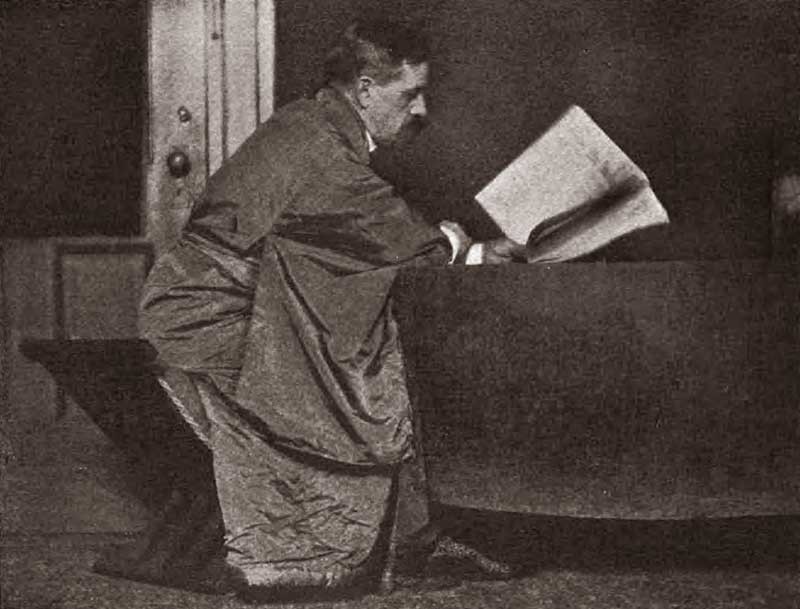 Photographic portrait of American artist, architect and designer Harvey Ellis. (1852-1904) unknown photographer: reproduced as halftone and published in the Dec., 1908 issue of The Architectural Review illustrating article on Ellis by Claude Bragdon titled Harvey Ellis: A Portrait Sketch: p. 173. Original from The University of Michigan
Photographic portrait of American artist, architect and designer Harvey Ellis. (1852-1904) unknown photographer: reproduced as halftone and published in the Dec., 1908 issue of The Architectural Review illustrating article on Ellis by Claude Bragdon titled Harvey Ellis: A Portrait Sketch: p. 173. Original from The University of Michigan
Never heard of him? Today, Ellis seems only to be remembered for the brief work he did in the last months of his life in 1903 for among other things, designing mission-style furniture and interior renderings of Craftsman homes in the Syracuse, New York-based architecture department for his American employer, Gustav Stickley, (1858-1942) the leader of the nascent American Arts and Crafts movement. But this is far from a full portrait of Ellis. A contemporary- architect, author, and theater designer Claude Bragdon- (1866-1946) gave a fuller account of Harvey Ellis in a posthumous outline for the December, 1908 issue of The Architectural Review. A few excerpts:
HARVEY ELLIS was a genius. This is a statement which may excite only incredulity in the minds of the many who never heard his name or knew him only by his published drawings, but it will have the instant concurrence of the few who knew well the man himself. There is the genius which achieves, and the genius which inspires others to achievement. Had it not been for the evil fairy (alcohol-editor) which presided at his birth and ruled his destiny, Harvey Ellis might have been numbered among the former; that is, he might have been a prominent, instead of an obscure, figure in that aesthetic awakening of America, now going on, of which he was among the pioneers; but even so he exercised an influence more potent than some whose names are better remembered. (p. 173)
 Although many designs by Harvey Ellis were never realized in the physical form, there are notable exceptions. The Compton Hill Water Tower in Reservoir Park, St. Louis, MO, is one landmark still standing. Topping out at 179 feet, (55 m) the structure was designed by Ellis in 1896 or 97 while employed by the St. Louis architectural firm of George R. Mann and Edmond J. Eckel, and built in 1898 in the French Romanesque style of rusticated limestone and buff brick and finished in terra cotta. The tower was decommissioned in 1929 and placed on the National Register of Historic Places in 1972. Photographer: Leo Kraft, American: ca. 1915: gelatin silver prints pasted in album: left: 12.1 x 6.9 cm | right: 9.8 x 6.3 cm : support: 17.6 x 25.2 cm. from: PhotoSeed Archive
Although many designs by Harvey Ellis were never realized in the physical form, there are notable exceptions. The Compton Hill Water Tower in Reservoir Park, St. Louis, MO, is one landmark still standing. Topping out at 179 feet, (55 m) the structure was designed by Ellis in 1896 or 97 while employed by the St. Louis architectural firm of George R. Mann and Edmond J. Eckel, and built in 1898 in the French Romanesque style of rusticated limestone and buff brick and finished in terra cotta. The tower was decommissioned in 1929 and placed on the National Register of Historic Places in 1972. Photographer: Leo Kraft, American: ca. 1915: gelatin silver prints pasted in album: left: 12.1 x 6.9 cm | right: 9.8 x 6.3 cm : support: 17.6 x 25.2 cm. from: PhotoSeed Archive
… “There’s one type of mind,” Harvey remarked, “which would discover a symbol of the Trinity in three angles of a rail fence; and another which would criticize the detail of the Great White Throne itself.” Symmetry (the love of which is a sure index of the Classic mind) was his particular abhorrence. “Not symmetry, but balance,” he used to say. (p. 175)
Transient, and an unconventional architect and designer for his day, Ellis moved about the country working for firms in Minneapolis and St. Louis before returning to his native Rochester in 1893. It was sometime after this period that he most likely encountered and made the friendship of Dumont. In 1897, both became founding members of the Rochester Arts and Crafts Society, with Ellis serving as first president. That year, Dumont commissioned Ellis to design an ex libris book plate for him which was reworked slightly and reduced in size for use as a photographic copyright label-an example of which I found affixed to the verso of The Dice Players.
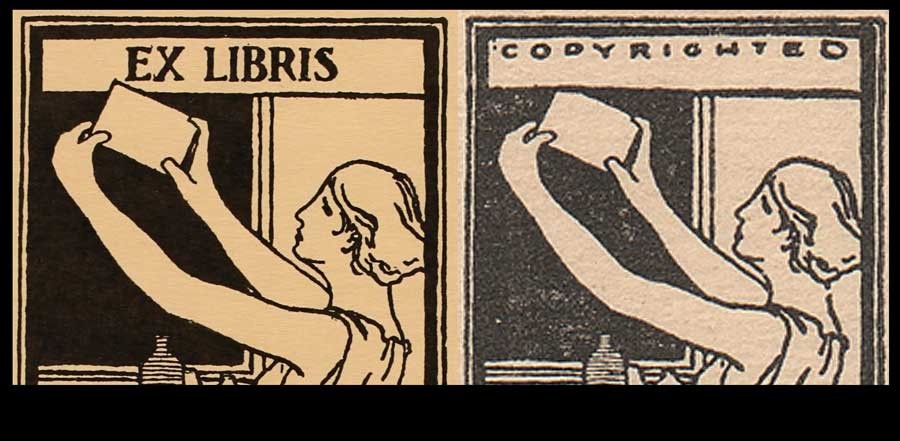 Details: Harvey Ellis: 1897: wood engraving: Ex Libris bookplate and Copyright label for American amateur photographer John Eignas Dumont : Left: bookplate: 9.4 x 4.1 cm: Jensen Tusch Collection- Frederikshavn Kunstmuseum & Exlibrissamling- Denmark: Right: copyright label: 3.4 x 1.3 cm | 7.0 x 4.5 cm : from: PhotoSeed Archive
Details: Harvey Ellis: 1897: wood engraving: Ex Libris bookplate and Copyright label for American amateur photographer John Eignas Dumont : Left: bookplate: 9.4 x 4.1 cm: Jensen Tusch Collection- Frederikshavn Kunstmuseum & Exlibrissamling- Denmark: Right: copyright label: 3.4 x 1.3 cm | 7.0 x 4.5 cm : from: PhotoSeed Archive
In 1899, the original bookplate was described in the pages of the London Journal of the Ex Libris Society:
DUMONT BOOK-PLATES.
By the kindness of a member we are enabled to give an illustration of the book-plate of Mr. John E. Dumont, of Rochester, N.Y., designed by Mr. Harvey Ellis, of the same city. Mr. Dumont is a leading photographer in America, and his works are well known in England. The plate represents the genius of photography surrounded by the accessories of the “dark room.” Mr. Ellis, the designer, is a prominent architect and a water-colour artist of repute. The plate, here given, is graceful in design and execution. (p. 128)
The friendship between Dumont and Ellis extended to 1903. Now serving as president of the Rochester Camera Club, (founded 1889) Dumont was joined by Ellis and future American Photo-Secession member and club member Albert Boursalt while acting as judges for the club’s inaugural photographic exhibition in the newly erected Eastman Building on the campus of the Mechanics Institute. (which became RIT) From March 30 to April 11, over 200 framed photographs were displayed in a building made possible by Rochester philanthropist and Kodak head George Eastman. An account of the exhibition was published, along with the role of Ellis as judge, in the May, 1903 issue of the American Amateur Photographer. An excerpt:
It is stated by Mr. Dumont, who is most familiar with all of the photographic exhibits ever held here, that this of the Rochester Camera Club is by far the best, largest and most meritorious of any ever held in Rochester. Harvey Ellis, whose ability as an art critic is recognized by all, says that there are just as good pictures shown by the local exhibitions as any from out of the city, and that more than one half of the pictures hung are as good as those shown in any of the salons in the country, not excepting New York and Philadelphia, which rank among the highest in merit. (pp. 223-24)
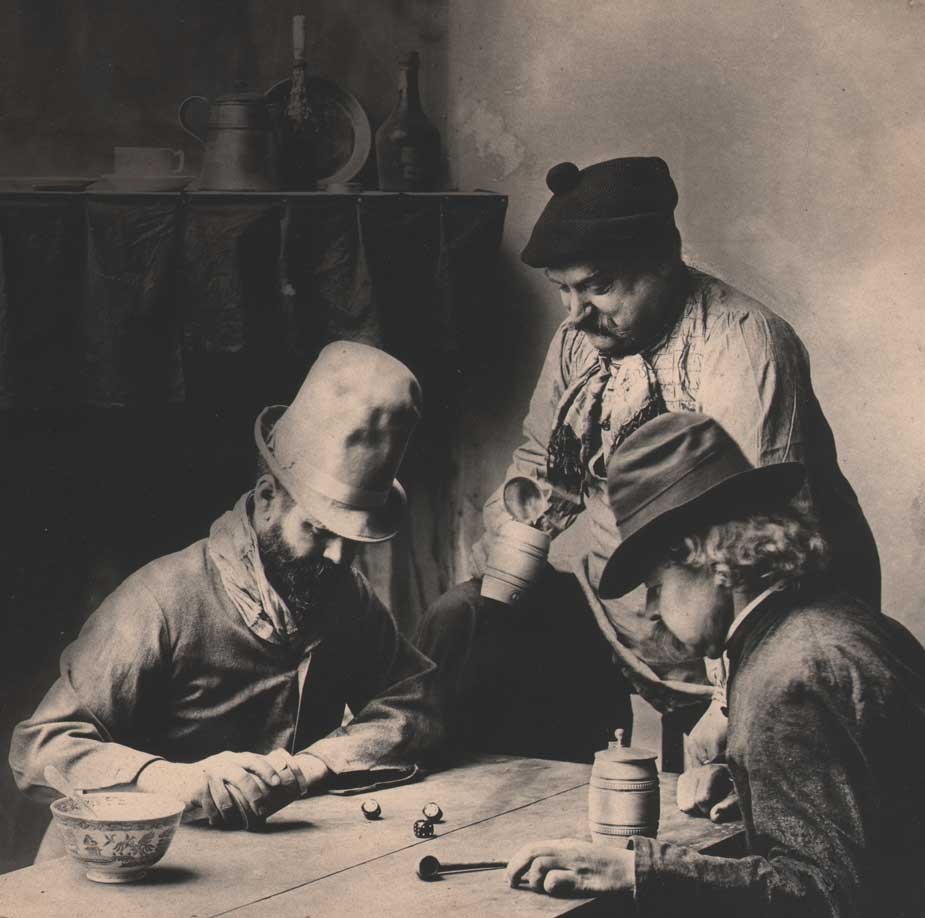 Detail: "The Dice Players": 1891: print ca. 1897 or later: John E. Dumont: carbon print: 29.2 x 25.1 cm (flush mounted to board) : This classic genre photograph by Dumont showing a group of men playing dice (possibly the con game "chuck-a-luck") was first shown in the annual exhibition of the Royal Photographic Society in 1891 and further earned him a gold medal in another contest the same year sponsored by the English journal the Amateur Photographer. From: PhotoSeed Archive
Detail: "The Dice Players": 1891: print ca. 1897 or later: John E. Dumont: carbon print: 29.2 x 25.1 cm (flush mounted to board) : This classic genre photograph by Dumont showing a group of men playing dice (possibly the con game "chuck-a-luck") was first shown in the annual exhibition of the Royal Photographic Society in 1891 and further earned him a gold medal in another contest the same year sponsored by the English journal the Amateur Photographer. From: PhotoSeed Archive
But what immediately followed in the new Eastman Building from April 15-25, 1903: an “Exhibition of Art Craftsmanship”, featuring work from Gustav Stickley’s Craftsman Workshops, (1.) would turn out to be more significant in the overall advancement of the American Arts and Crafts movement compared to the photographic exhibition. A motivating factor perhaps? As it turned out, Harvey Ellis organized the Craftsman show, joining the Stickley firm a month later where he finished a remarkable career.
1. Historical Background: R.I.T. online resource accessed Nov., 2014: “In 1902 the Department of Decorative Arts and Crafts was established at Mechanics Institute under the leadership of Theodore Hanford Pond. An “Exhibition of Art Craftsmanship”, featuring the work of Gustav Stickley’s Craftsman Workshops, was presented in the Mechanics Institute’s Eastman Building, 15-25 April 1903.”
